My most current blog entry:
Entries in Castles of Scotland (35)
A Week-End Away: St. Andrews and Sterling Castle
 Saturday, November 23, 2013 at 5:37PM
Saturday, November 23, 2013 at 5:37PM St. ANDREWS:
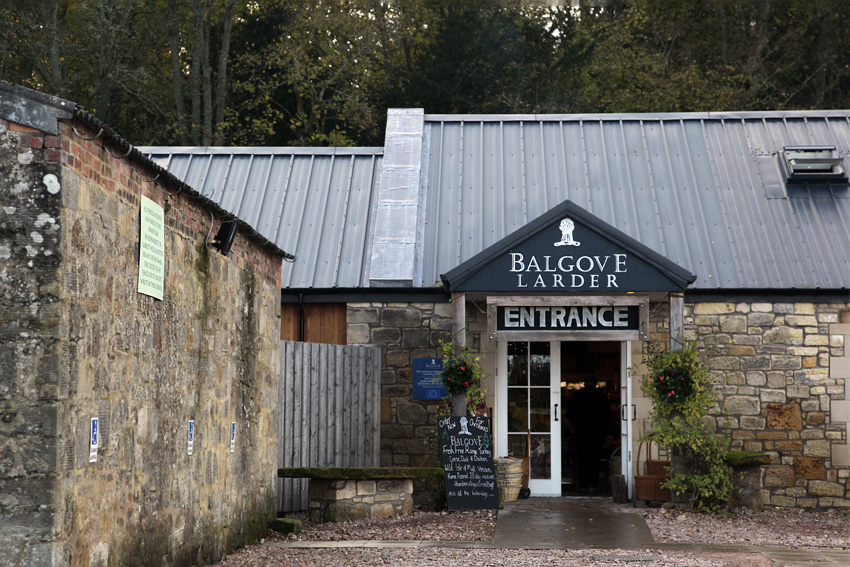 We vowed to spend at least one night a month away from our house, and November was quickly passing. We decided on a short week-end to the ancient university town of St. Andrews, just an hour-and-a-half away. We stopped at one of the great features of the Scottish highways, the Farm Store, for some stocking up of breads, cheeses, and chutneys.
We vowed to spend at least one night a month away from our house, and November was quickly passing. We decided on a short week-end to the ancient university town of St. Andrews, just an hour-and-a-half away. We stopped at one of the great features of the Scottish highways, the Farm Store, for some stocking up of breads, cheeses, and chutneys.
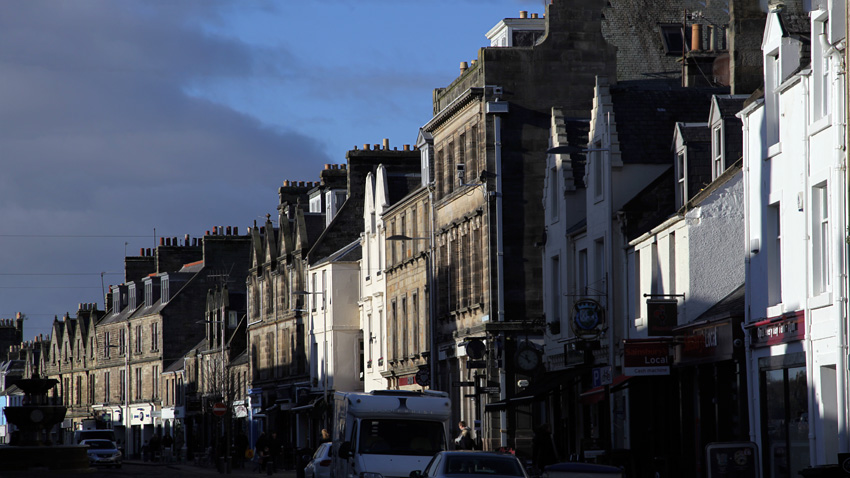 St. Andrews is another amazing old Scottish town. In addition, it is the home of St. Andrews University (celebrating its 600th yea, as well as having the title of "the home of golf" with the Royal and Ancient Golf Club just at the edge of town. For a small town it has a lot to see and do . . . including some pretty good shopping.
St. Andrews is another amazing old Scottish town. In addition, it is the home of St. Andrews University (celebrating its 600th yea, as well as having the title of "the home of golf" with the Royal and Ancient Golf Club just at the edge of town. For a small town it has a lot to see and do . . . including some pretty good shopping.
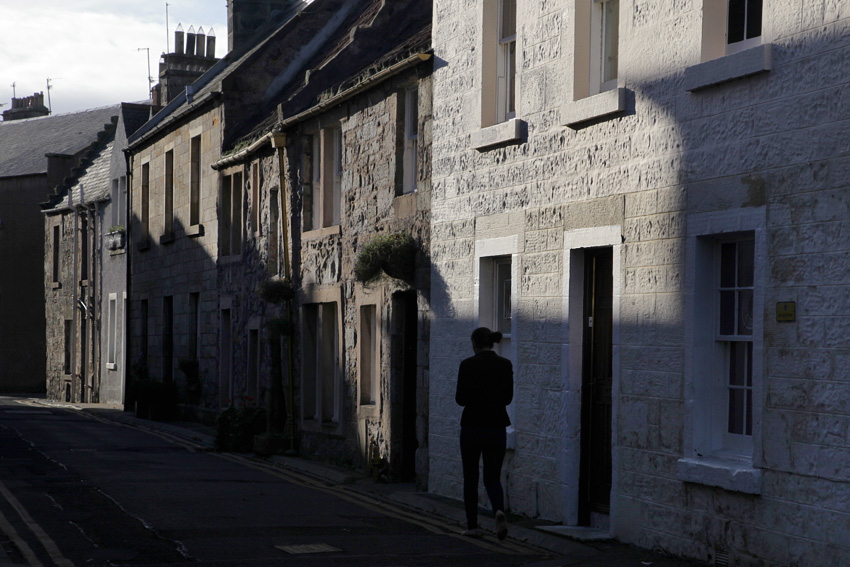 St. Andrews is a wonderful walking around town. Great winter light and deep shadows.
St. Andrews is a wonderful walking around town. Great winter light and deep shadows.
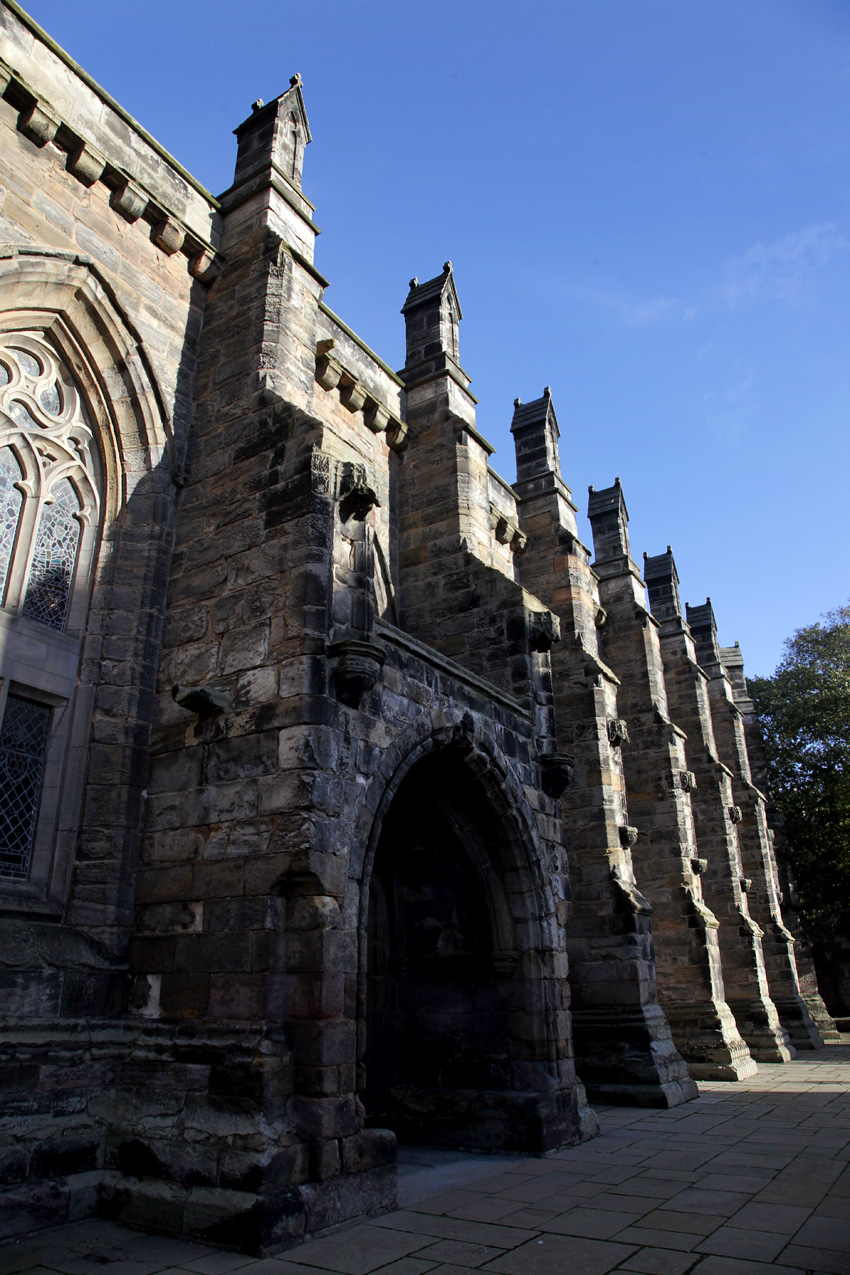 The main thoroughfare runs down to the university and has some fine churches.
The main thoroughfare runs down to the university and has some fine churches.
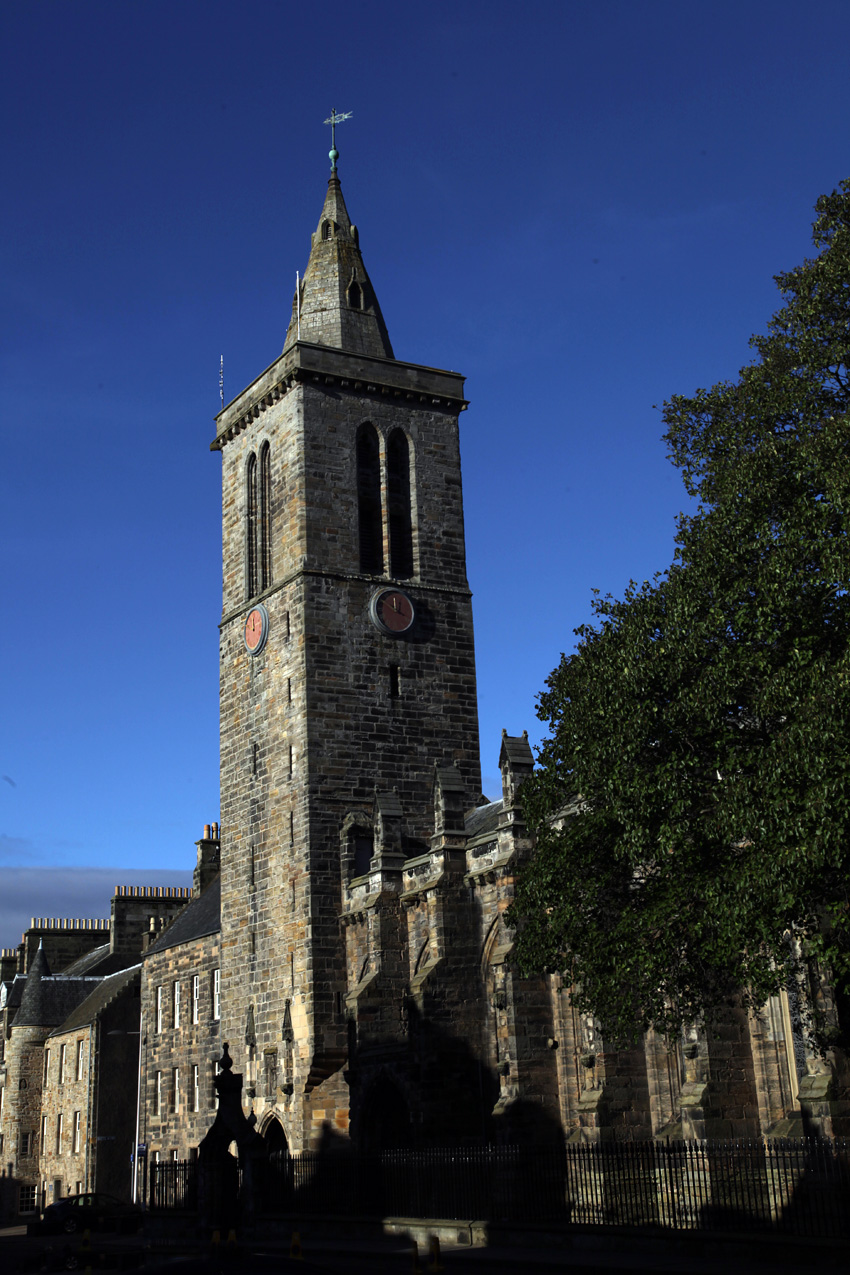 This is the tower of Holy Trinity at St. Andrews University.
This is the tower of Holy Trinity at St. Andrews University.
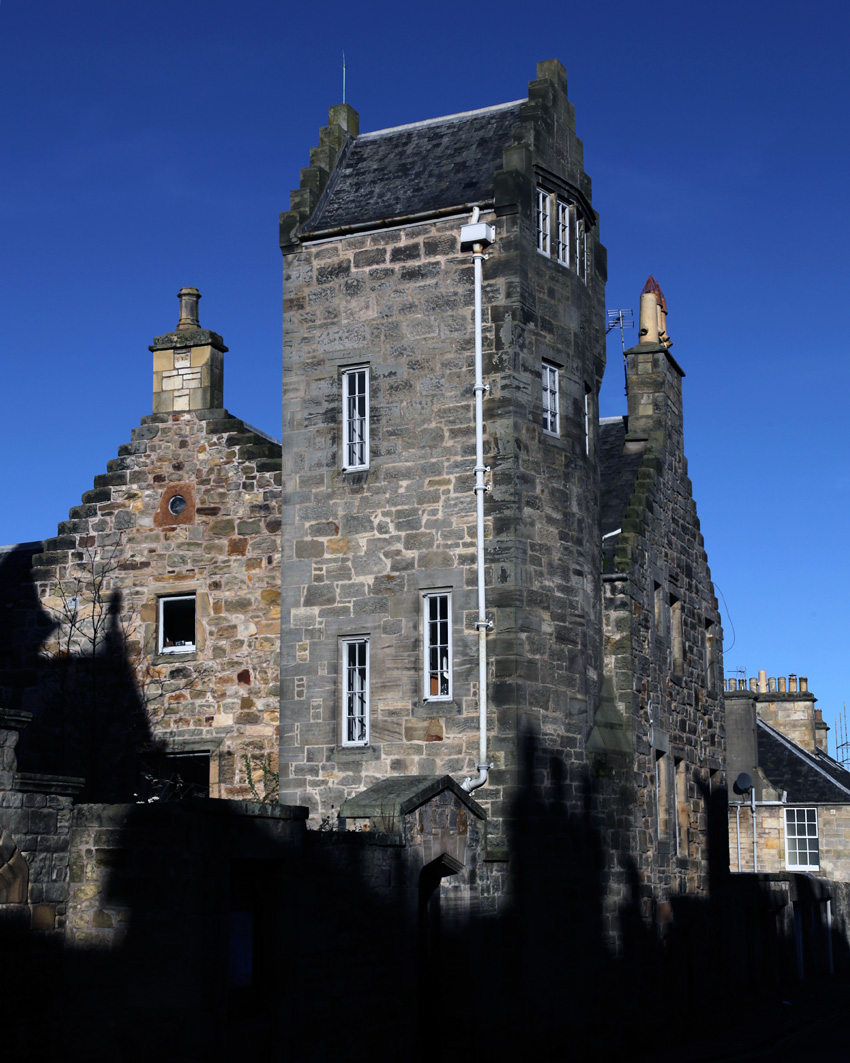 There is a great collection of fanciful architecture befitting a great university town.
There is a great collection of fanciful architecture befitting a great university town.
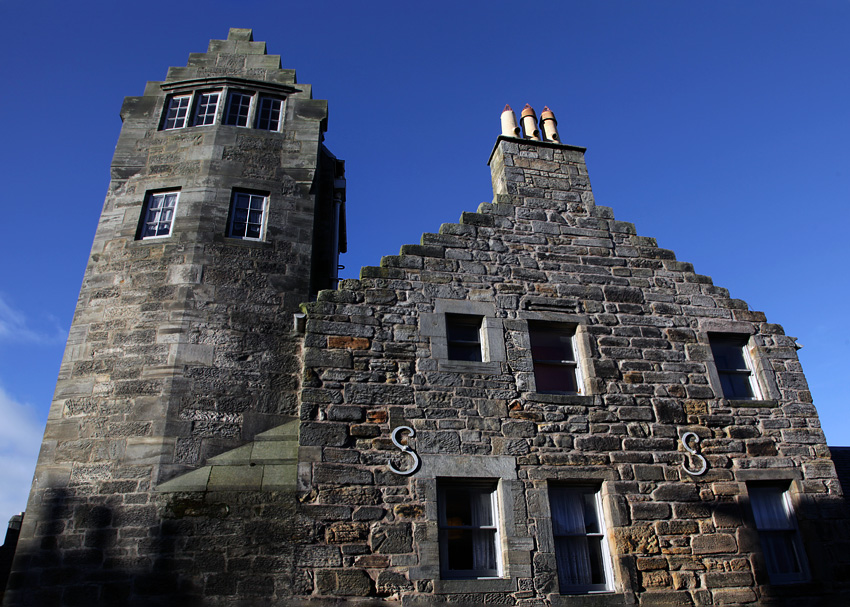 This old dwelling is cracked from top to bottom, but there are iron stays holding it together. Ah, student housing!
This old dwelling is cracked from top to bottom, but there are iron stays holding it together. Ah, student housing!
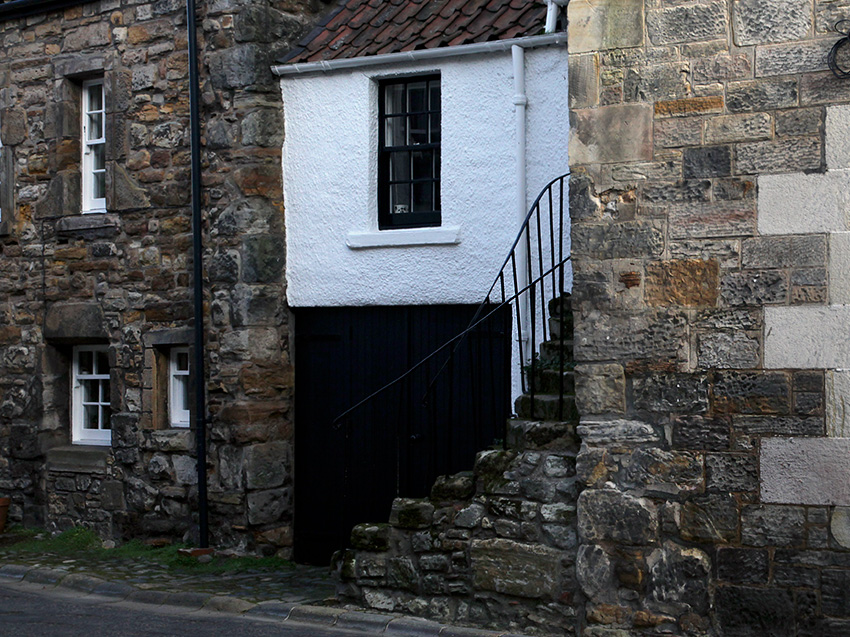 I wandered the dark, shady, photogenic medieval lanes in search of the textures Time had left behind.
I wandered the dark, shady, photogenic medieval lanes in search of the textures Time had left behind.
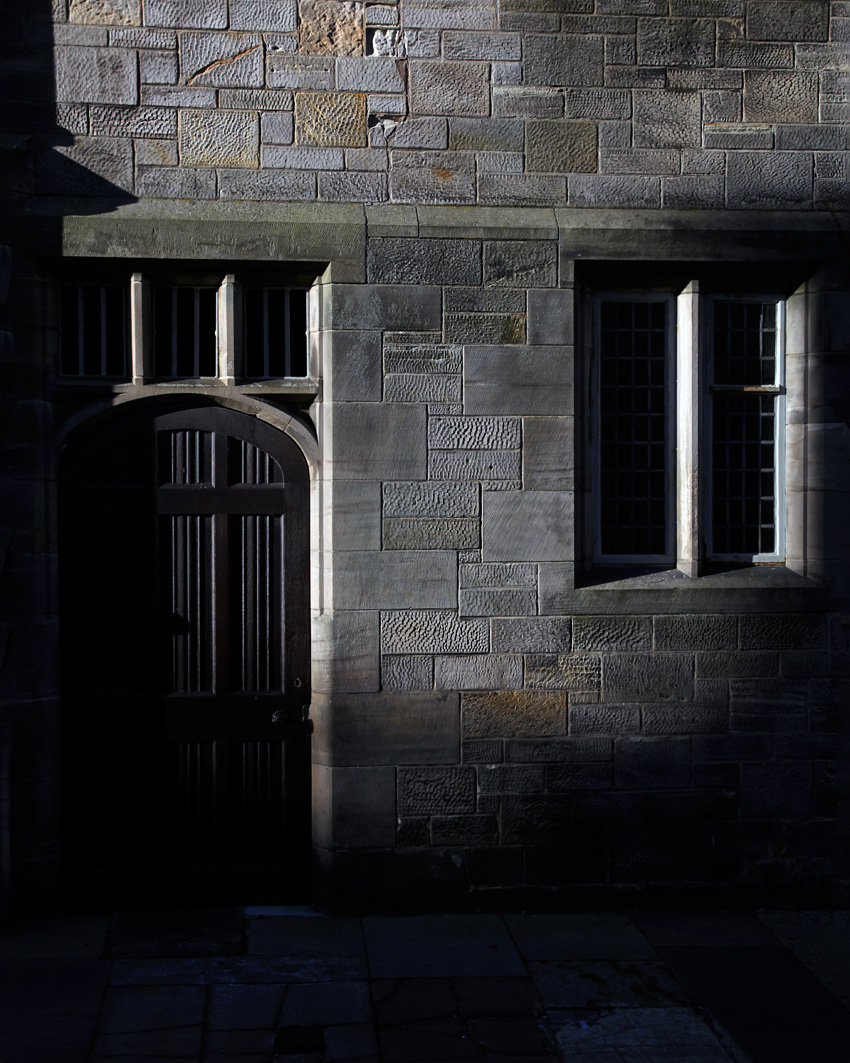 Beautiful scenes were not hard to find.
Beautiful scenes were not hard to find.
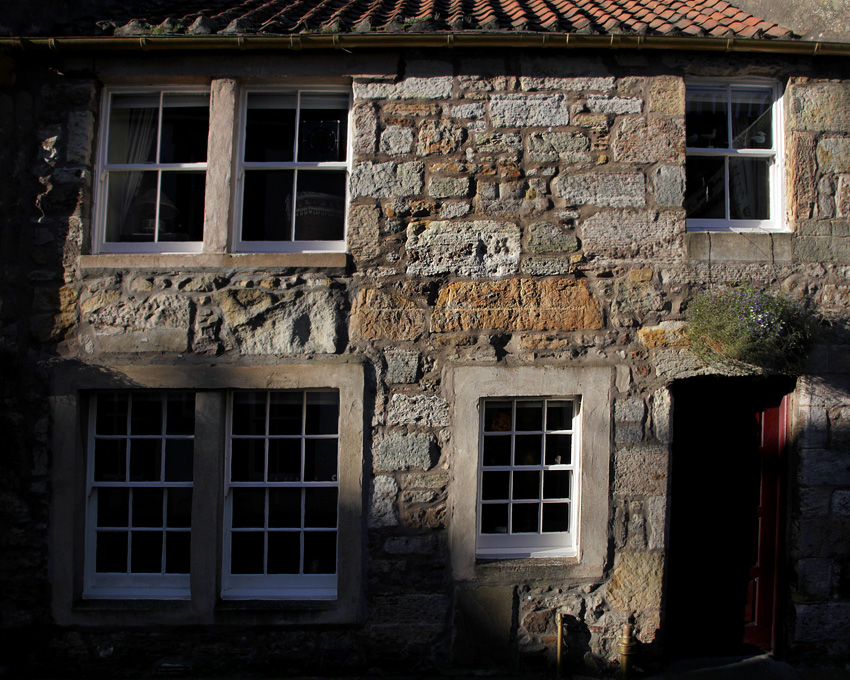 The days are very short here in northern Scotland, so the light is always low and weak on the stone houses.
The days are very short here in northern Scotland, so the light is always low and weak on the stone houses.
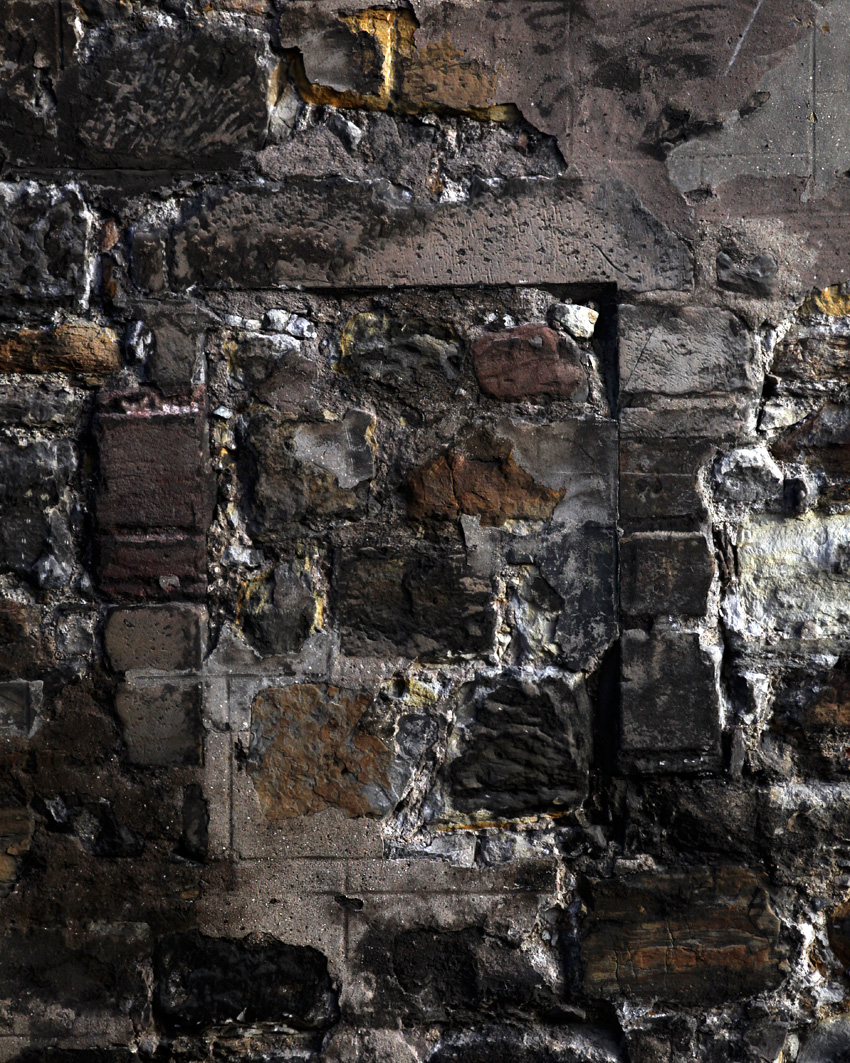 I love capturing "Wall History Portraits."
I love capturing "Wall History Portraits."
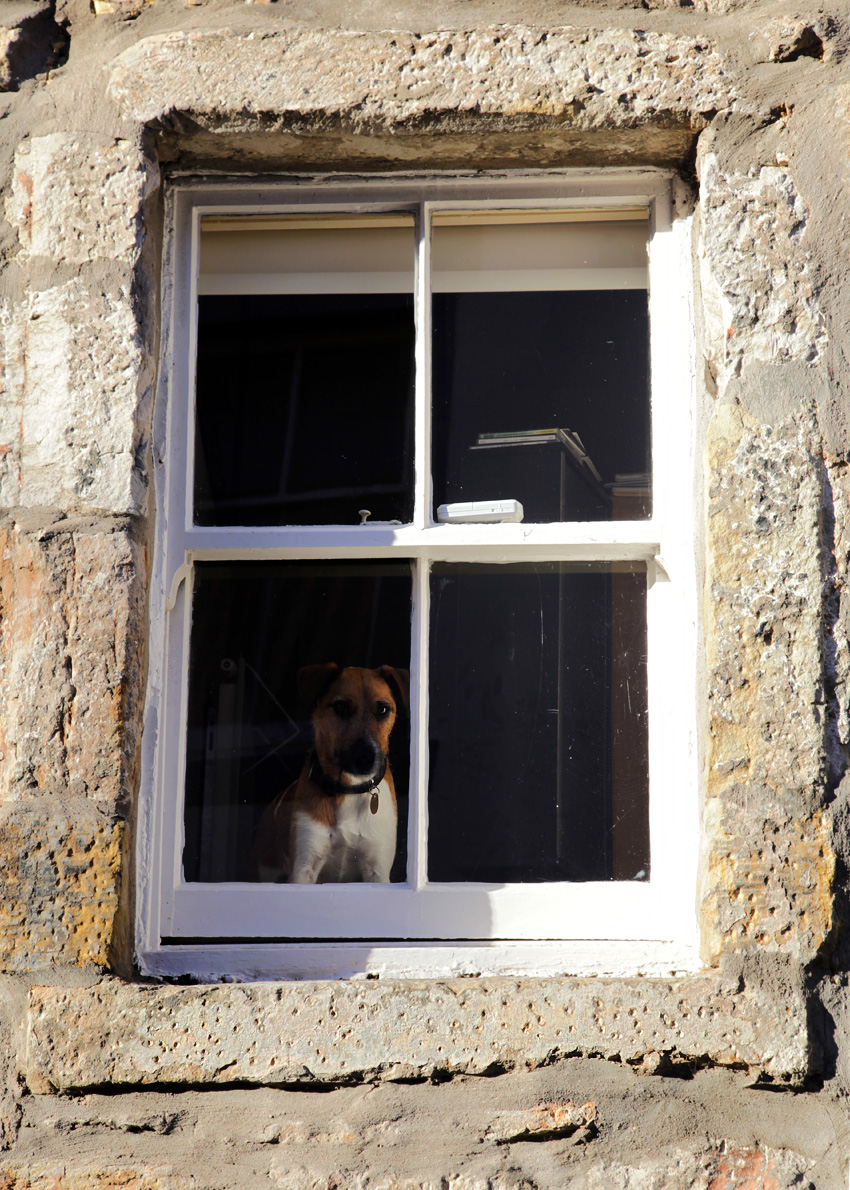 A new twist on the old concept of watch dog.
A new twist on the old concept of watch dog.
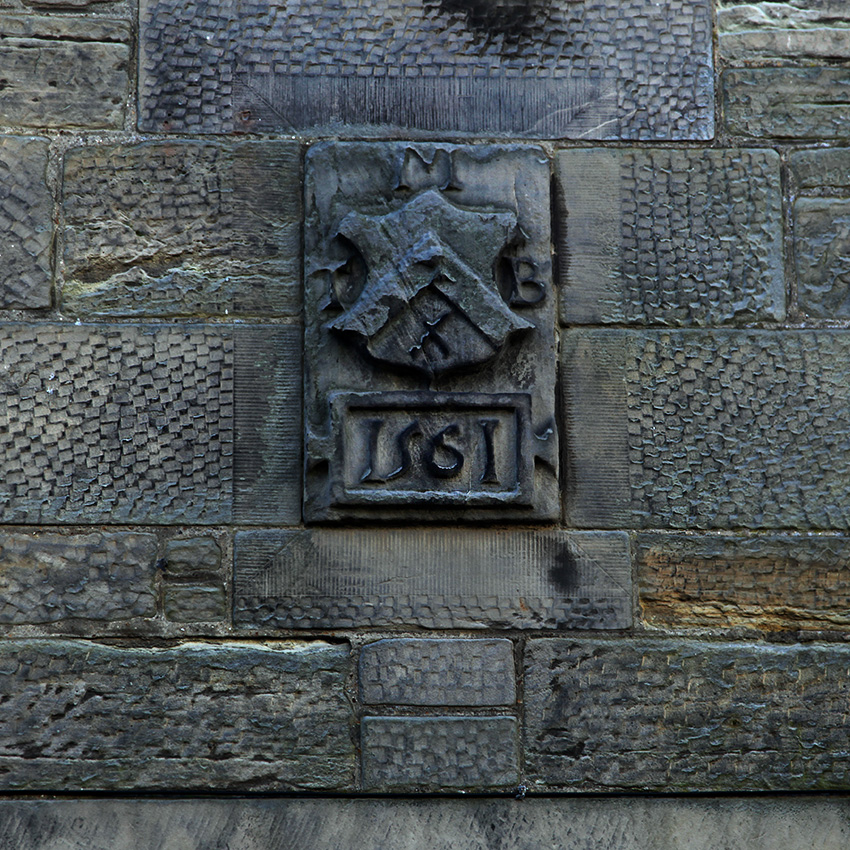 St. Andrews was not built yesterday. It was built by The Freemasons a long time ago. 1561 was the date on this still occupied house.
St. Andrews was not built yesterday. It was built by The Freemasons a long time ago. 1561 was the date on this still occupied house.
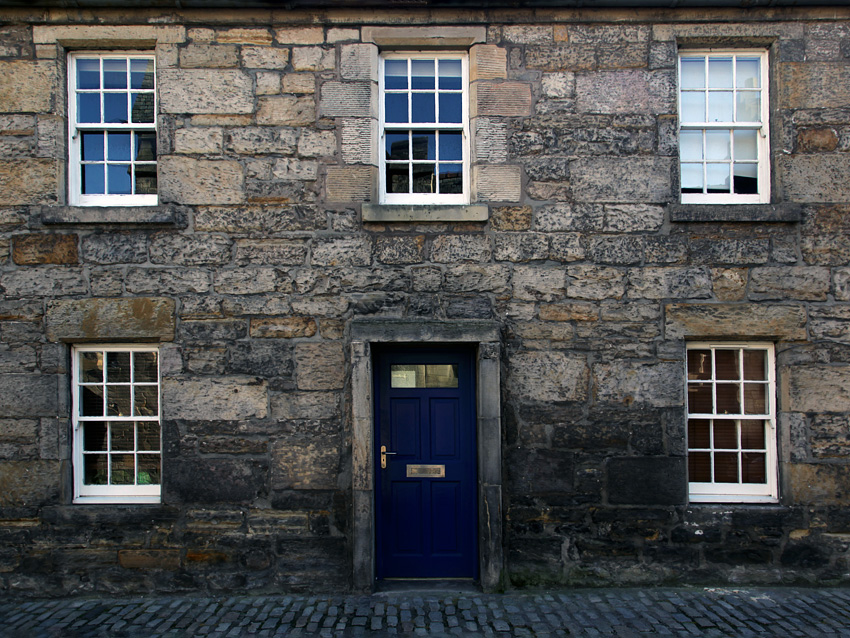 We currently enjoy living in a stone house from the 1880s In Aberdeen, but my dream is to live in a 500 year old stone house some day.
We currently enjoy living in a stone house from the 1880s In Aberdeen, but my dream is to live in a 500 year old stone house some day.
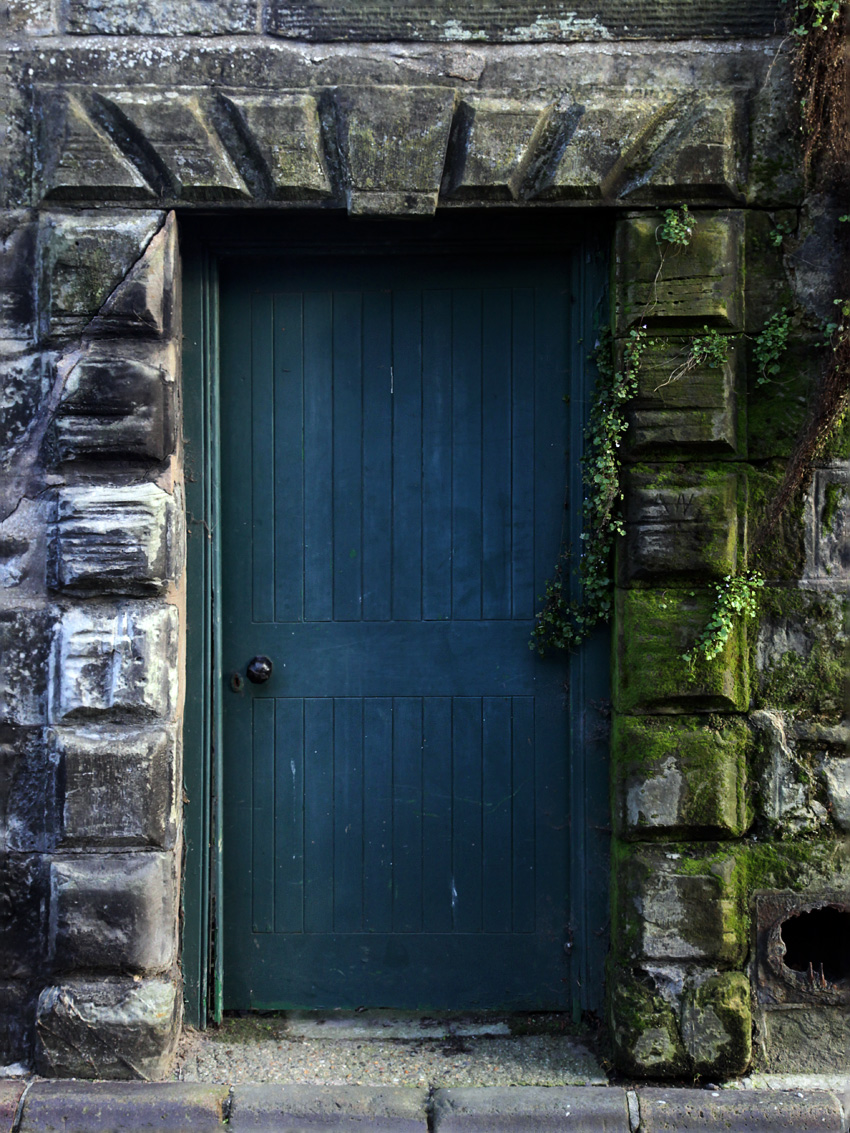 A persistent theme among my photographic interests is Old Doors. I find them powerful images of transition - from outside to inside - from inside to outside. The threshold.
A persistent theme among my photographic interests is Old Doors. I find them powerful images of transition - from outside to inside - from inside to outside. The threshold.
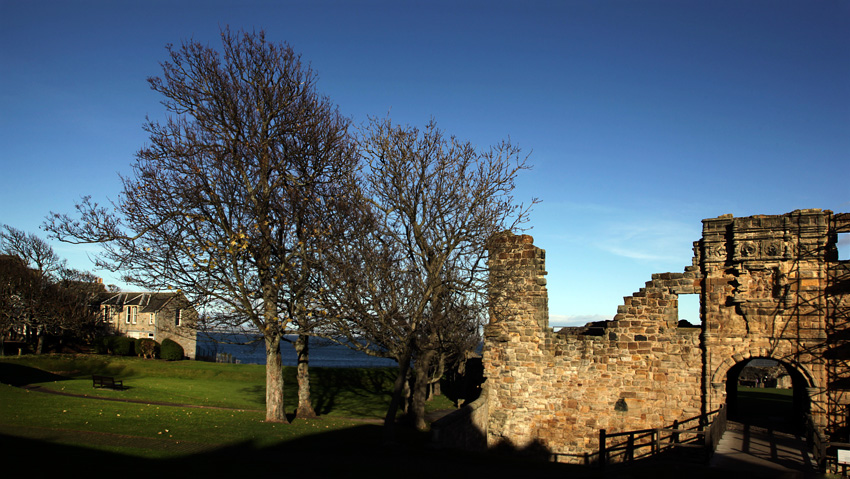 I zig-zagged back and forth across St. Andrews' small streets and suddenly found myself at the sea side.
I zig-zagged back and forth across St. Andrews' small streets and suddenly found myself at the sea side.
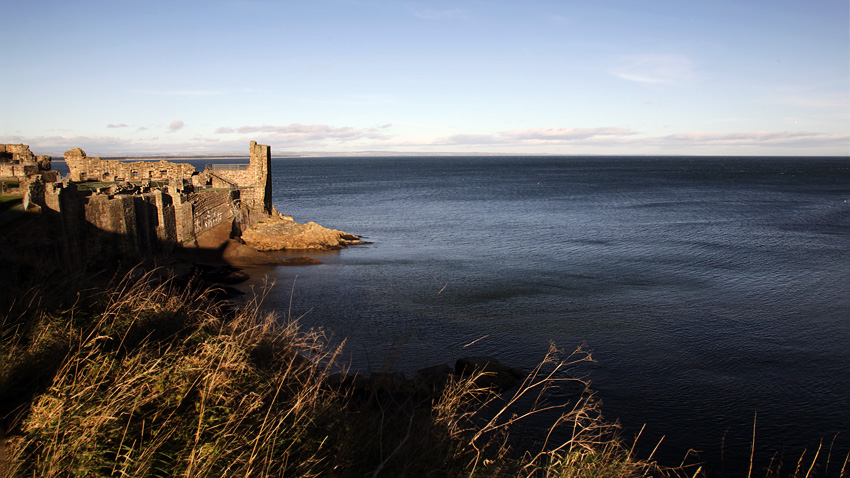 St. Andrews Castle ruins. There has been a castle on this site since 1189 and has played prominent roles in Scottish history many times . . . and was destroyed many times
St. Andrews Castle ruins. There has been a castle on this site since 1189 and has played prominent roles in Scottish history many times . . . and was destroyed many times
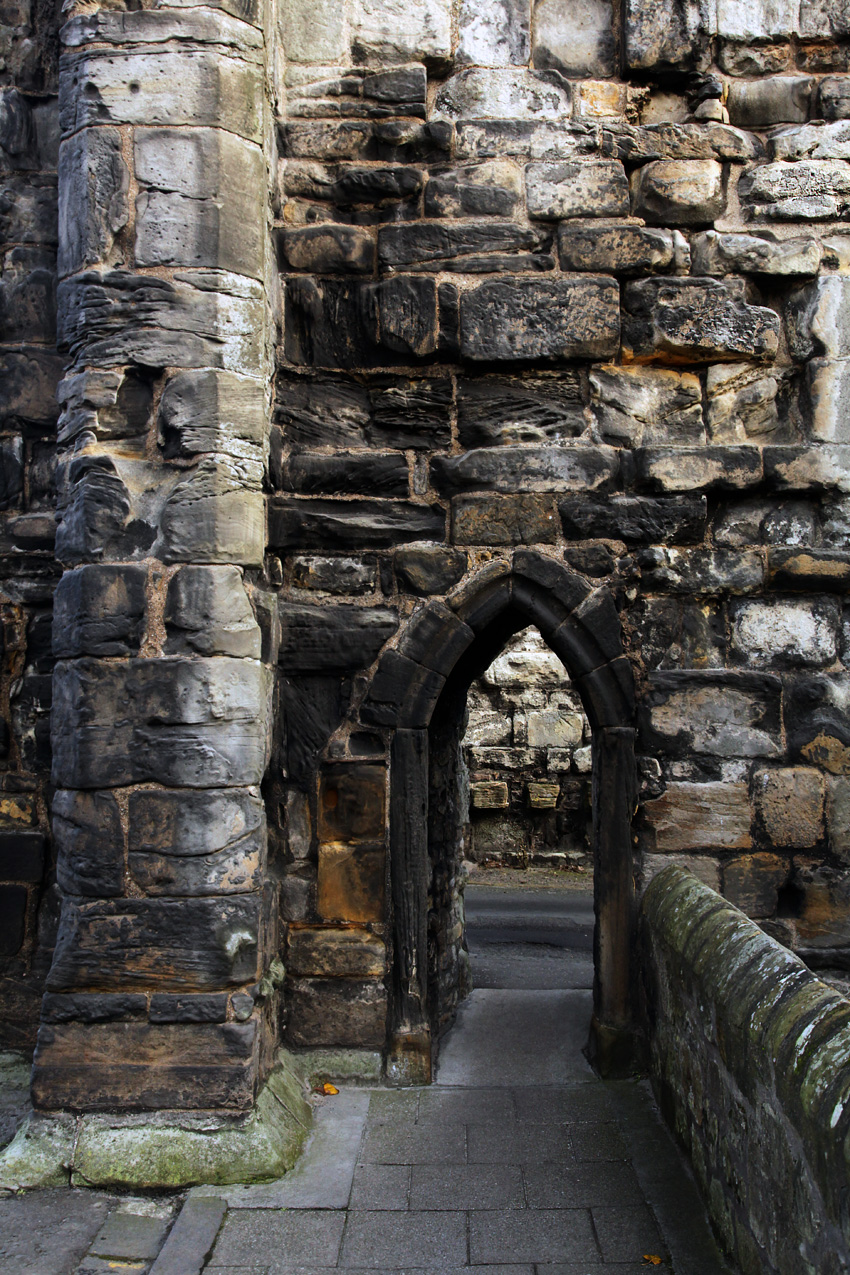 My wanderings eventually lead me to the ancient ruins I had been seeking.
My wanderings eventually lead me to the ancient ruins I had been seeking.
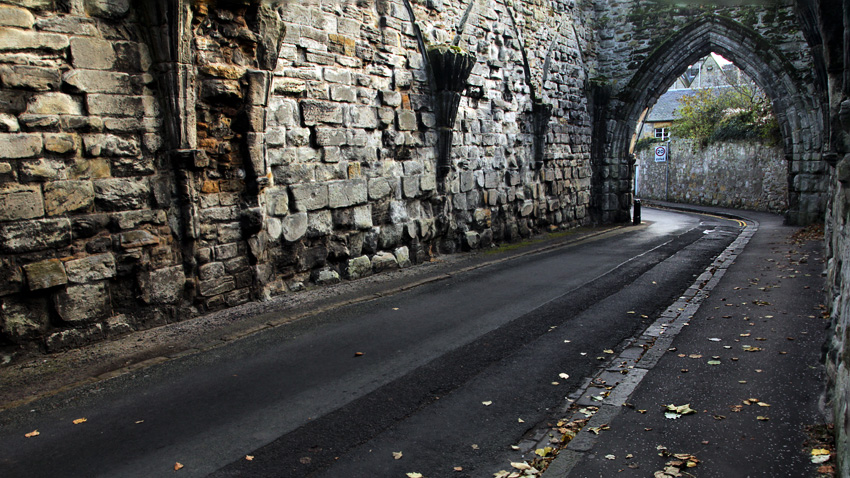 There is no shortage of ancient ruins in St. Andrews. In fact, there are so many ruins that at some point the city fathers decided that the quickest route from A to B was right through an ancient chapel! I have not seen this kind of thing since Luxor in Egypt.
There is no shortage of ancient ruins in St. Andrews. In fact, there are so many ruins that at some point the city fathers decided that the quickest route from A to B was right through an ancient chapel! I have not seen this kind of thing since Luxor in Egypt.
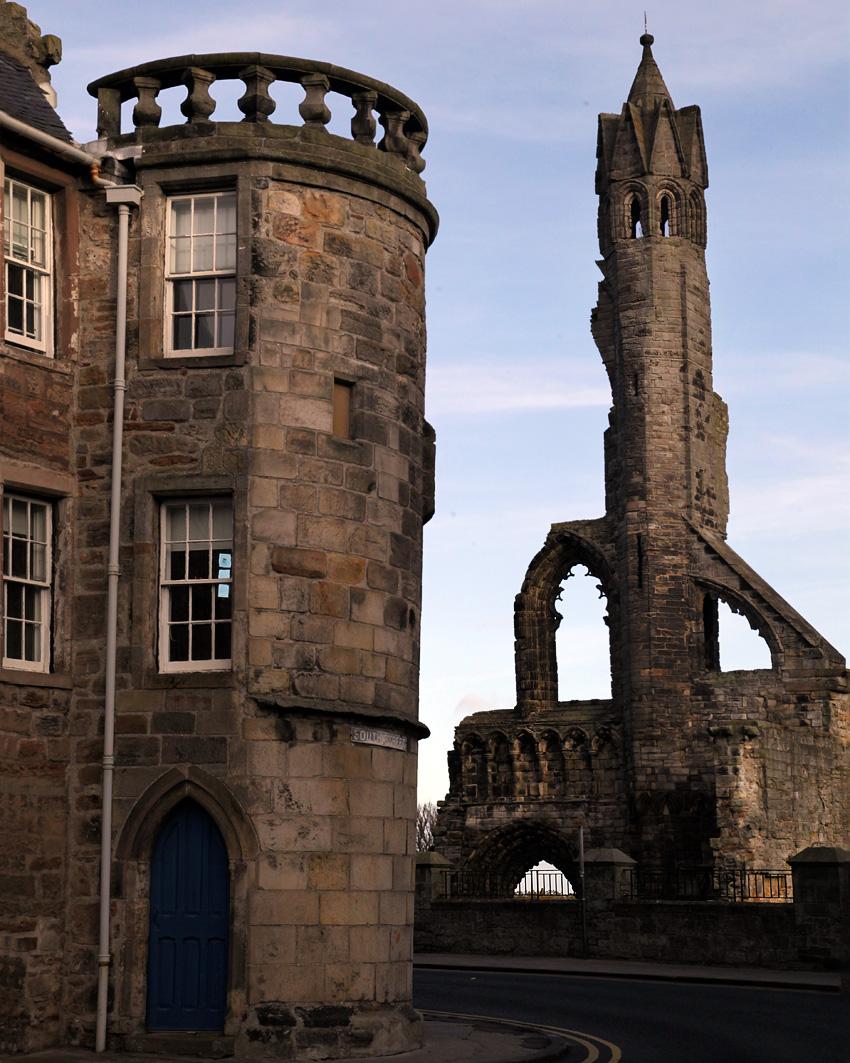 Rounding the next corner I was surprised by something out of a Hieronymus Bosch painnting! A surrealistic architectural structure: The complex of ruins of St. Andrews Cathedral (circa 1158).
Rounding the next corner I was surprised by something out of a Hieronymus Bosch painnting! A surrealistic architectural structure: The complex of ruins of St. Andrews Cathedral (circa 1158).
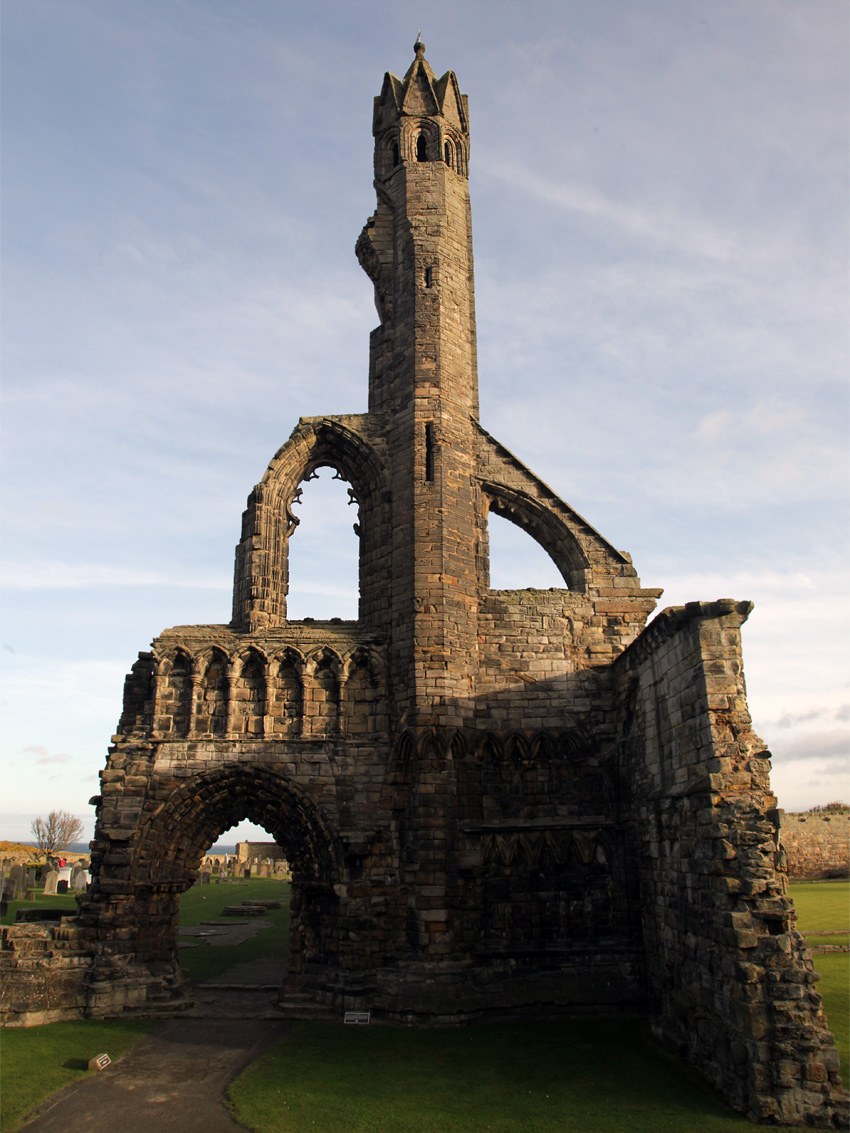 Imagine what this must have looked like before it was abandoned in 1561 and left to collapse at the end of the 16th century.
Imagine what this must have looked like before it was abandoned in 1561 and left to collapse at the end of the 16th century.
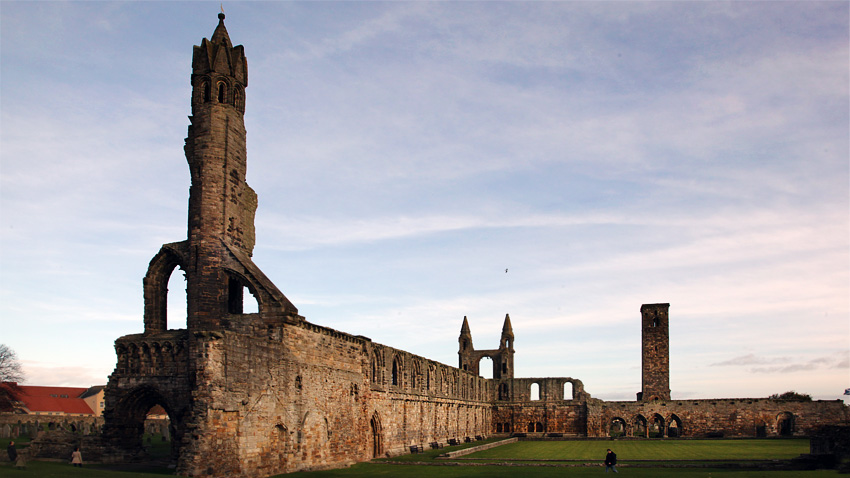 The St. Andrews Cathedral ruins site in the fading light.
The St. Andrews Cathedral ruins site in the fading light.
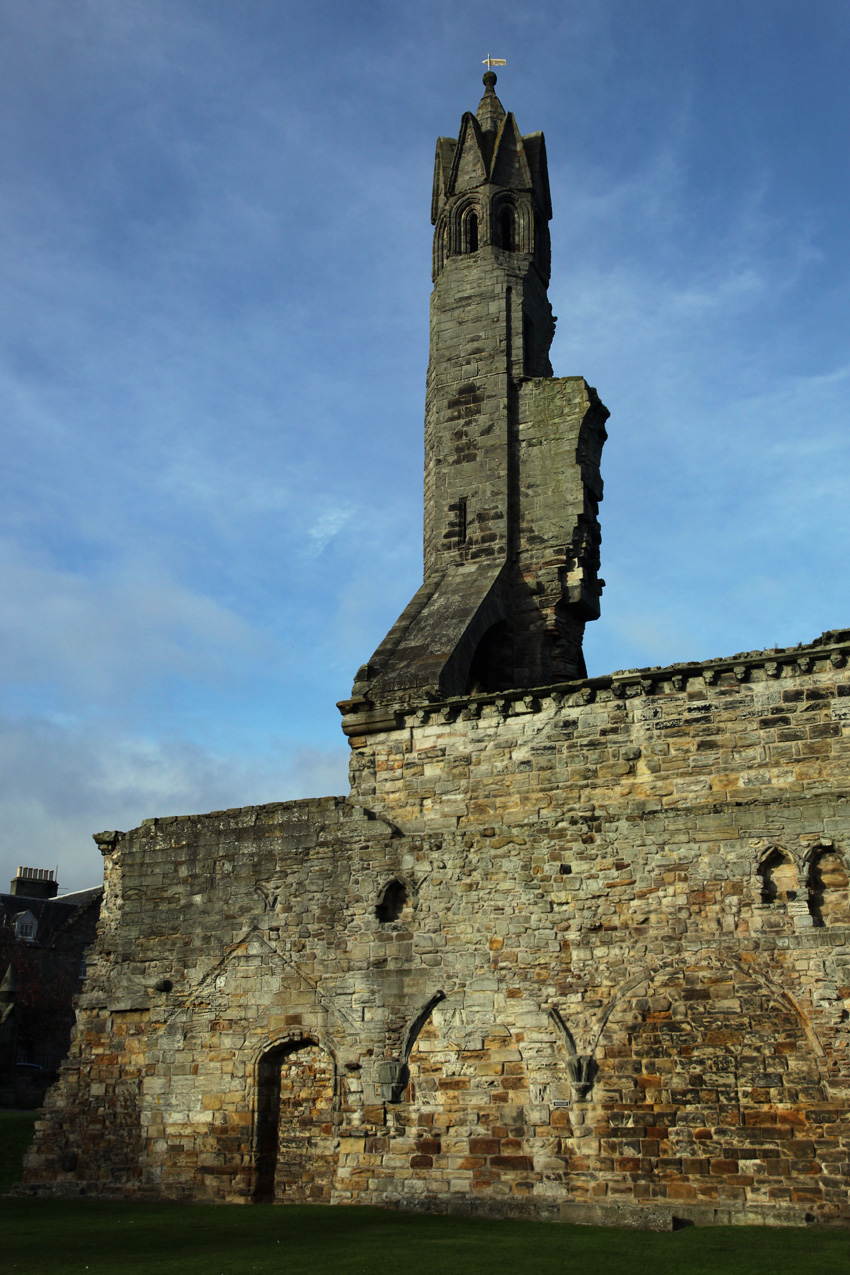
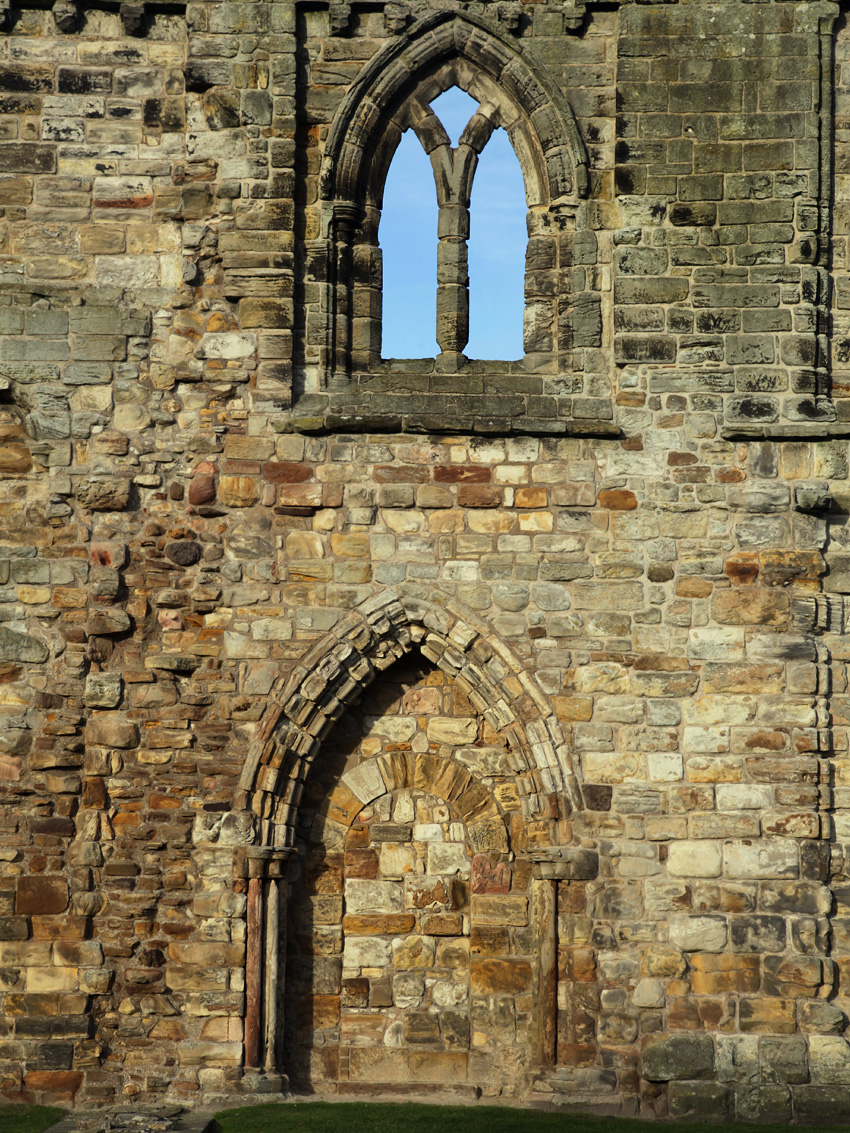
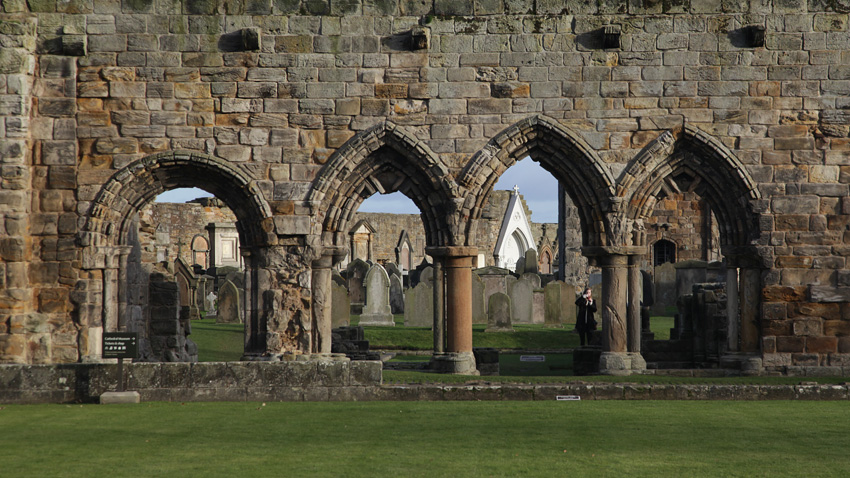
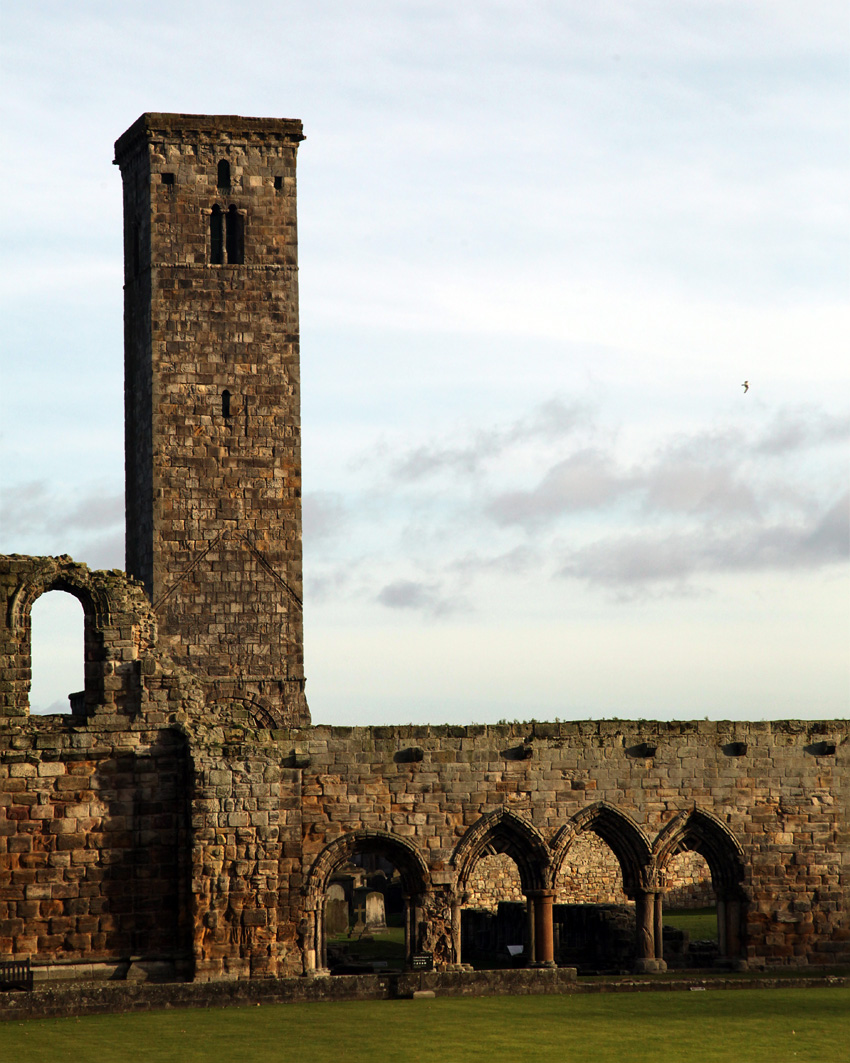 Restoration and preservation of the site did not commence until 1826, even though most of the stones and features had long since been carted away.
Restoration and preservation of the site did not commence until 1826, even though most of the stones and features had long since been carted away.
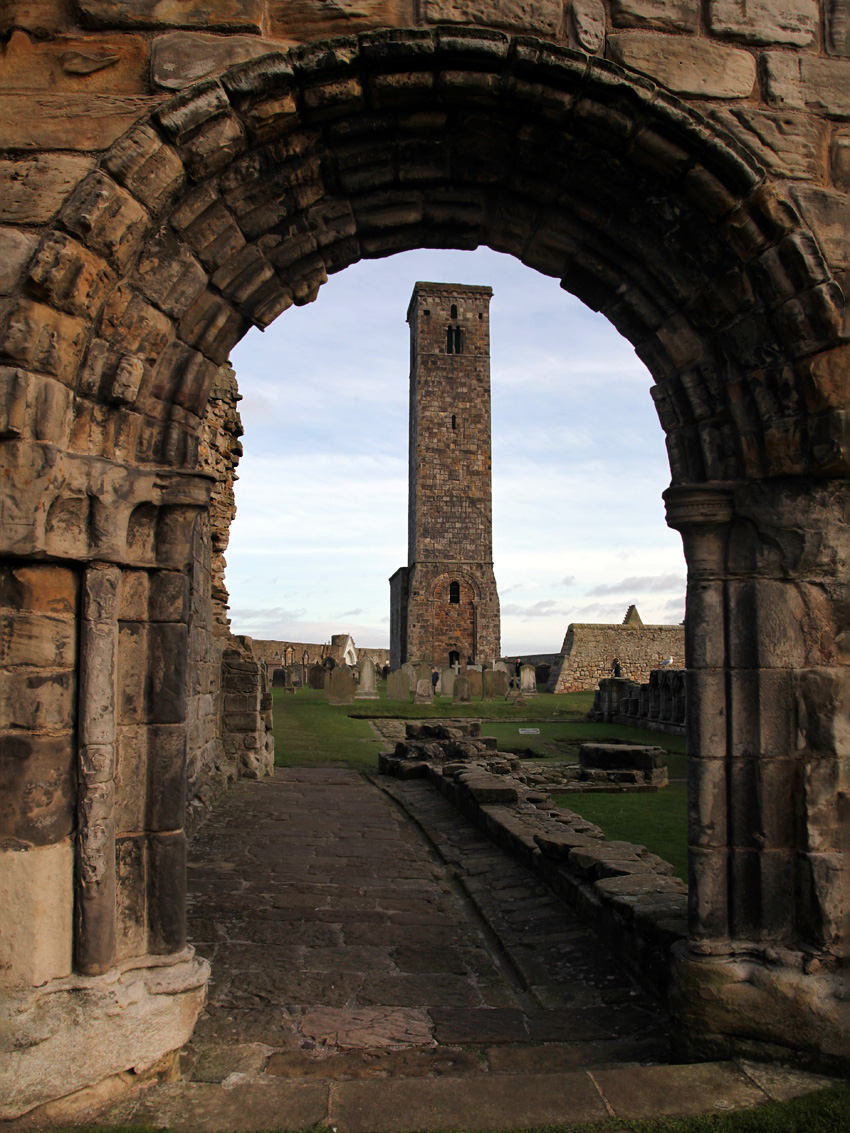
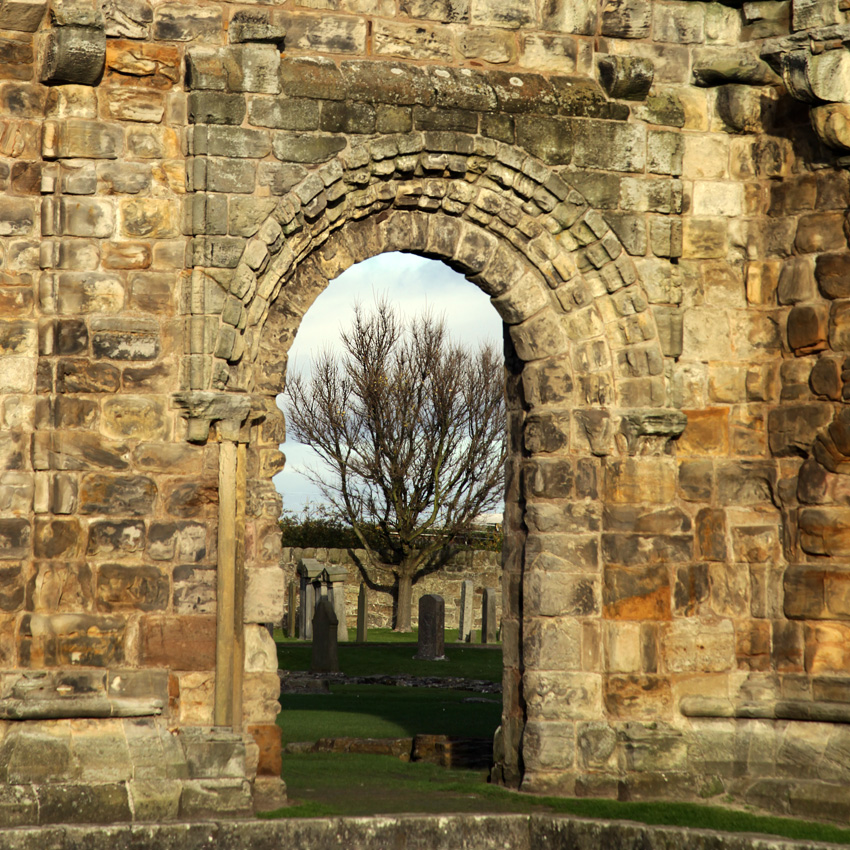
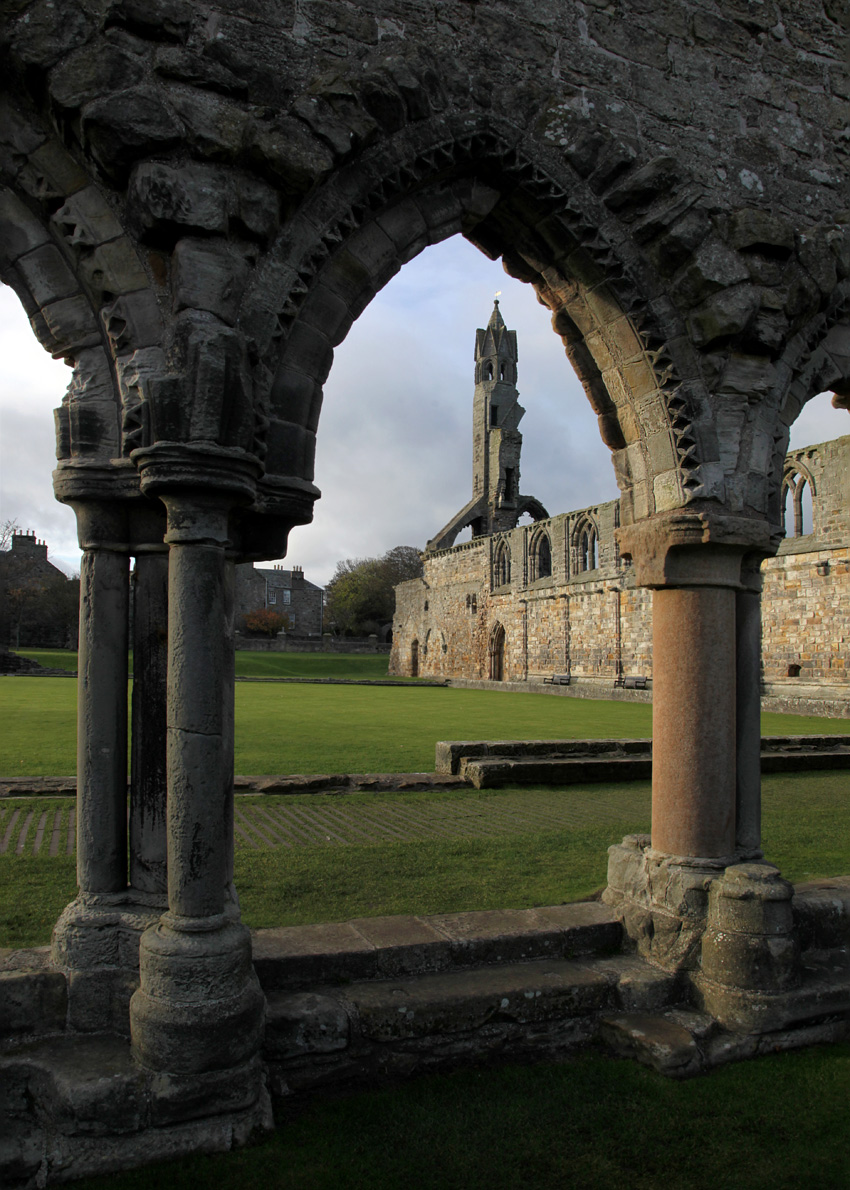
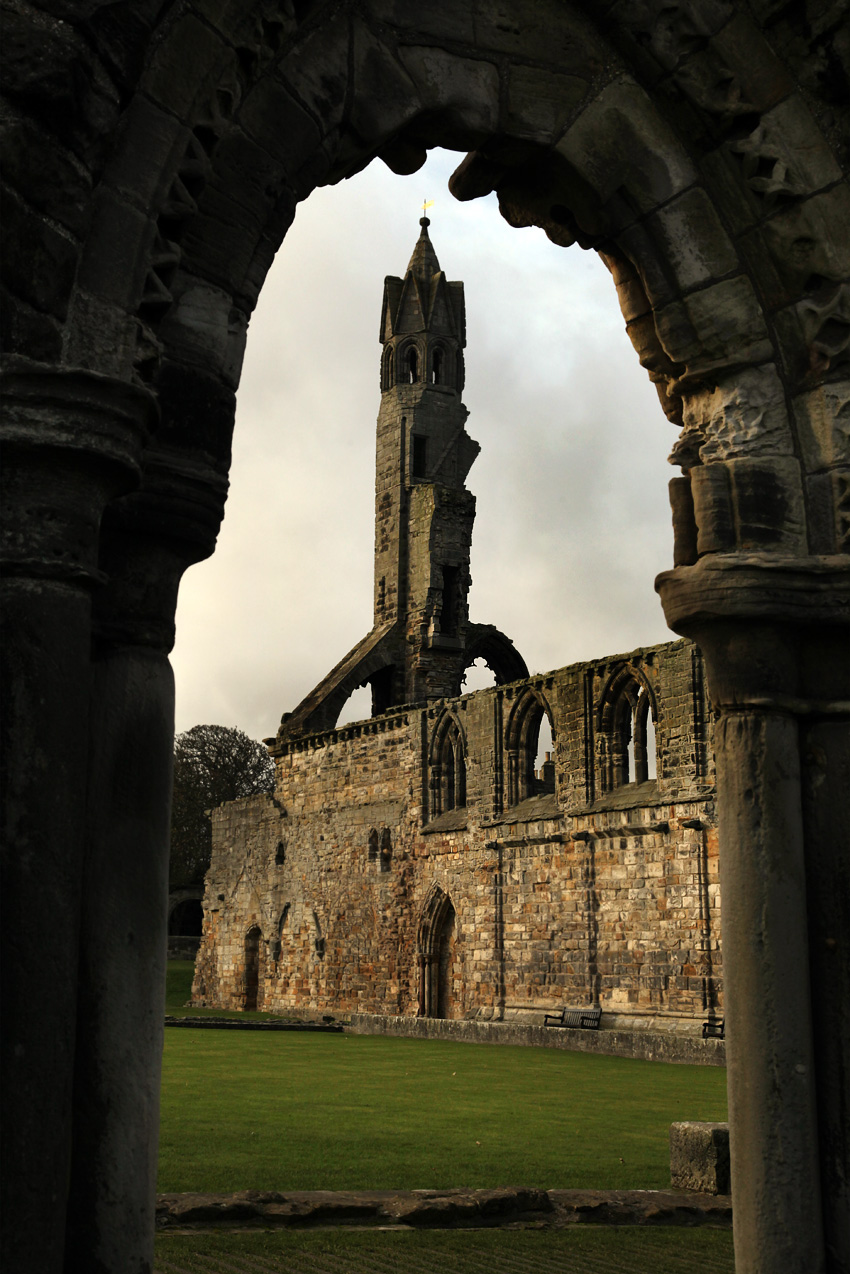
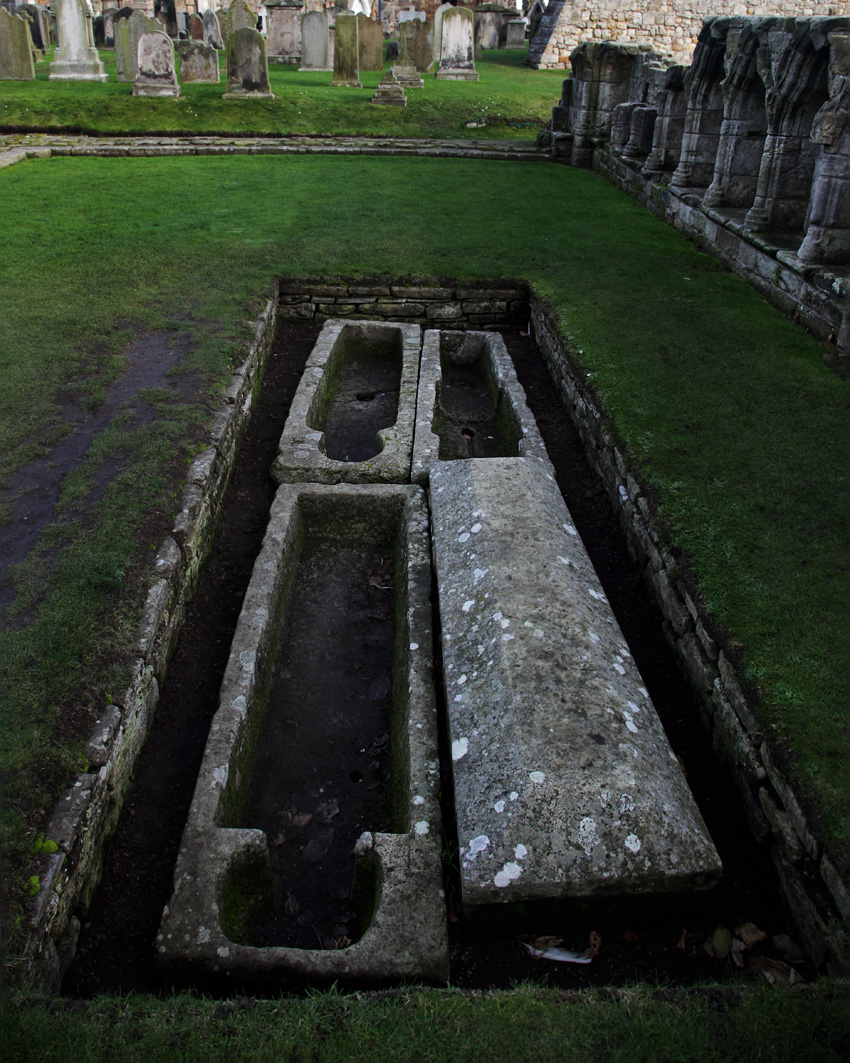
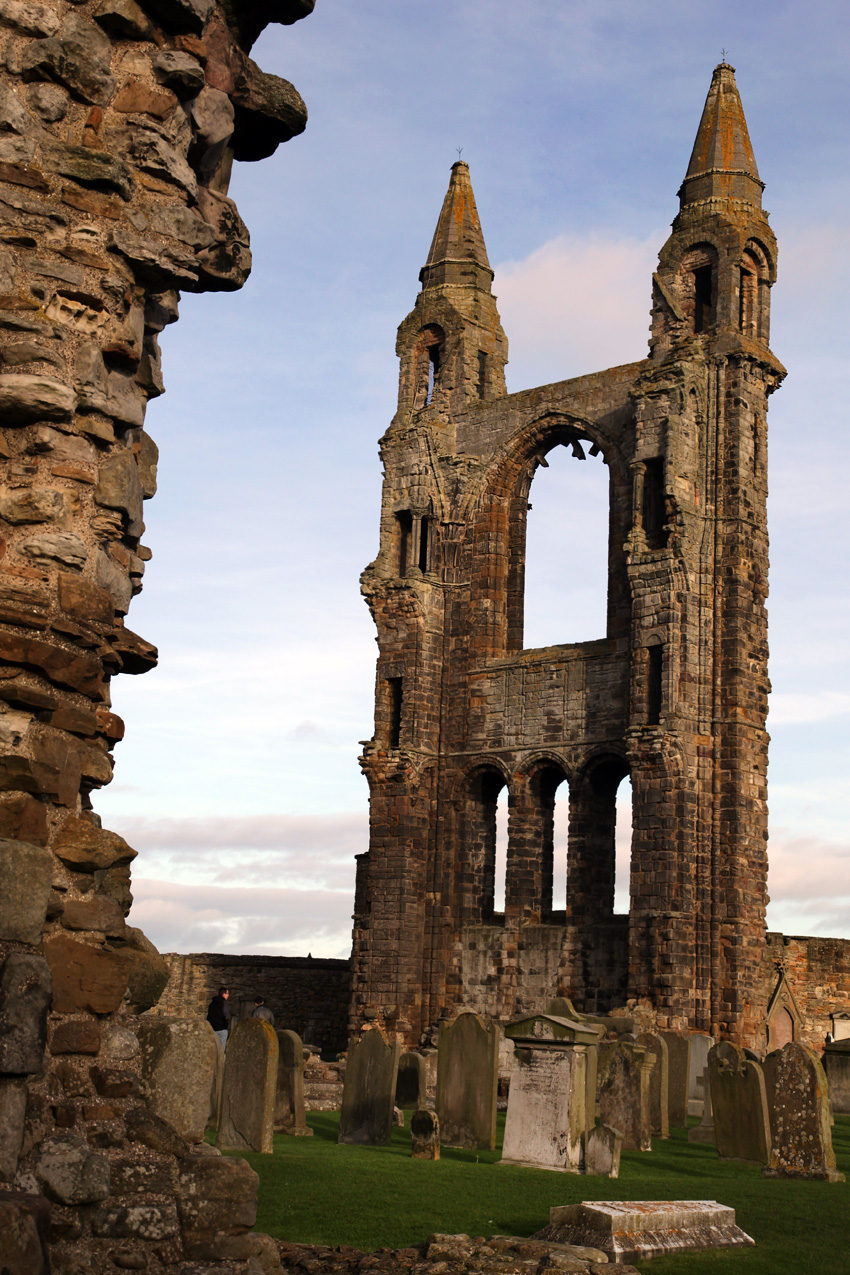
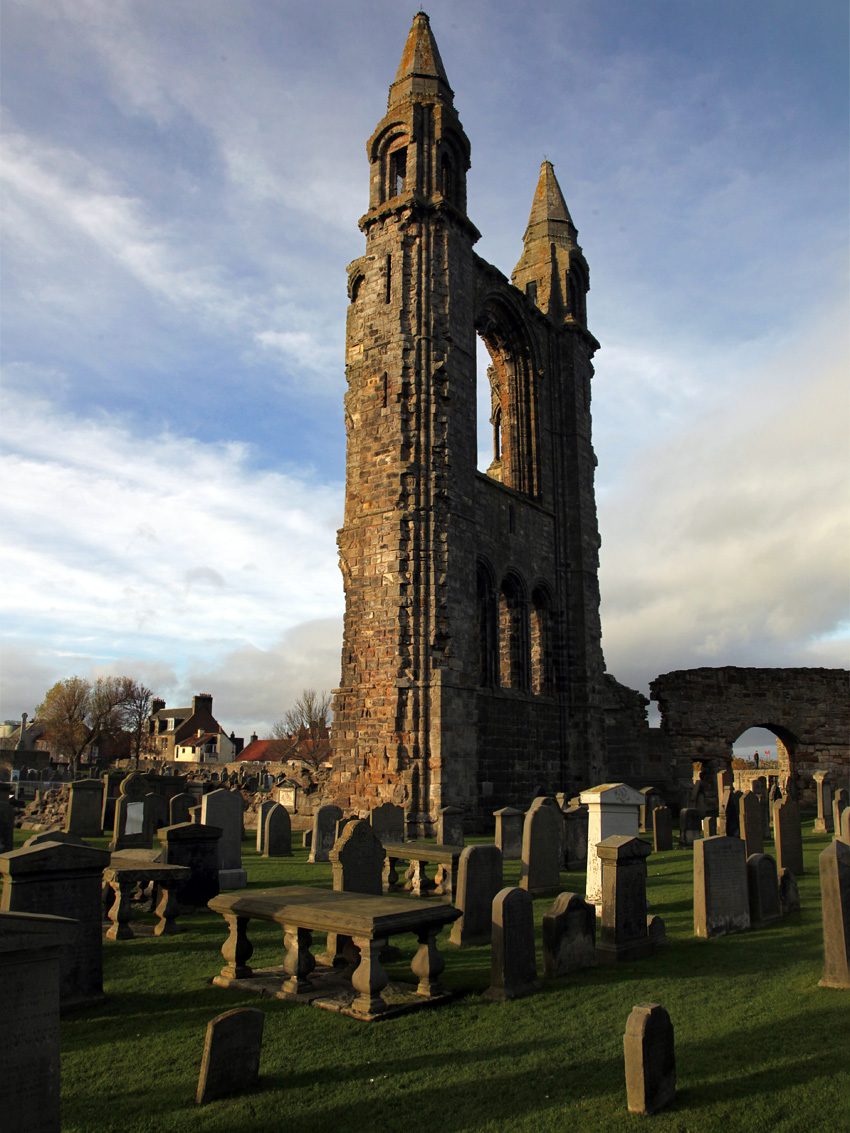 The original magnificence of St. Andrews Cathedral can only be guessed at.
The original magnificence of St. Andrews Cathedral can only be guessed at.
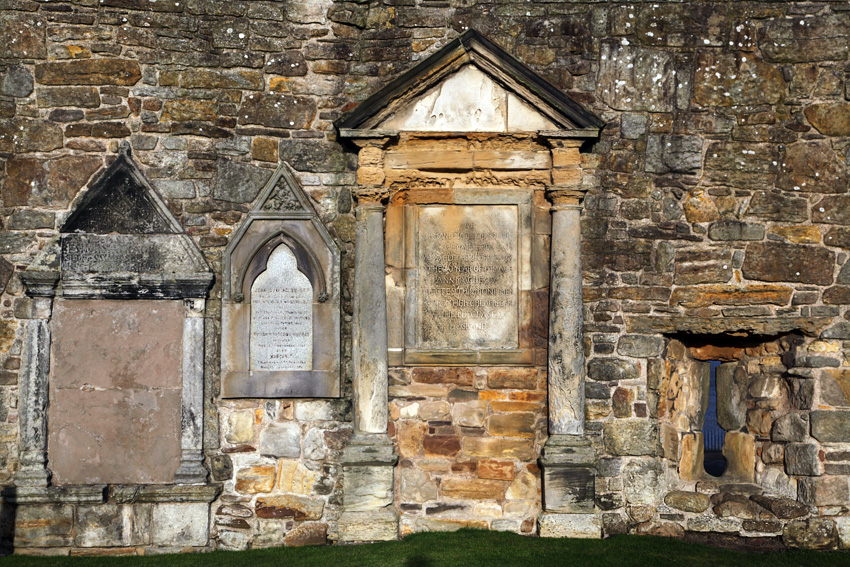 The wall that surrounds the St. Andrews Cathedral is lined with crypts and inscriptions.
The wall that surrounds the St. Andrews Cathedral is lined with crypts and inscriptions.
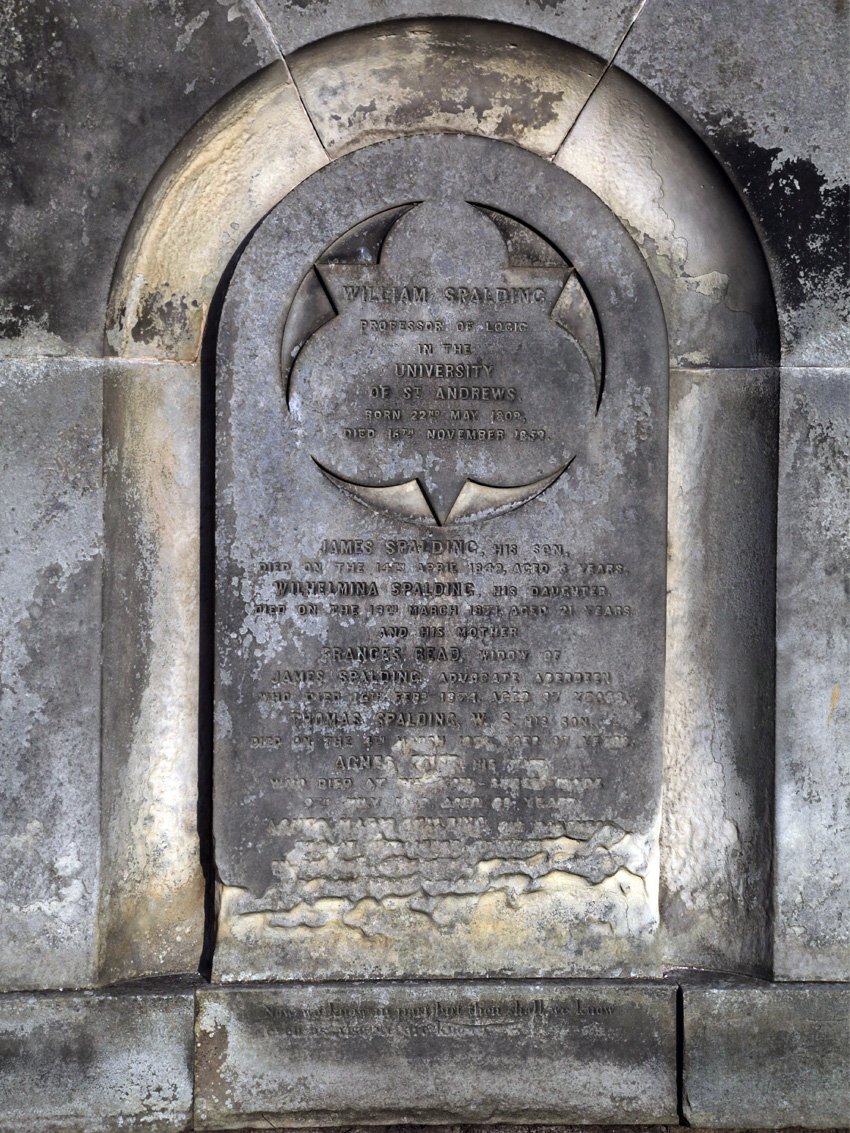 There were many great men interred here. . . . including the logician and literary historian, William Spalding (born in Aberdeen in 1809). I vowed to remember him and read one of his books.
There were many great men interred here. . . . including the logician and literary historian, William Spalding (born in Aberdeen in 1809). I vowed to remember him and read one of his books.
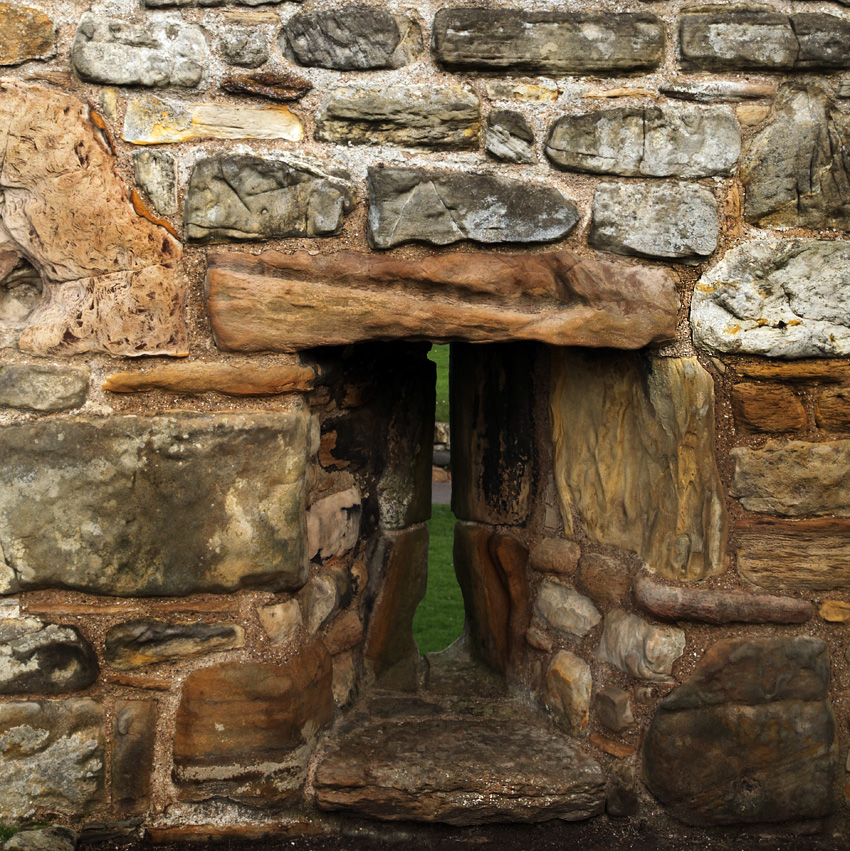 Centuries of inclement weather have worn these gun slots in peculiar ways.
Centuries of inclement weather have worn these gun slots in peculiar ways.
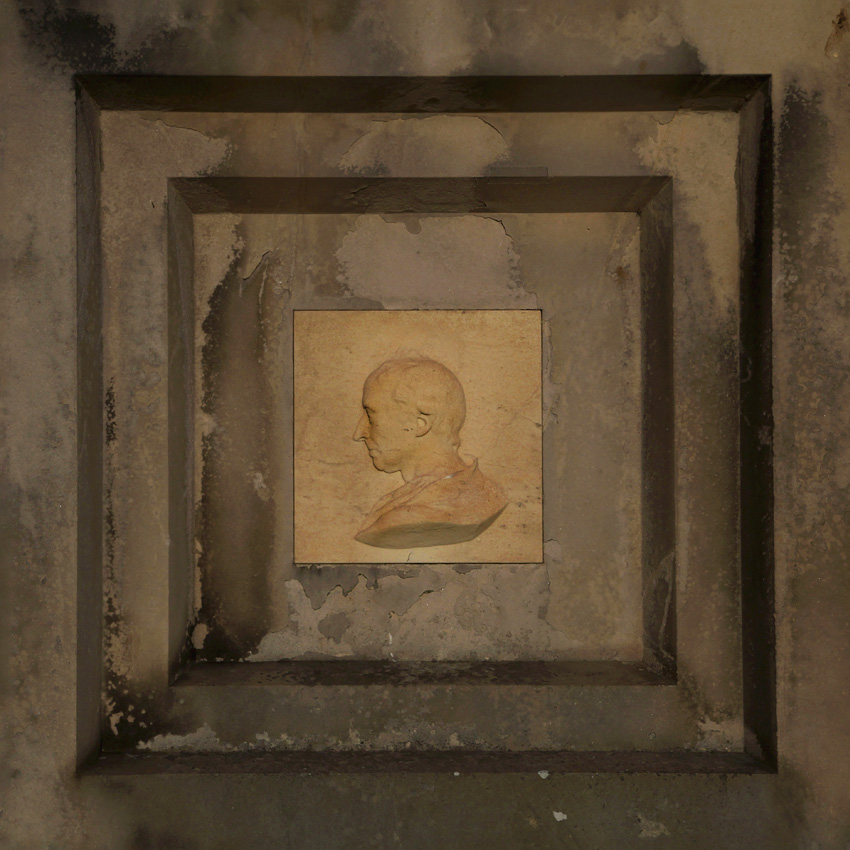 One way to be remembered. This likeness was on a crypt . . . but there was no name.
One way to be remembered. This likeness was on a crypt . . . but there was no name.
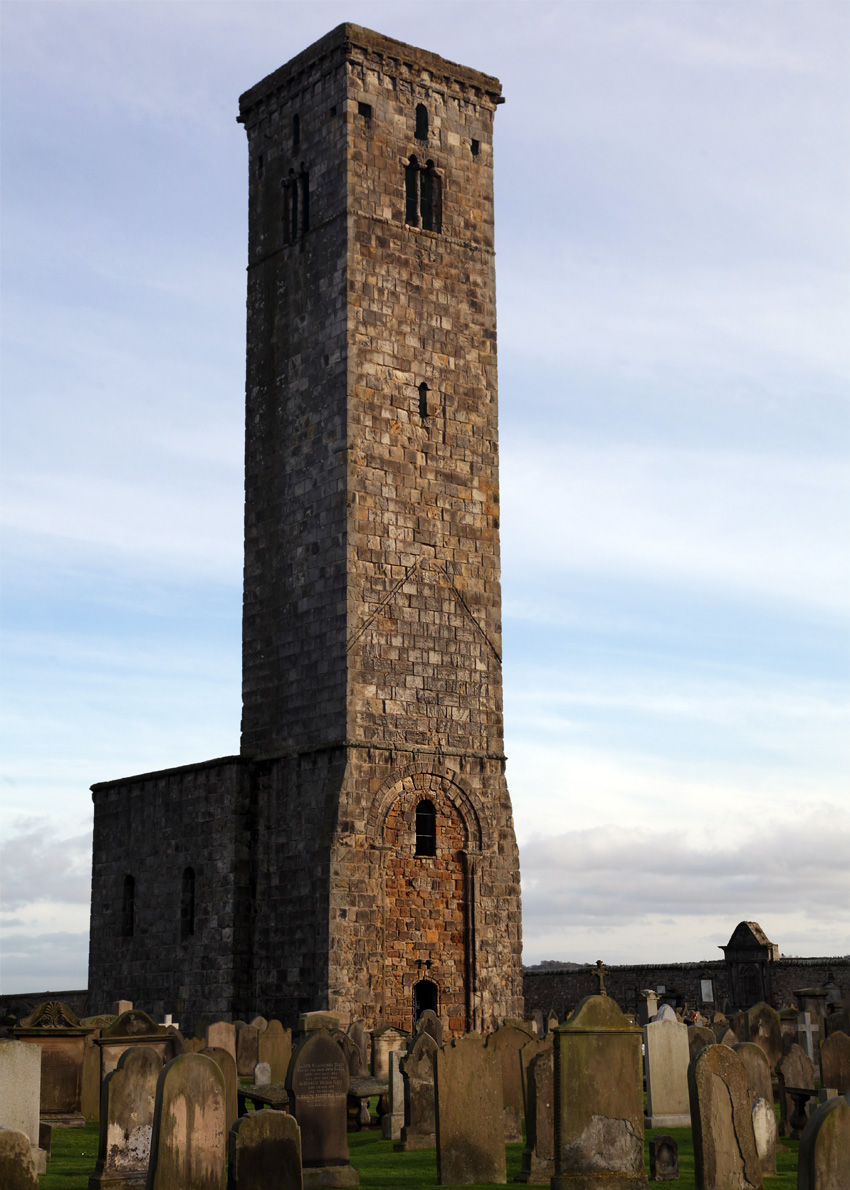 I don't know why wandering around an 900 year old grave yard is so interesting.
I don't know why wandering around an 900 year old grave yard is so interesting.
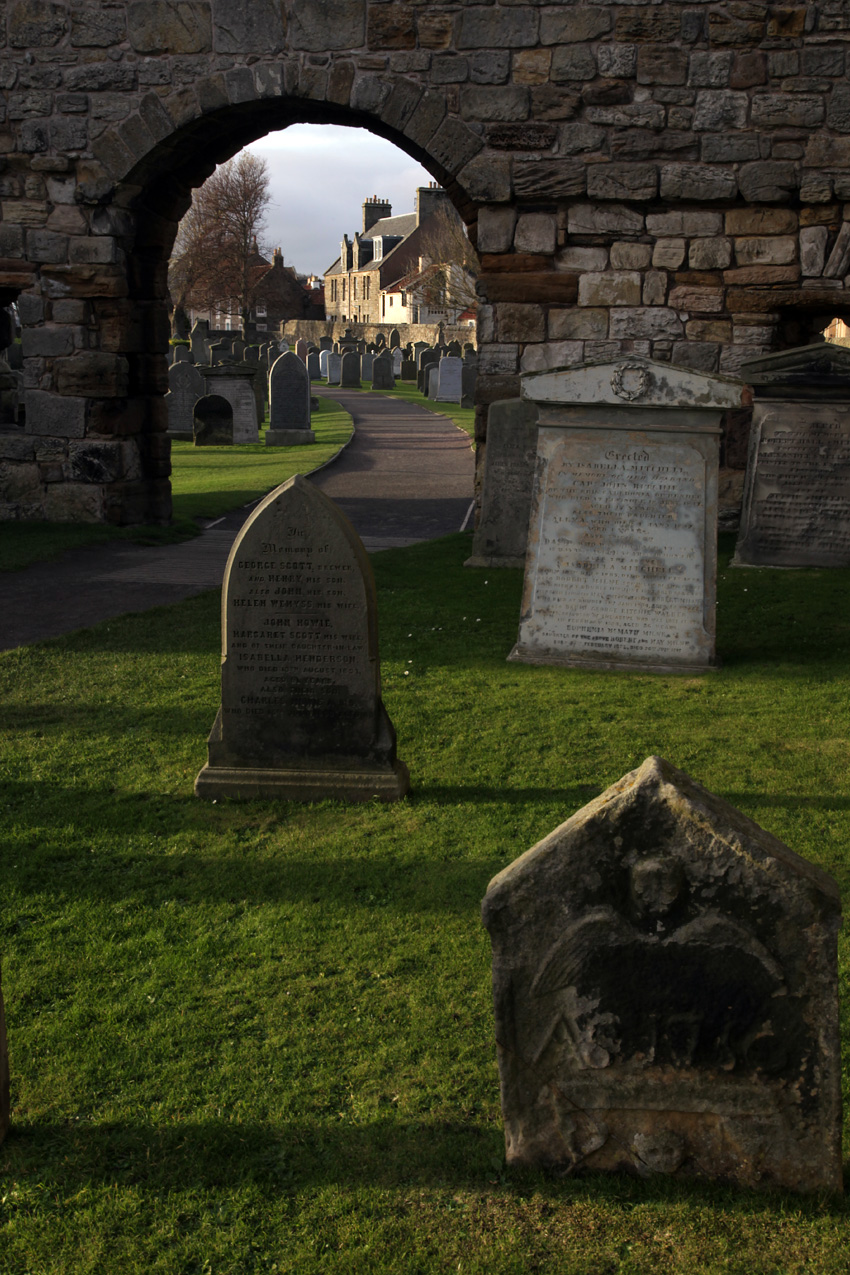 A cold and fine afternoon with steep, sharp light on the many surprising views.
A cold and fine afternoon with steep, sharp light on the many surprising views.
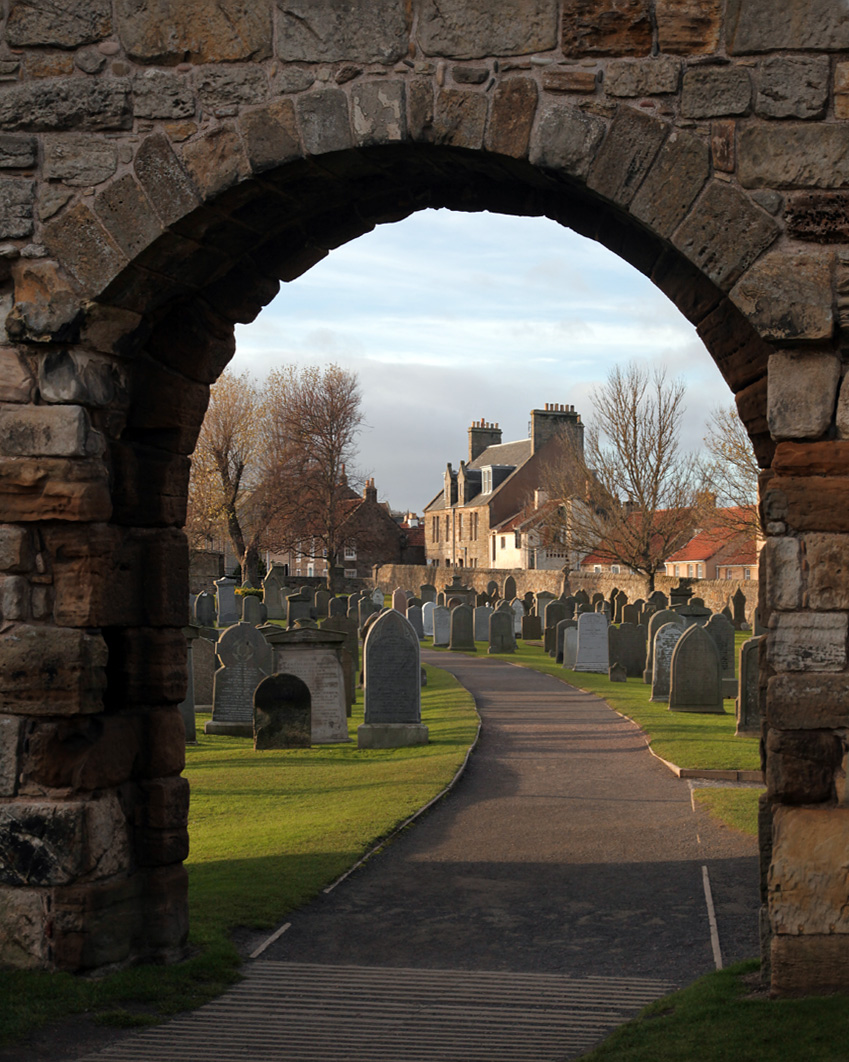 The old cathedral church yard with view to the old town. So quaint . . . so Scotland.
The old cathedral church yard with view to the old town. So quaint . . . so Scotland.
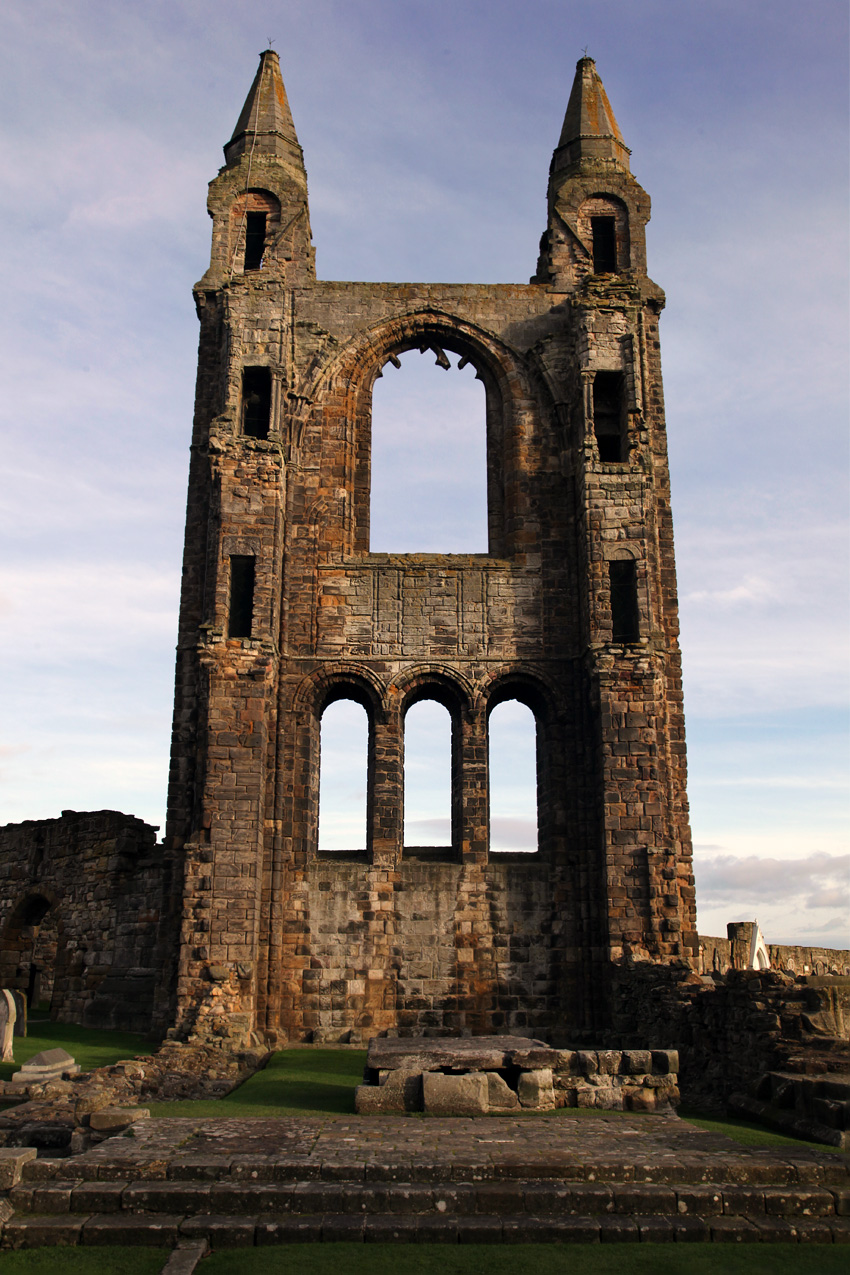 St. Andrews Cathedral must have been a wondrous place before it fell.
St. Andrews Cathedral must have been a wondrous place before it fell.
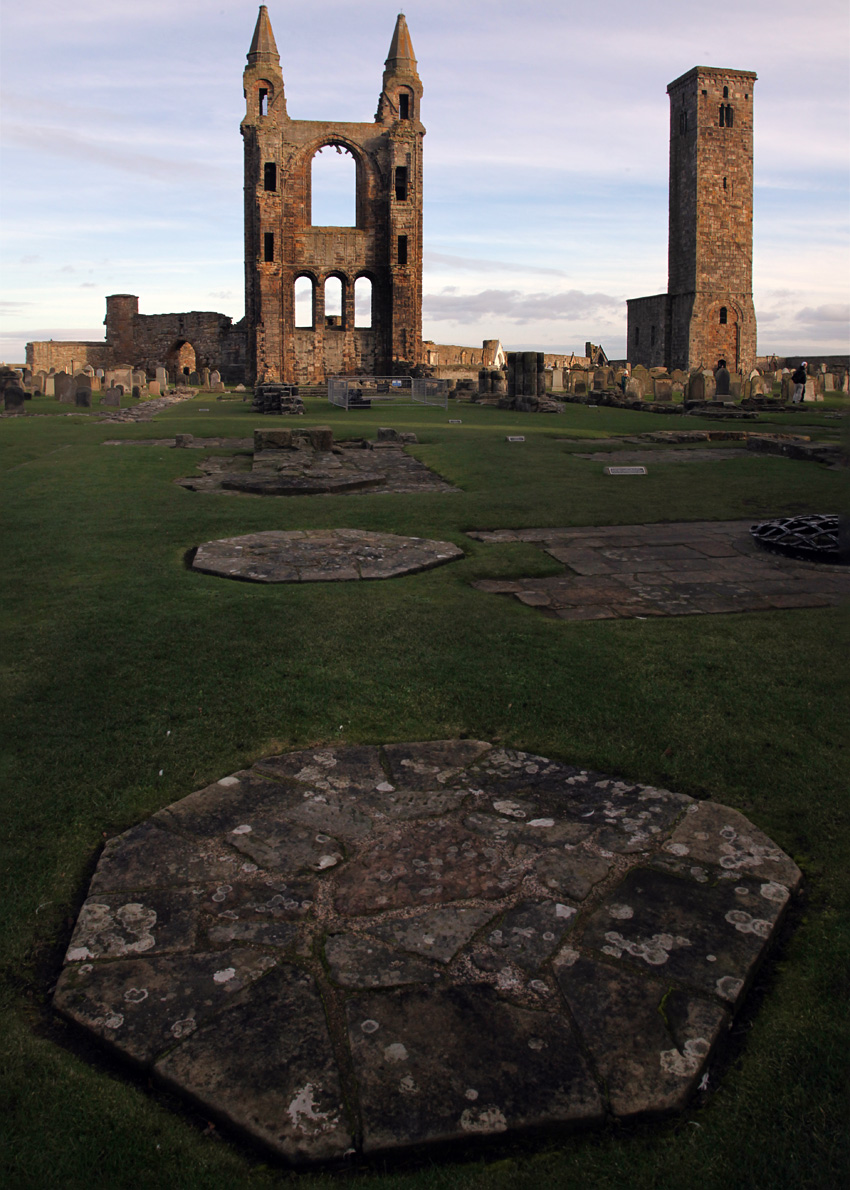 On these giant footings sat massive columns that held the vaulted roof aloft.
On these giant footings sat massive columns that held the vaulted roof aloft.
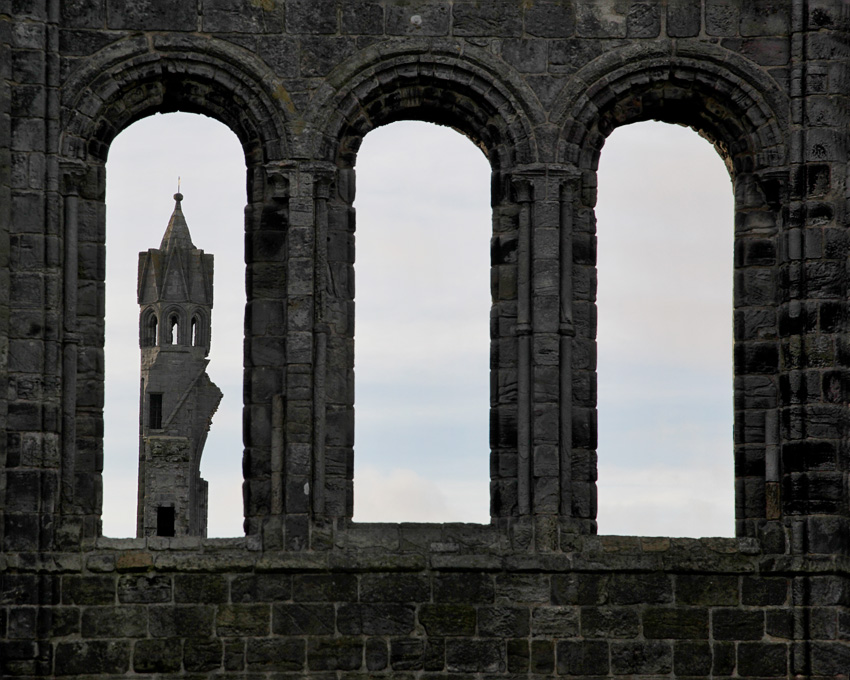 I enjoyed playing around with all the possibilities of framing my photos.
I enjoyed playing around with all the possibilities of framing my photos.
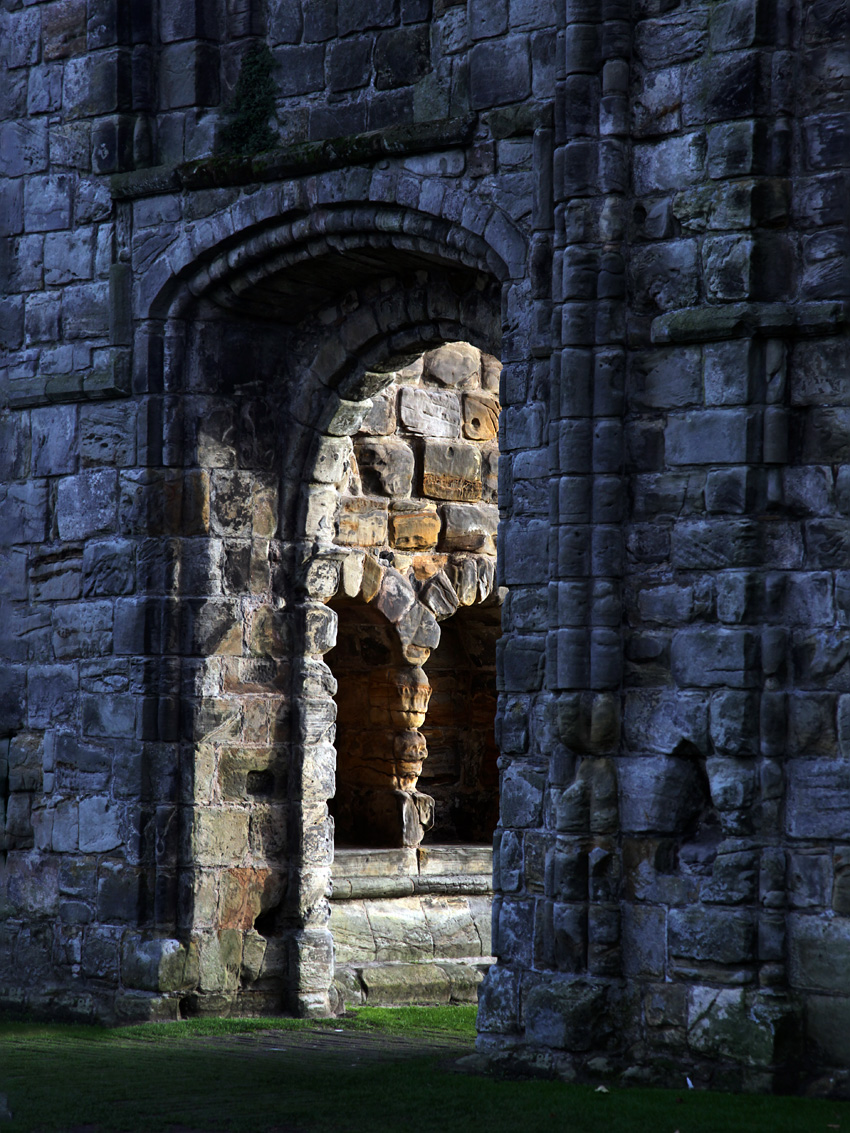 An endless contrast between the fading sun and the grey winter shadows enveloped the entire grave yard.
An endless contrast between the fading sun and the grey winter shadows enveloped the entire grave yard.
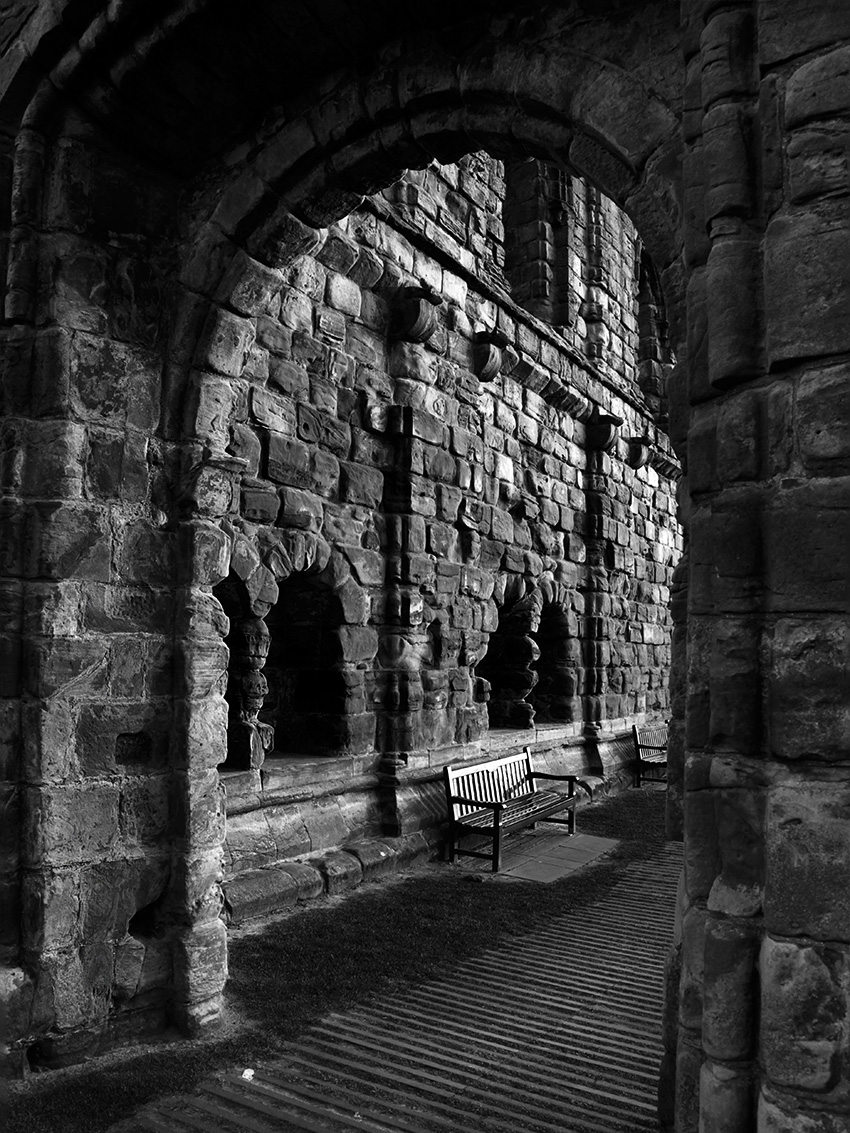 After post-processing many images I finally realized that this light was ideal for black and white photography.
After post-processing many images I finally realized that this light was ideal for black and white photography.
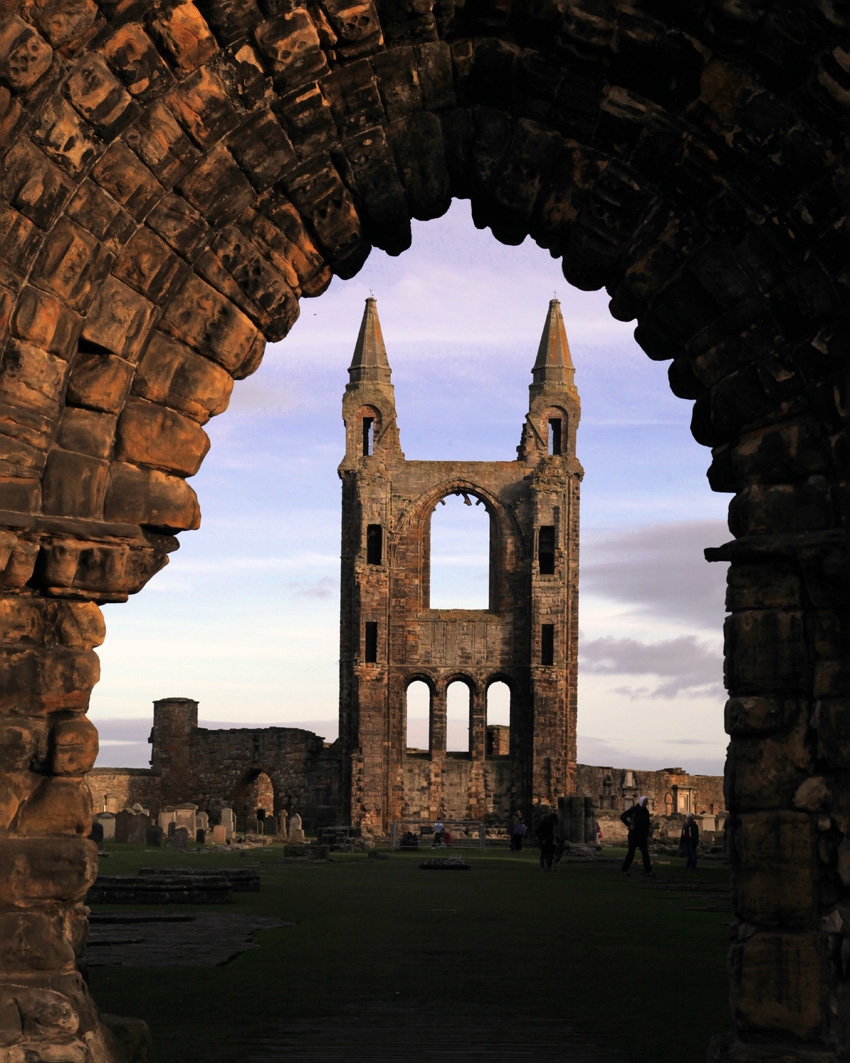 I spent over an hour inside the St. Andrews Cathedral 'church yard' . . . it was time to leave. I joined the other 10+ tourist photographers for my chance to take this must-have shot. But which shot to take . . .
I spent over an hour inside the St. Andrews Cathedral 'church yard' . . . it was time to leave. I joined the other 10+ tourist photographers for my chance to take this must-have shot. But which shot to take . . .
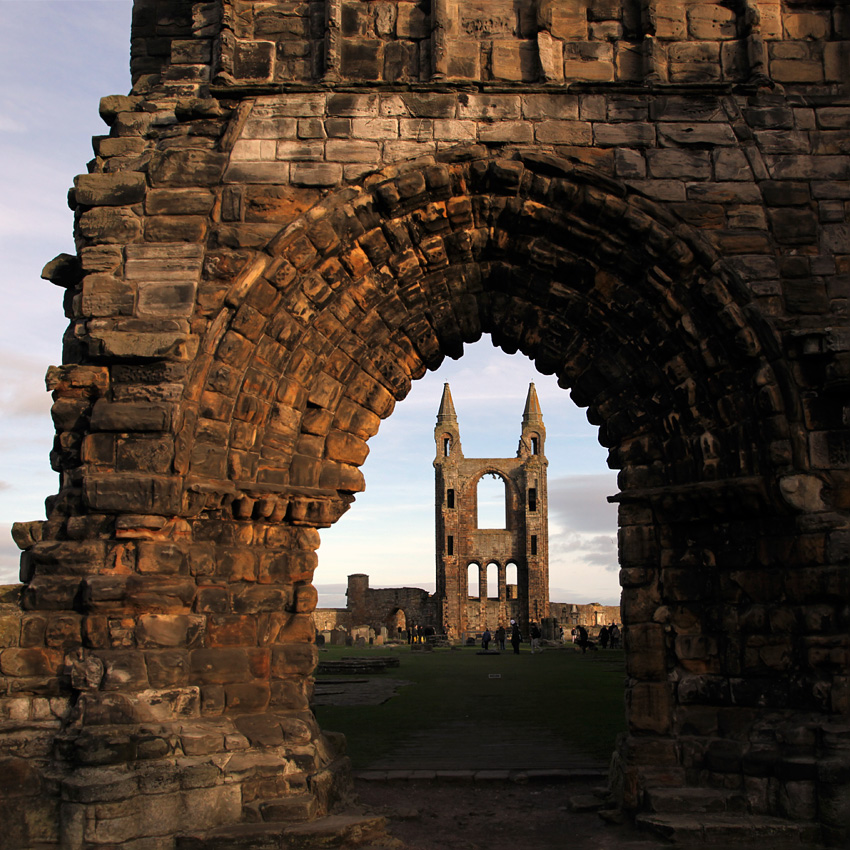 . . . perhaps THIS is the ultimate St. Andrews Cathedral ruins photo . . . or maybe . . . .
. . . perhaps THIS is the ultimate St. Andrews Cathedral ruins photo . . . or maybe . . . .
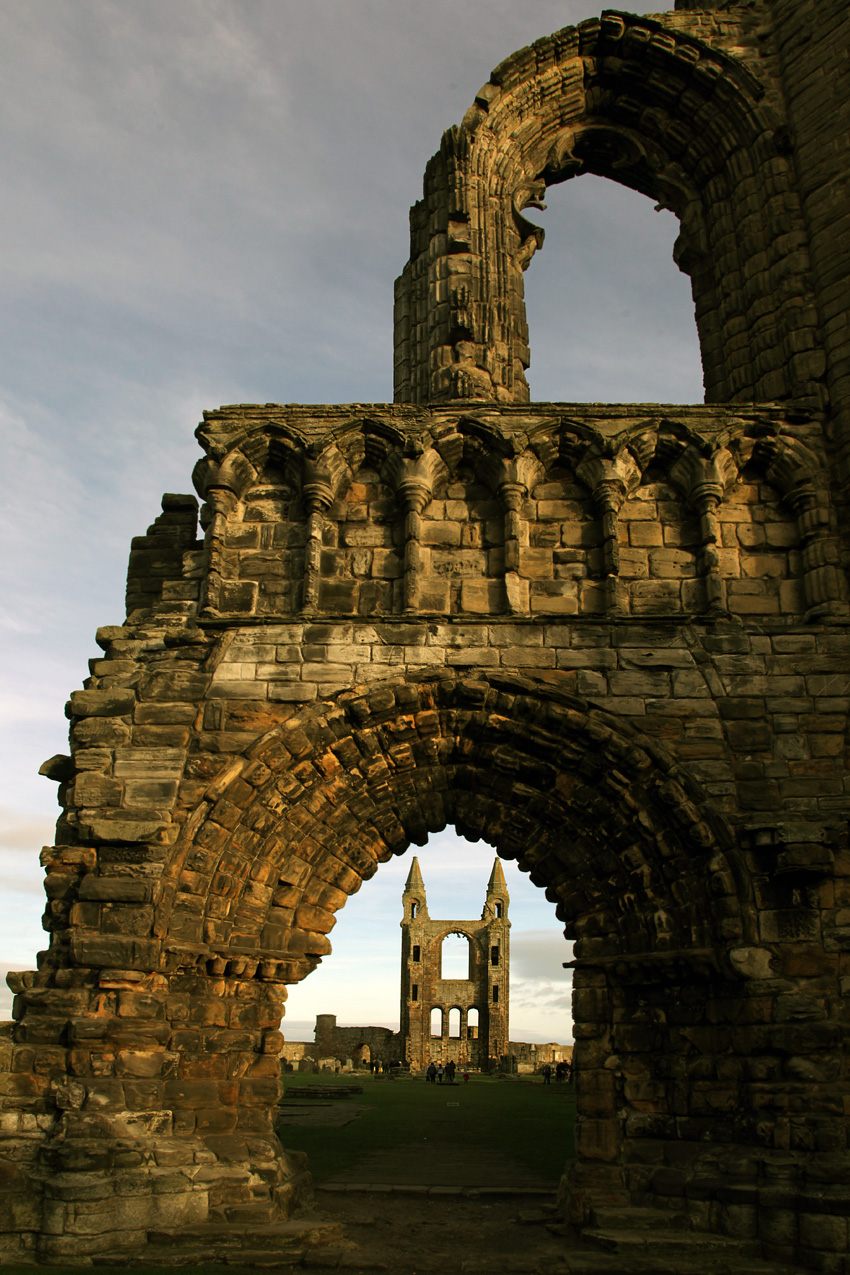 . . . no, this is the ultimate view . . .
. . . no, this is the ultimate view . . .
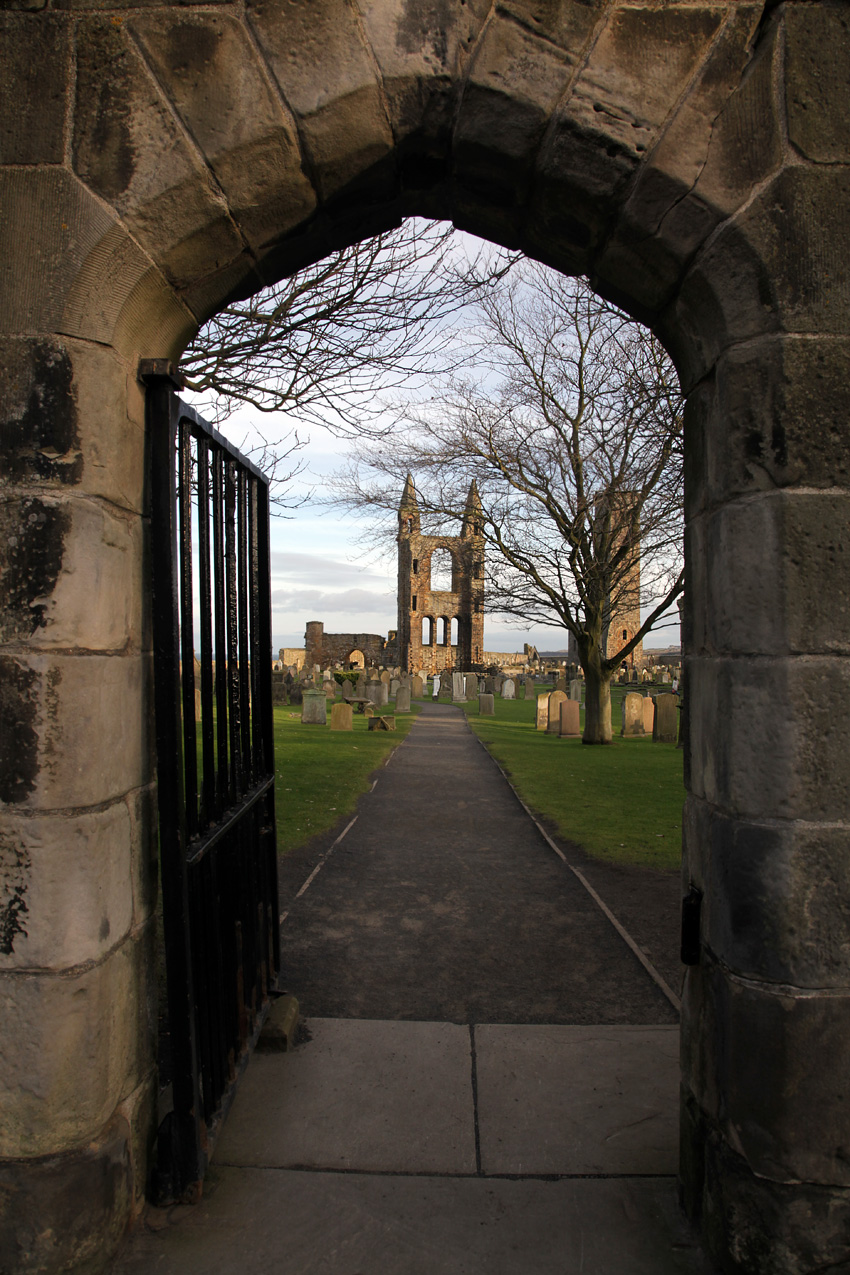 I know I will be back. Time to walk around town before the light fades altogether.
I know I will be back. Time to walk around town before the light fades altogether.
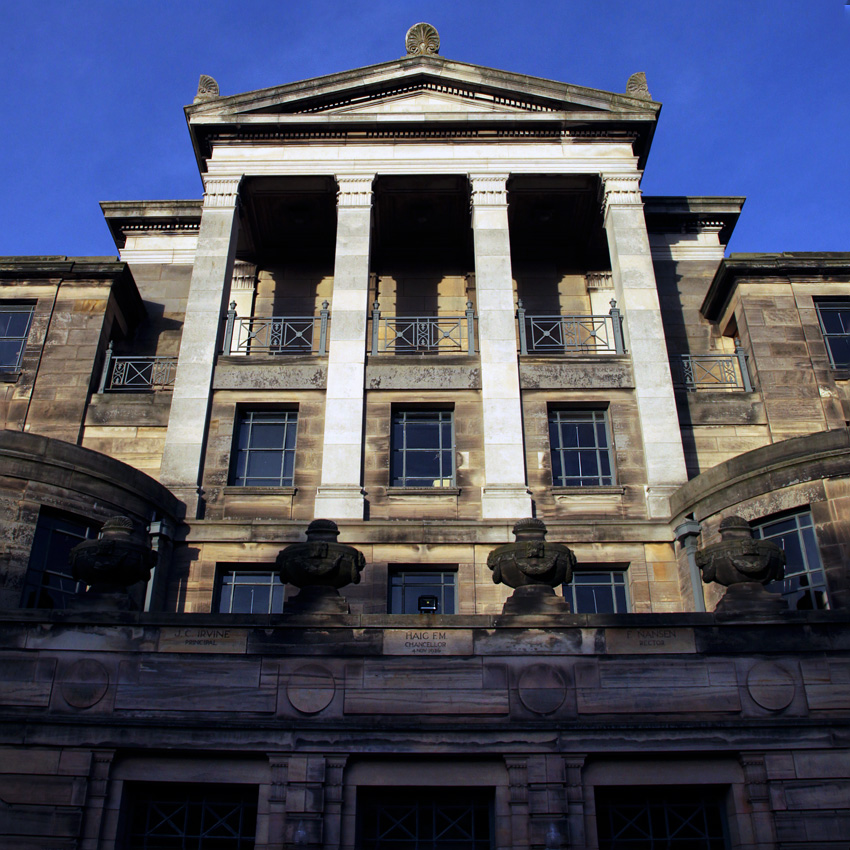 I wanted to find the University of St. Andrews, celebrating it's 600th birthday!
I wanted to find the University of St. Andrews, celebrating it's 600th birthday!
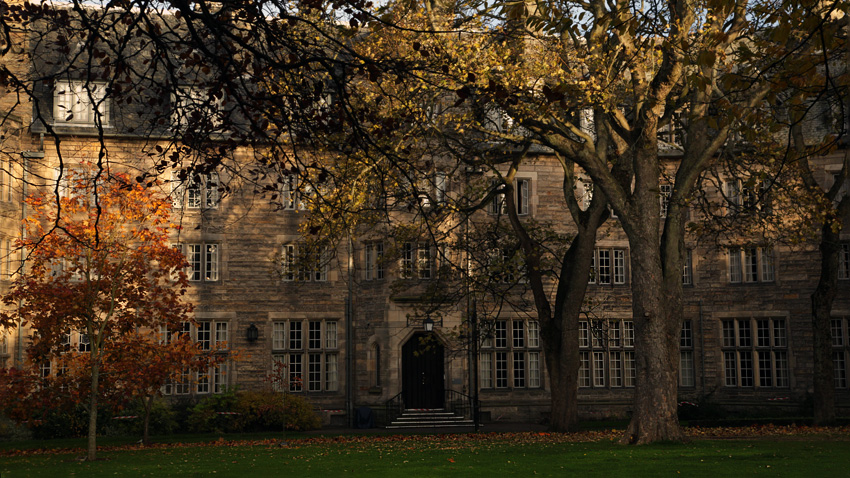 I love university campuses anyway . . . they are an island outside of the contemporary, meant to make meaning. St. Andrews University did not disappoint.
I love university campuses anyway . . . they are an island outside of the contemporary, meant to make meaning. St. Andrews University did not disappoint.
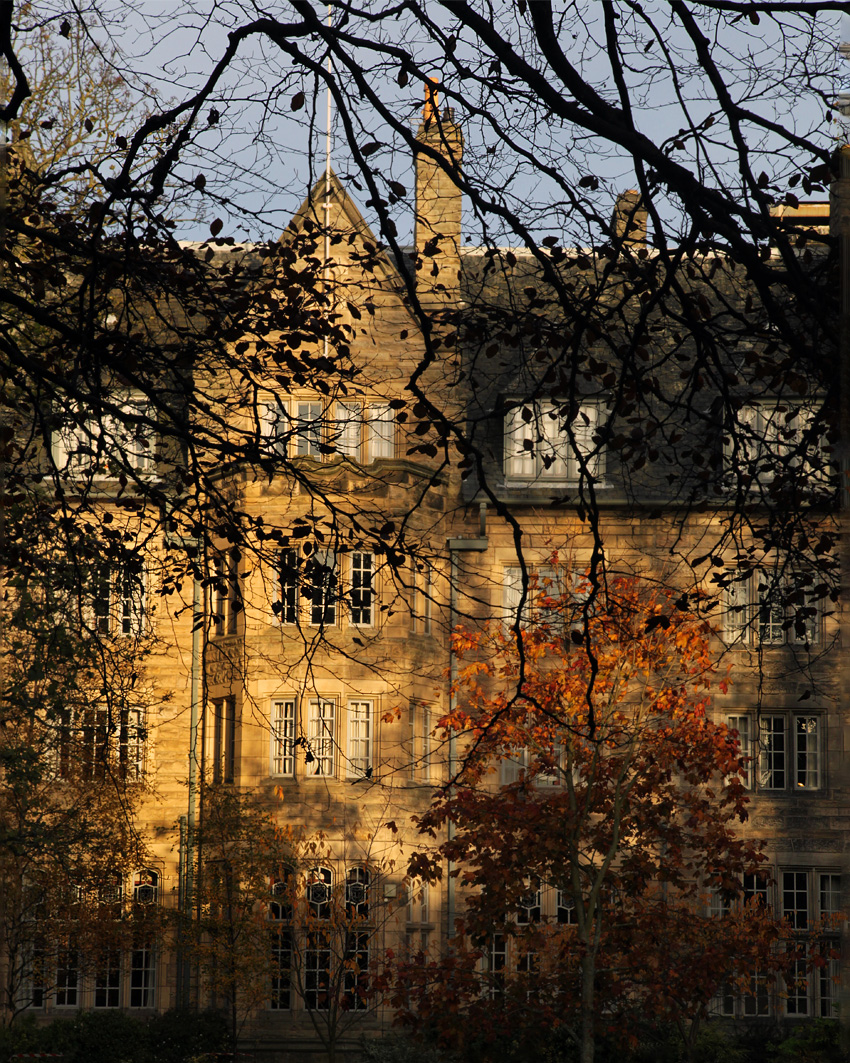 Stunning architecture and Autumn light and color.
Stunning architecture and Autumn light and color.
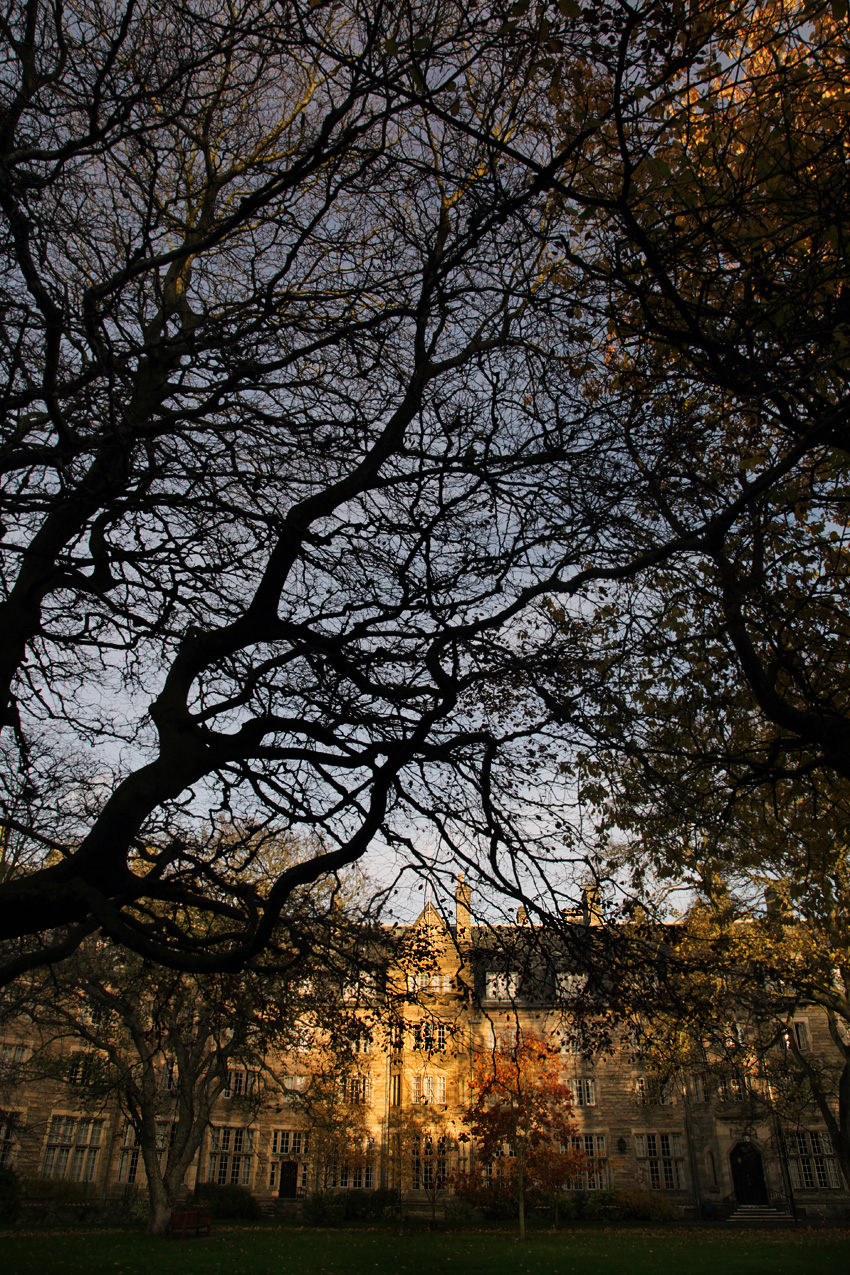 Autumn light!
Autumn light!
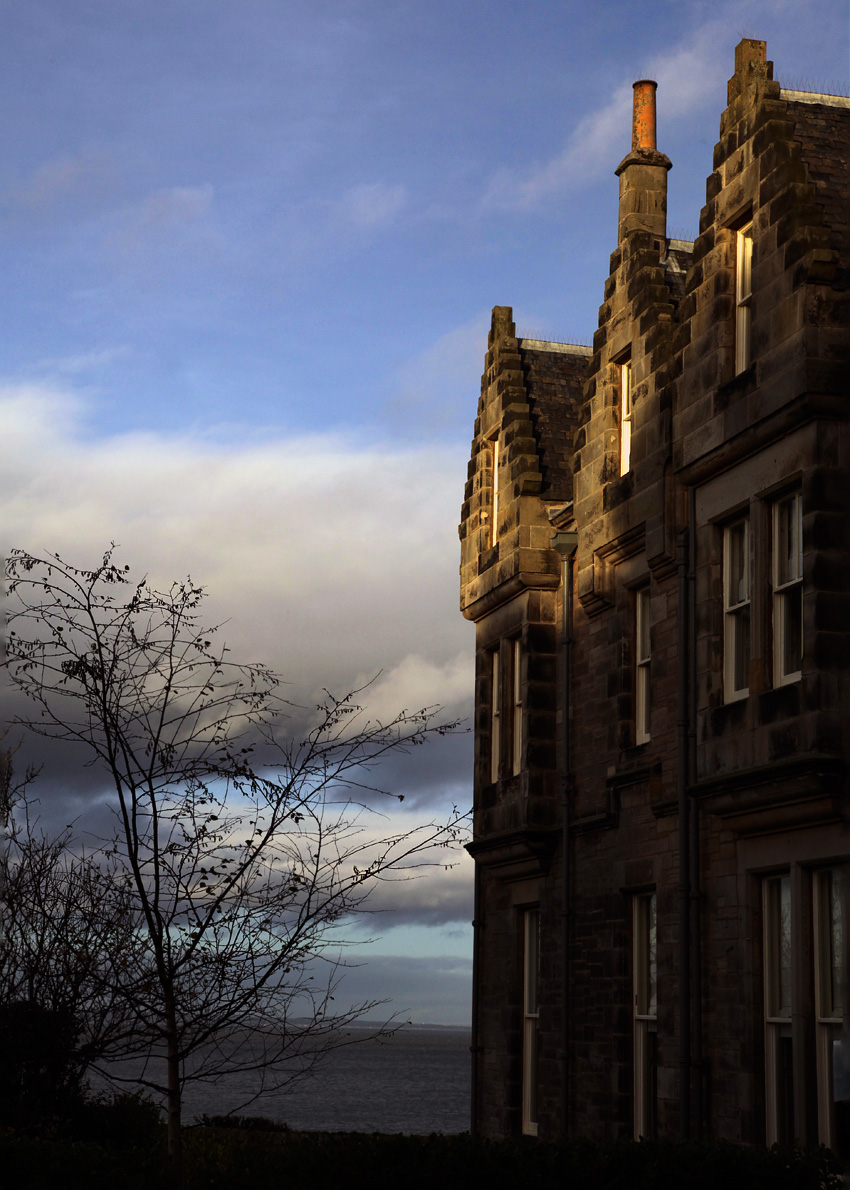 I returned to our B&B via the sea view route. The sea is always present in St. Andrews . . . as is The Castle.
I returned to our B&B via the sea view route. The sea is always present in St. Andrews . . . as is The Castle.

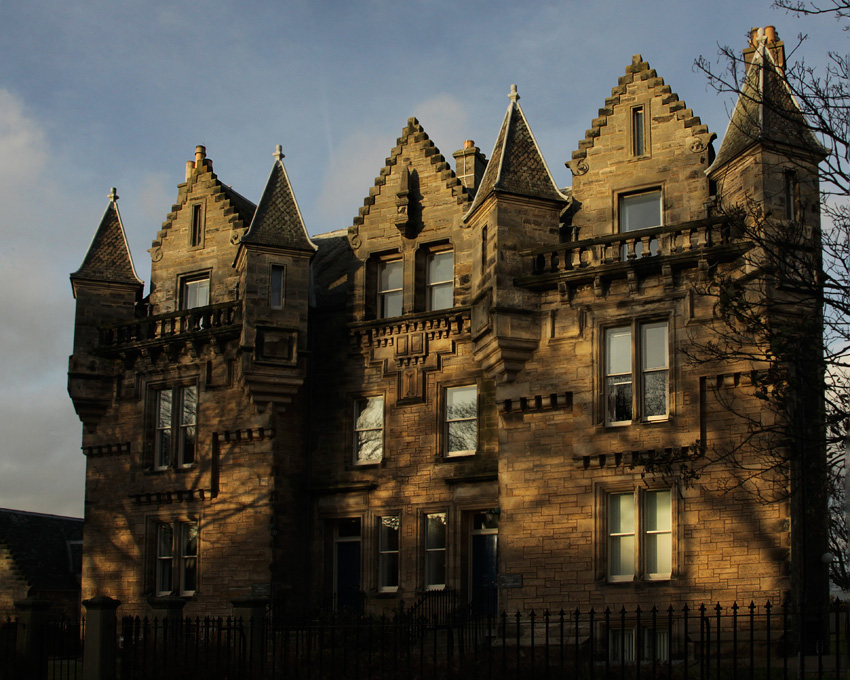 Wonderful old university structures along the coast.
Wonderful old university structures along the coast.
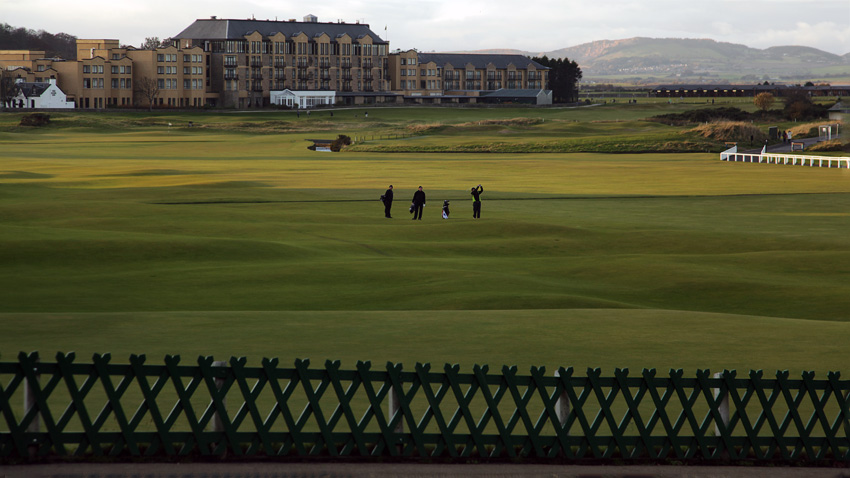 Let us not forget that St. Andrews is equally famous for it's title of "home of golf" with the world's oldest golf course just at the edge of town.
Let us not forget that St. Andrews is equally famous for it's title of "home of golf" with the world's oldest golf course just at the edge of town.
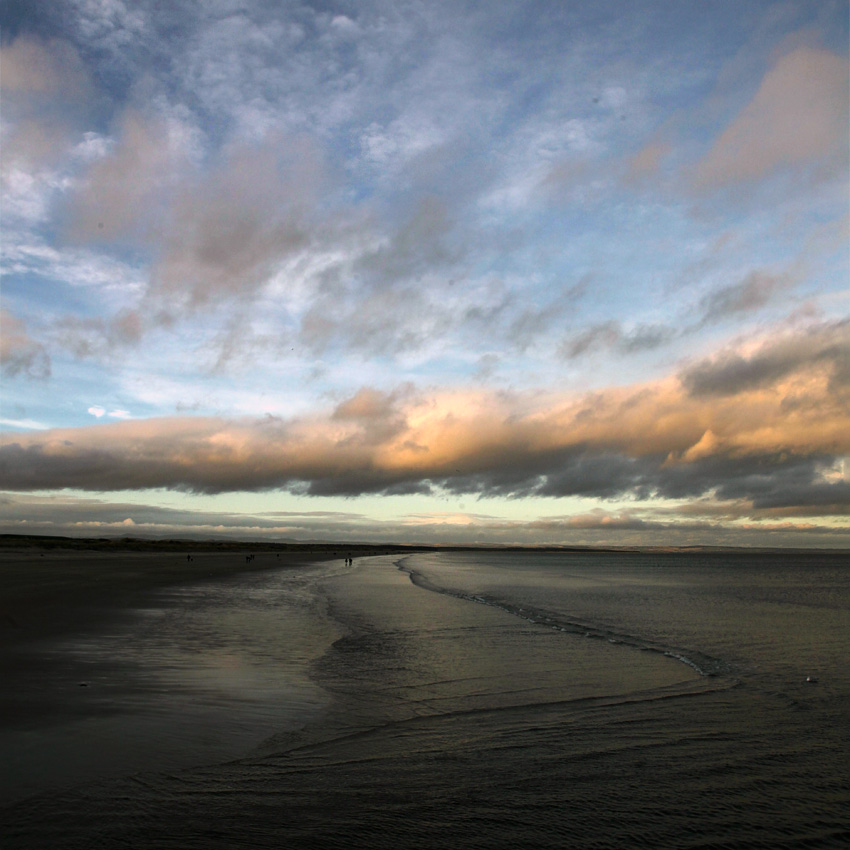 I was surprised to see such a wonderful stretch of beach adjacent to the golf course.
I was surprised to see such a wonderful stretch of beach adjacent to the golf course.
 People everywhere love walking on the beach at sunset.
People everywhere love walking on the beach at sunset.
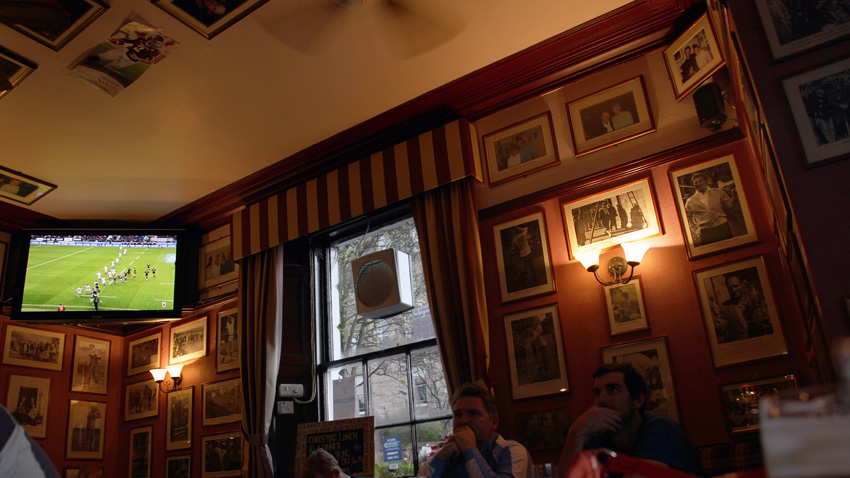 I rendezvoused with my wife at a pub around the corner from St. Andrew's Golf Course. It was filled with memorabilia from the many "Open Championships" held here. But the crowd was not interested in golf . . . this was a rugby day and the New Zealand All Blacks were playing England on the television. Everyone was rooting for the Kiwis and against England! I left my camera at the B&B and we went on to a wonderful evening out at a fabulous restaurant.
I rendezvoused with my wife at a pub around the corner from St. Andrew's Golf Course. It was filled with memorabilia from the many "Open Championships" held here. But the crowd was not interested in golf . . . this was a rugby day and the New Zealand All Blacks were playing England on the television. Everyone was rooting for the Kiwis and against England! I left my camera at the B&B and we went on to a wonderful evening out at a fabulous restaurant.
 The next morning I woke before first light to see the town at sunrise.
The next morning I woke before first light to see the town at sunrise.
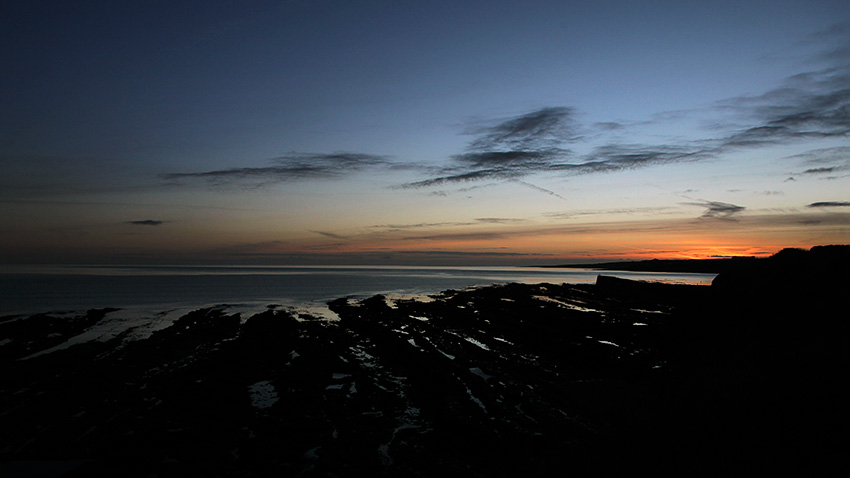 I walked along the seaside path as the sun rose over the North Sea.
I walked along the seaside path as the sun rose over the North Sea.
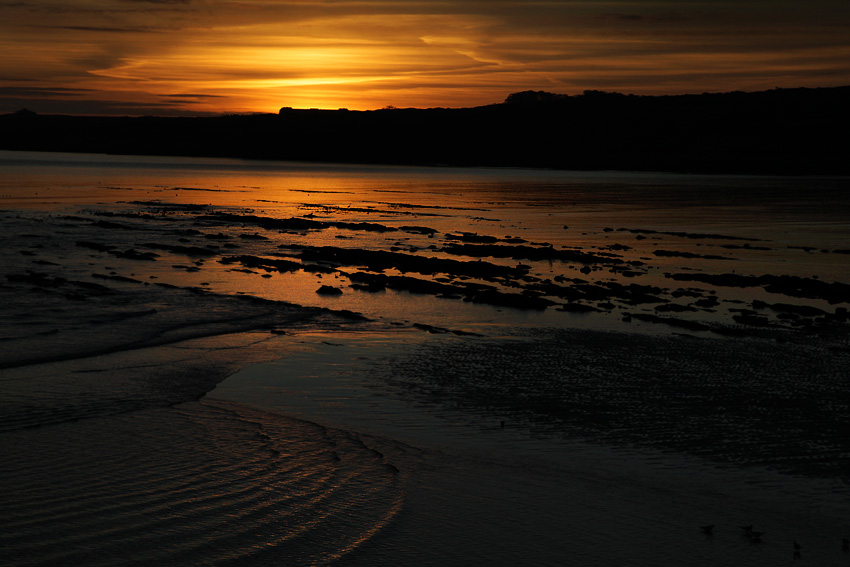 I was greeted with an exquisite sunrise from the end of the old St. Andrews jetty.
I was greeted with an exquisite sunrise from the end of the old St. Andrews jetty.
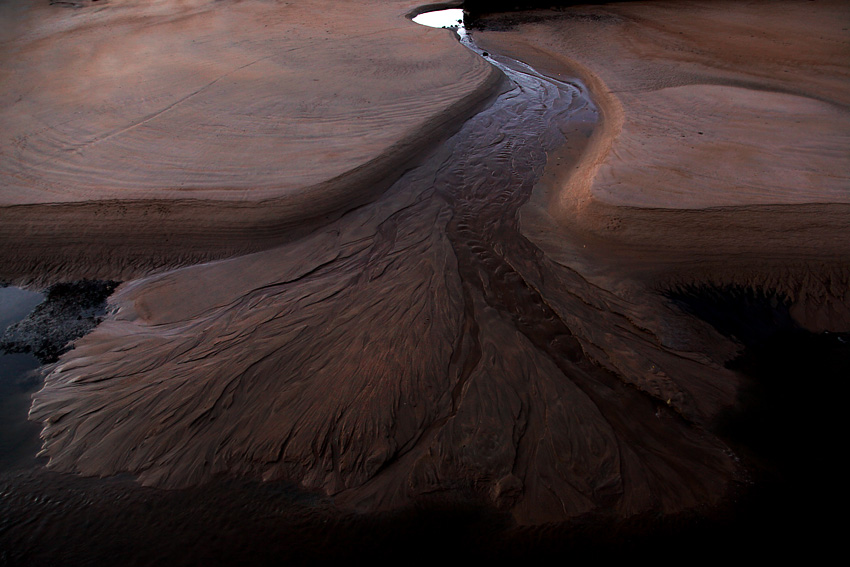 As the morning light expanded, the marshes leading to the boat basin came into view as the tide rose.
As the morning light expanded, the marshes leading to the boat basin came into view as the tide rose.
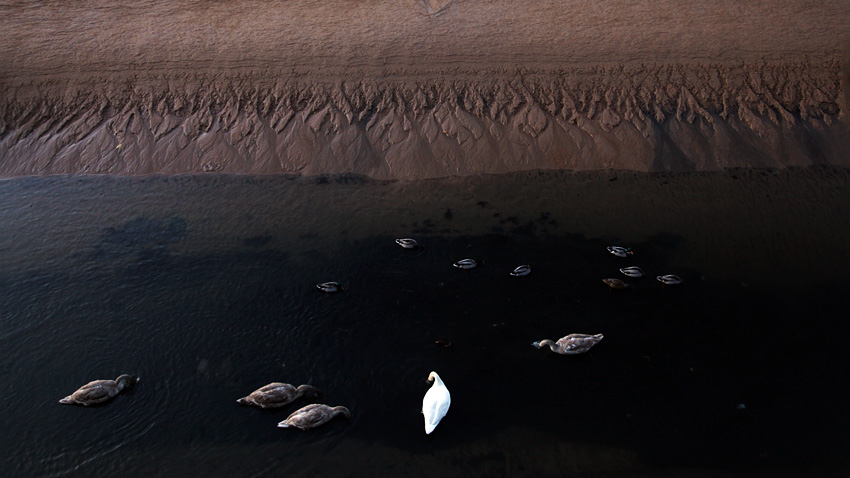 I was the only person outside to see this new dawn.
I was the only person outside to see this new dawn.
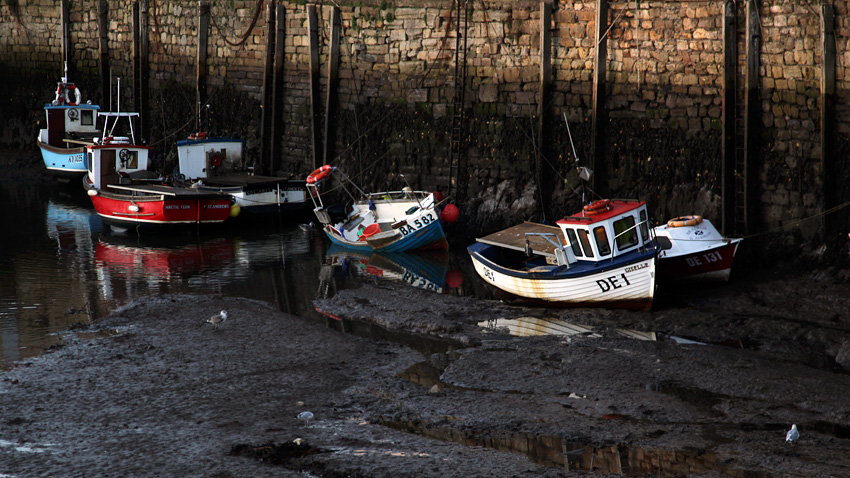 Many fishermen stood around waiting for the tide to rise enough to free their boats for the day's labor.
Many fishermen stood around waiting for the tide to rise enough to free their boats for the day's labor.
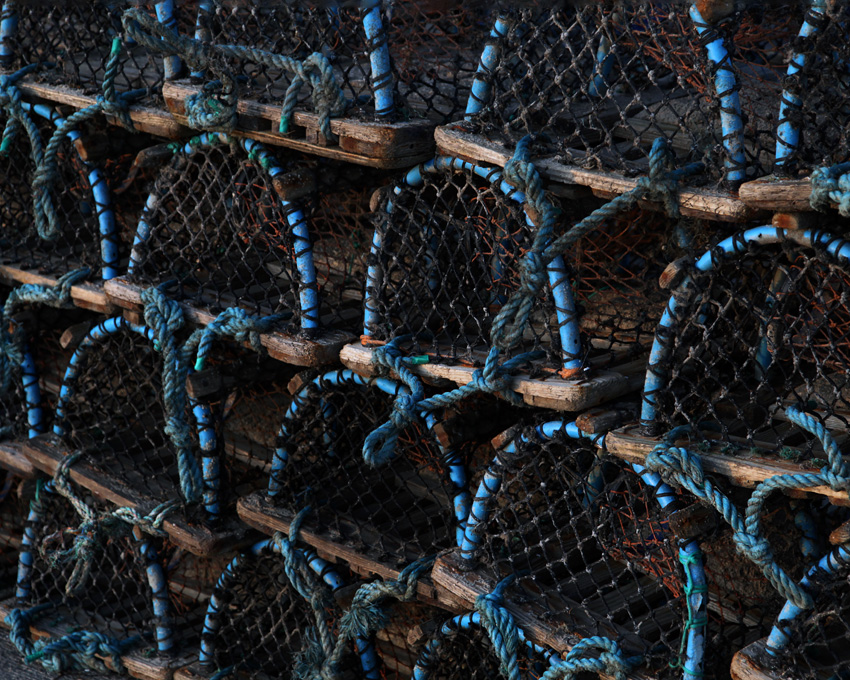 Some of the fishermen began to load their crab pots into their teetering boats.
Some of the fishermen began to load their crab pots into their teetering boats.
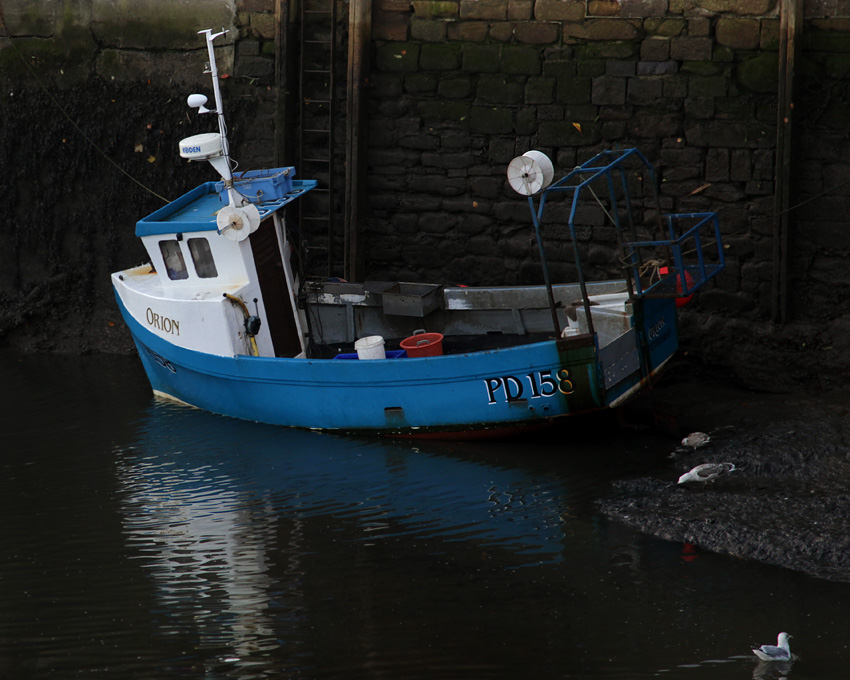 It was very pretty here . . . I could have stayed all day . . . but we had plans for the day.
It was very pretty here . . . I could have stayed all day . . . but we had plans for the day.
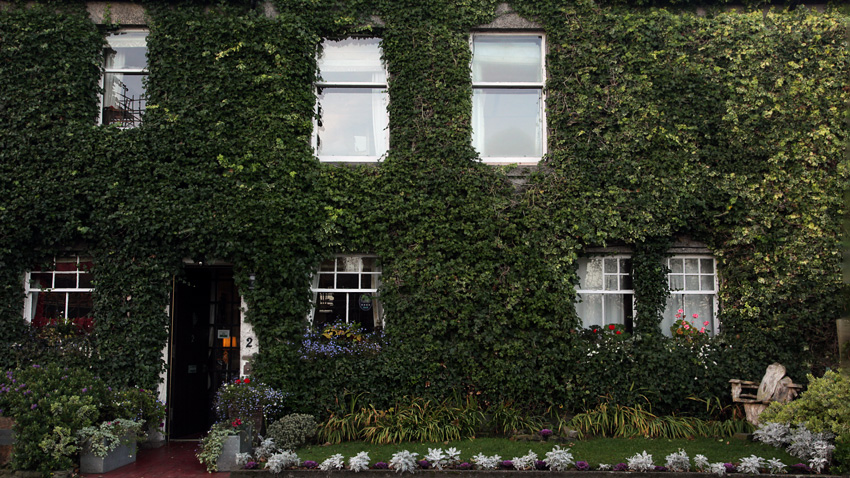 I walked back to our B&B fast, only taking a few photos . . . like this ivy covered cottage . . . completely archetypical. I was hungry.
I walked back to our B&B fast, only taking a few photos . . . like this ivy covered cottage . . . completely archetypical. I was hungry.
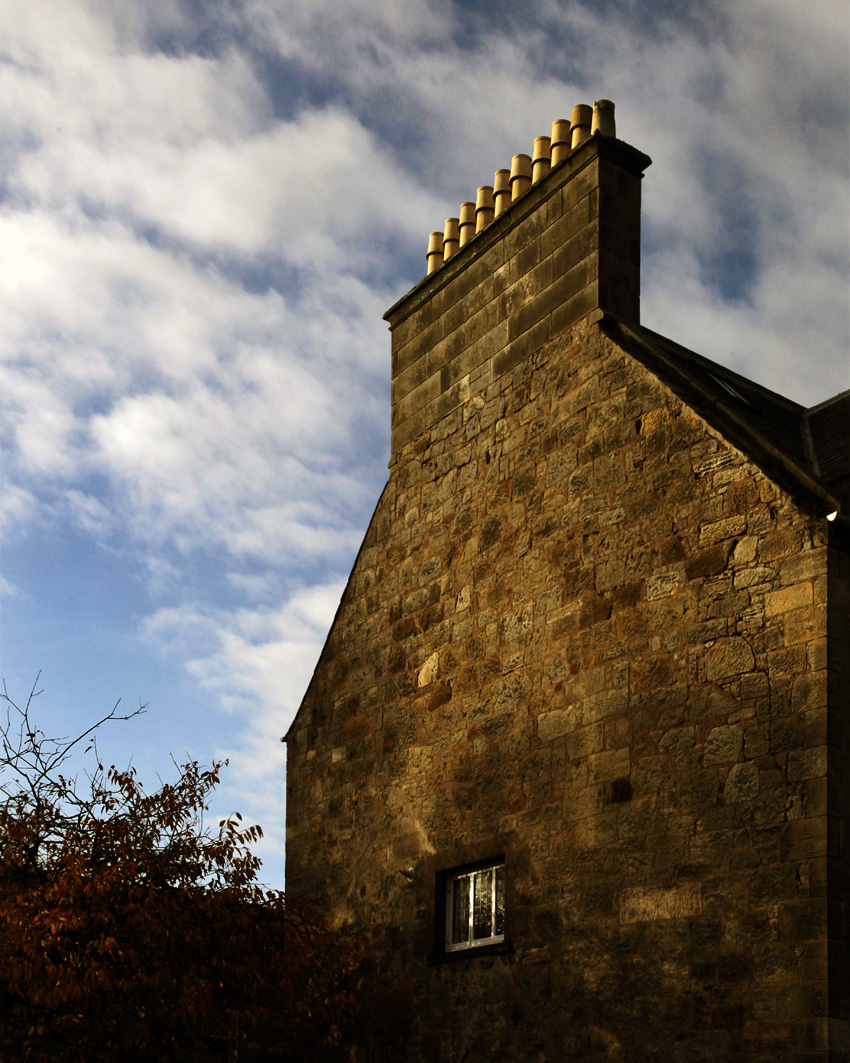 OK . . . I couldn't resist a few more photo of thi wonderful and ancient village . . .
OK . . . I couldn't resist a few more photo of thi wonderful and ancient village . . .
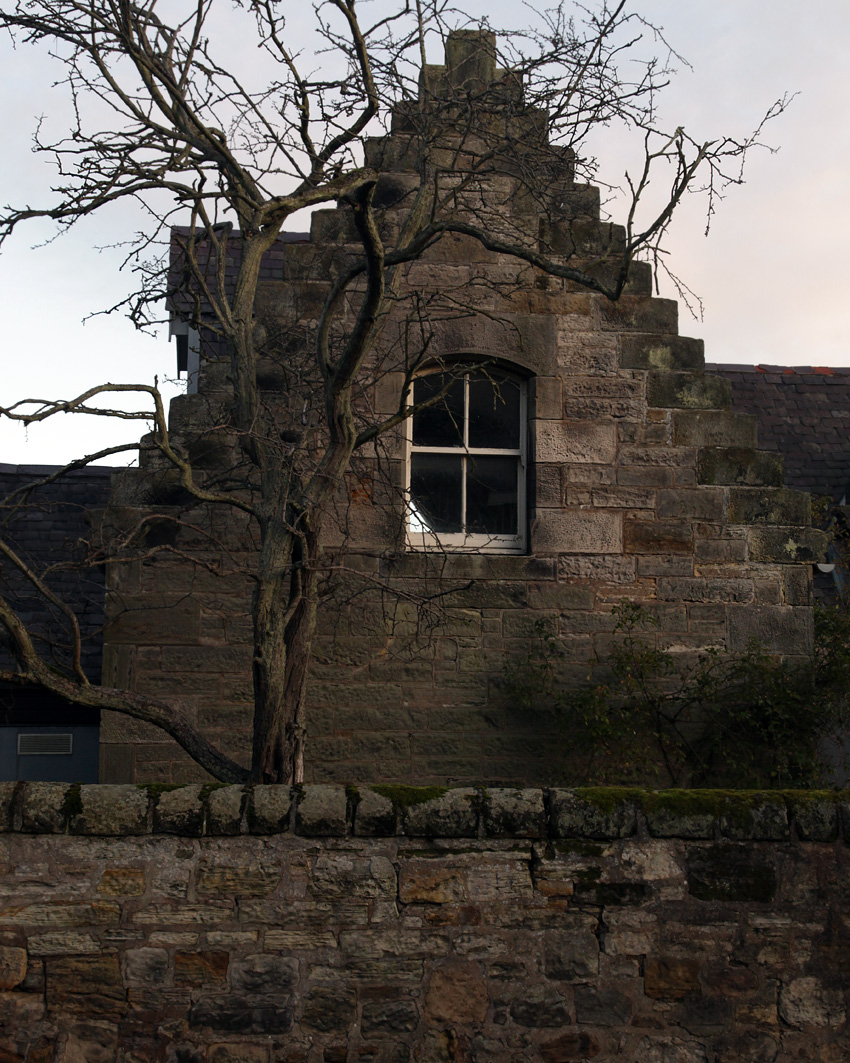 Just before `i rounded the corner to our B&B I took this photo . . . it says everythig about St. Andrews: stately, substanntial, and beautiful.
Just before `i rounded the corner to our B&B I took this photo . . . it says everythig about St. Andrews: stately, substanntial, and beautiful.
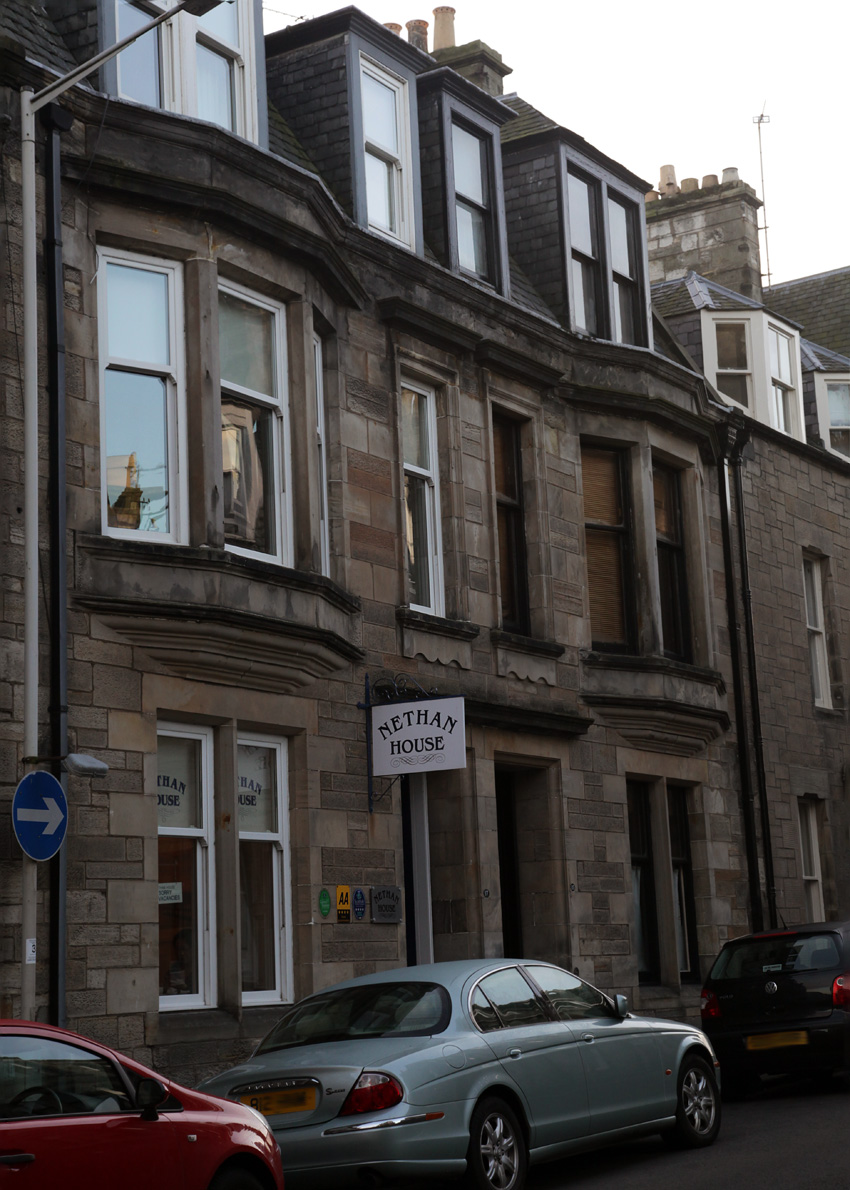 At last the Nathan Guest House. I went in and joined my wife for a fabuluus breakfast, then packed up for the drive to Sterling. I promised my wife we wold drive straight there withut stopping, so no photos of the country roads . . .
At last the Nathan Guest House. I went in and joined my wife for a fabuluus breakfast, then packed up for the drive to Sterling. I promised my wife we wold drive straight there withut stopping, so no photos of the country roads . . .
STERLING CASTLE:
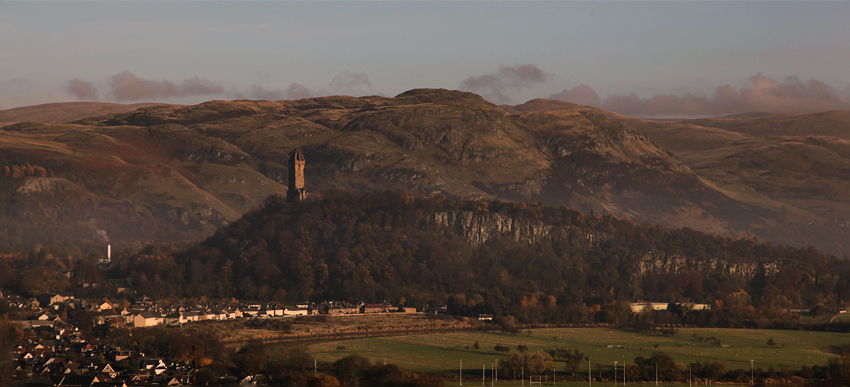 Sterling Castle sits atop a hill with commanding views of the surrounding valley. [The tower on a far hill is the Wallace Monument.]
Sterling Castle sits atop a hill with commanding views of the surrounding valley. [The tower on a far hill is the Wallace Monument.]
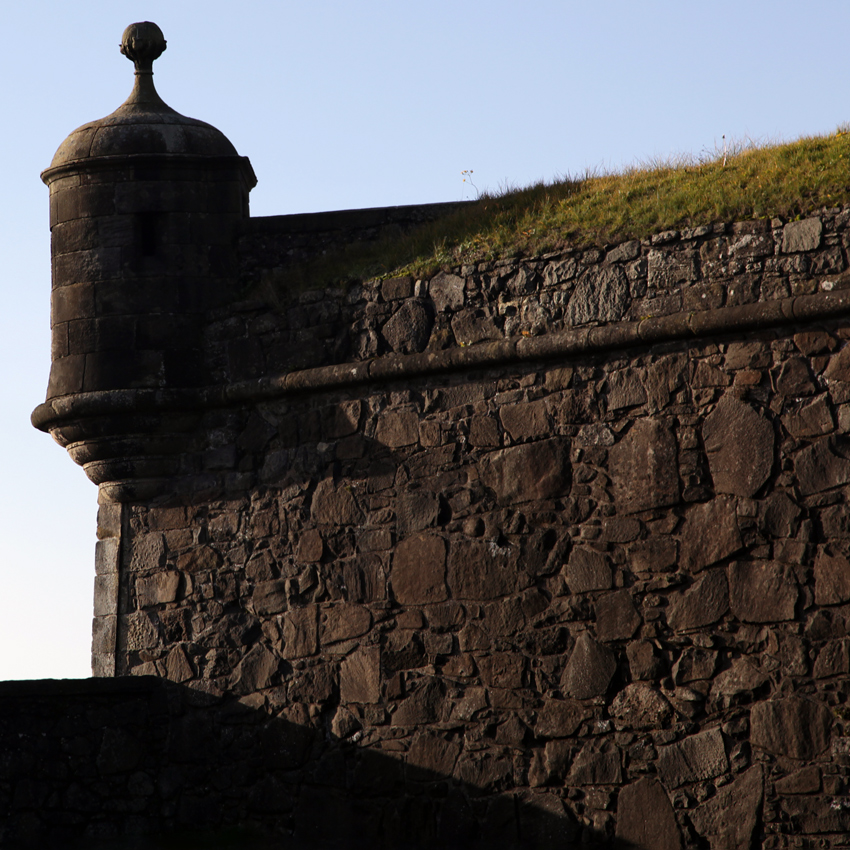 At first we did not realize we were in the presence of such a great and historic castle. I was infatuated with the details . . .
At first we did not realize we were in the presence of such a great and historic castle. I was infatuated with the details . . .
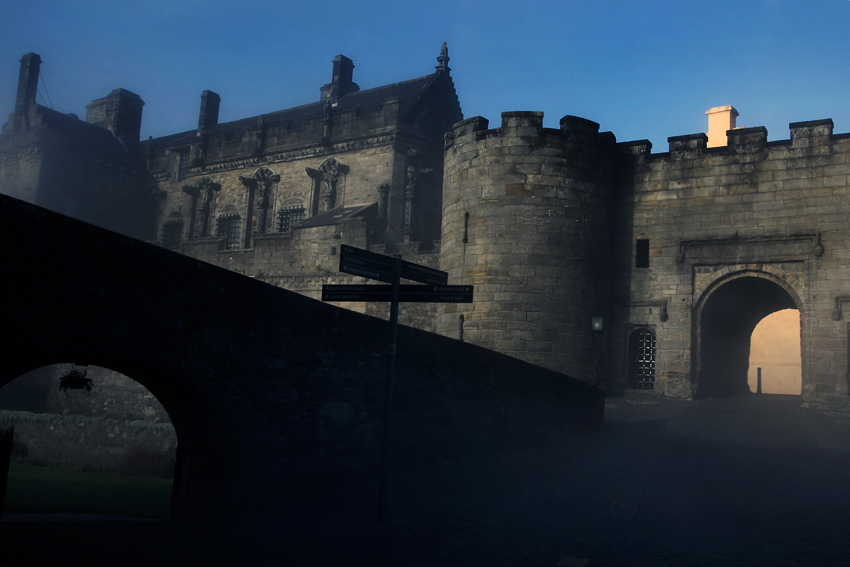 As the mist swirled around us, Sterling Castle came into view. Incredible. The archetypical castle.
As the mist swirled around us, Sterling Castle came into view. Incredible. The archetypical castle.
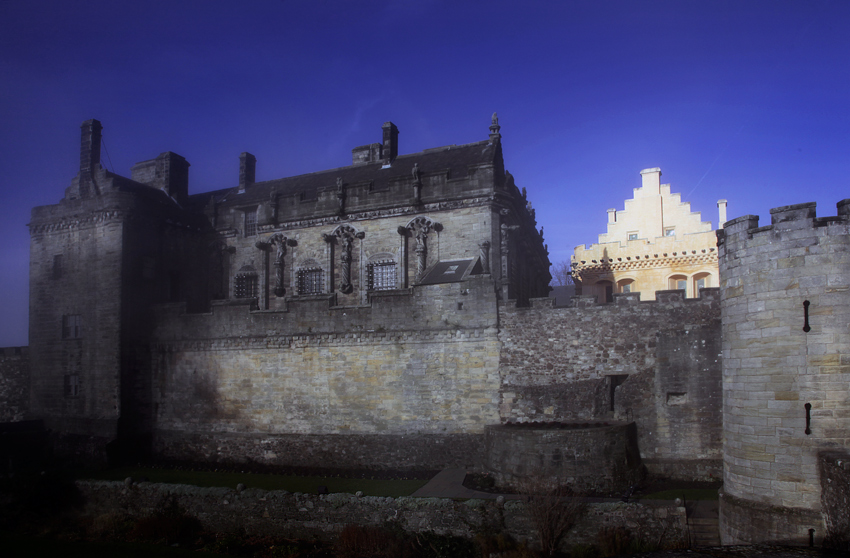 Sterling Castle. The swirling mist changed the lighting on the castle surfaces every second.
Sterling Castle. The swirling mist changed the lighting on the castle surfaces every second.
 We walked around on the castle's outer defences . . . taking in the grandeur.
We walked around on the castle's outer defences . . . taking in the grandeur.
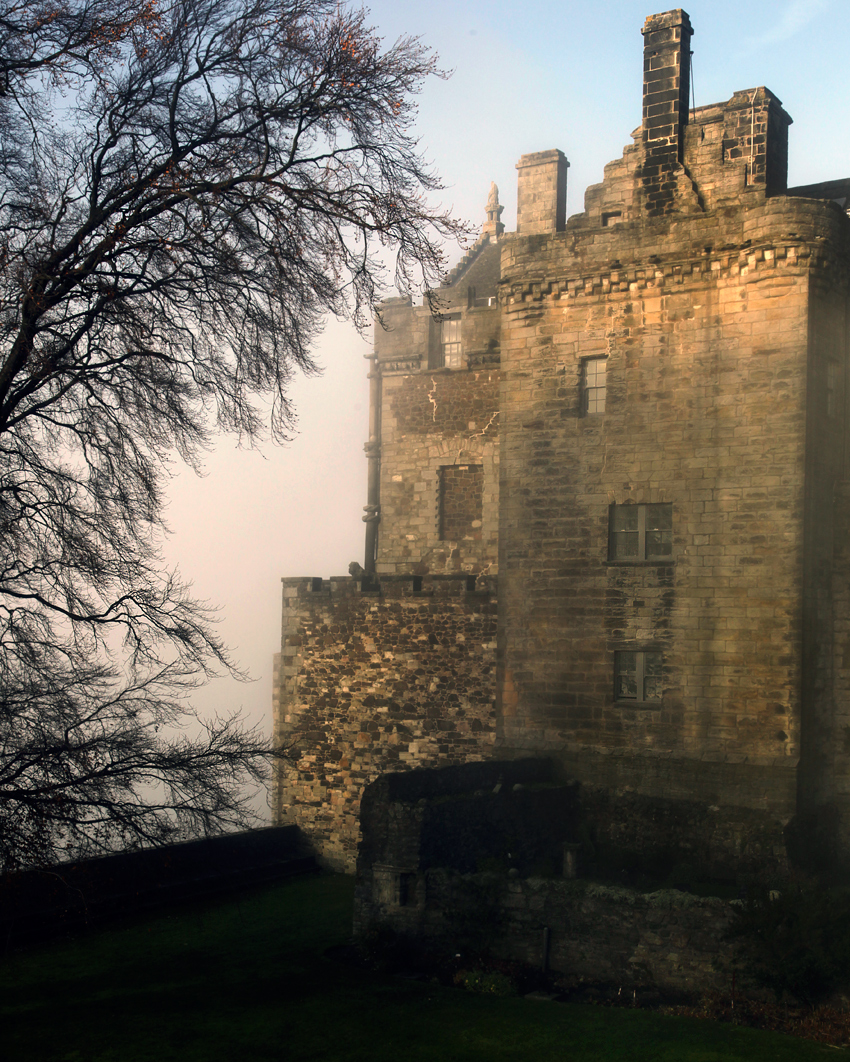 The weak, low winter light on the surfaces lent an air of mystery.
The weak, low winter light on the surfaces lent an air of mystery.
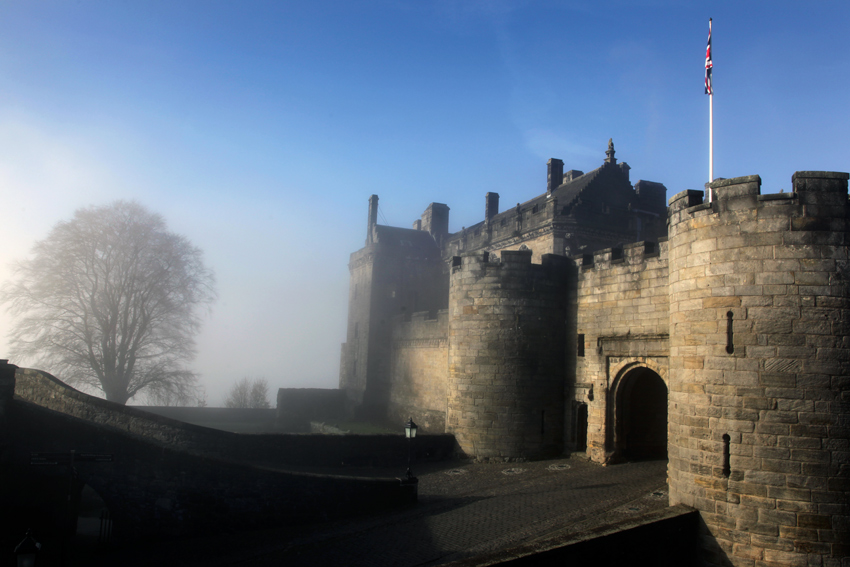 THE Perfect Castle!
THE Perfect Castle!
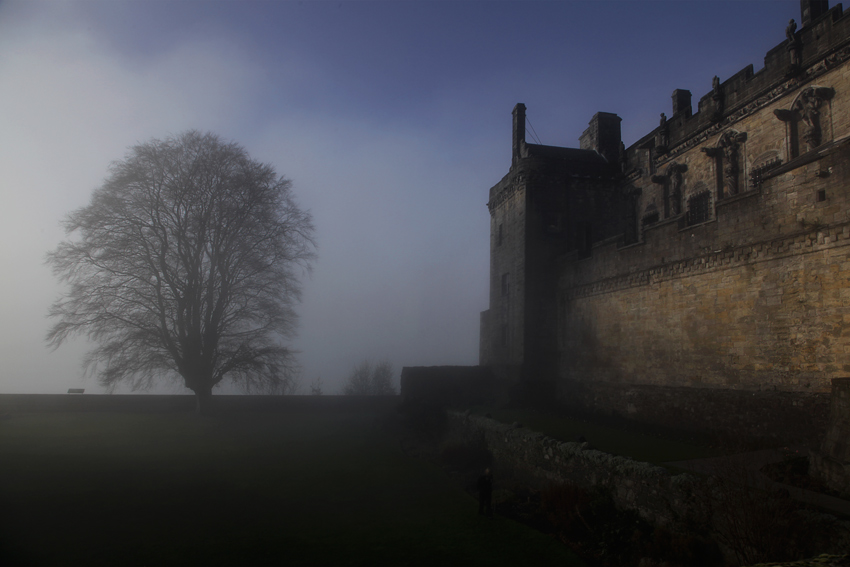 Castle and morning mist-shrouded tree.
Castle and morning mist-shrouded tree.
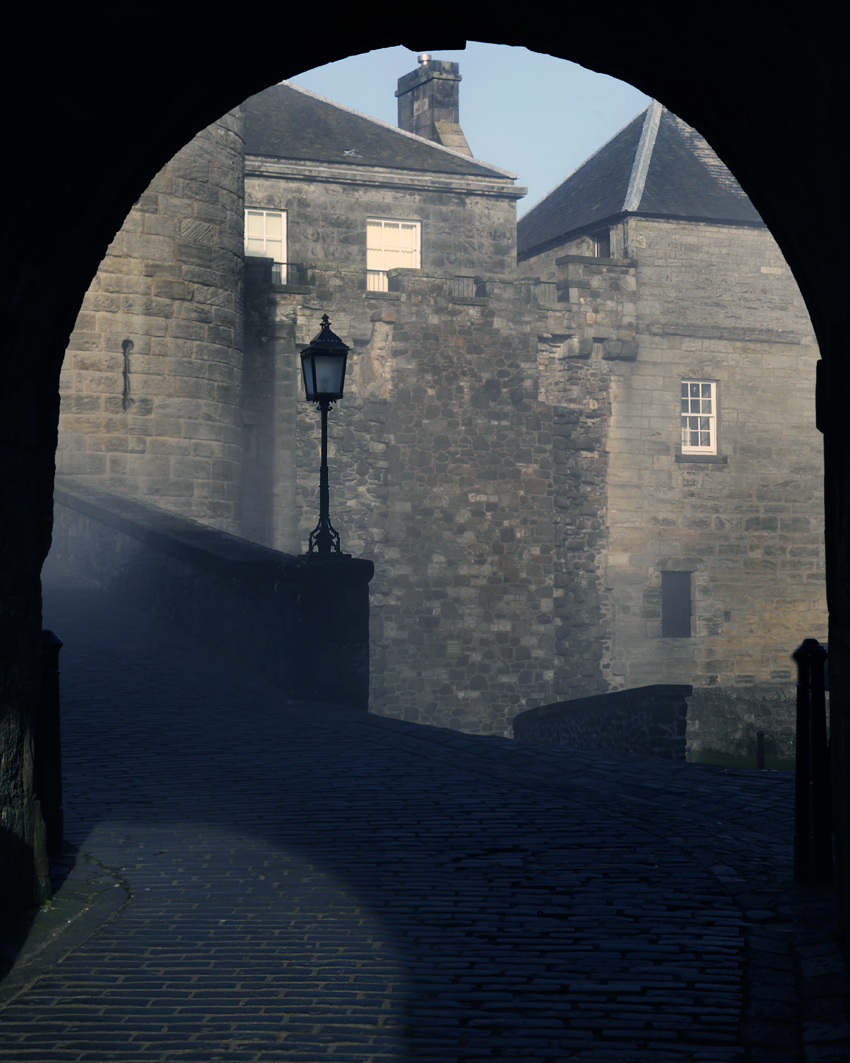 We entered the castle through several arched openings.
We entered the castle through several arched openings.
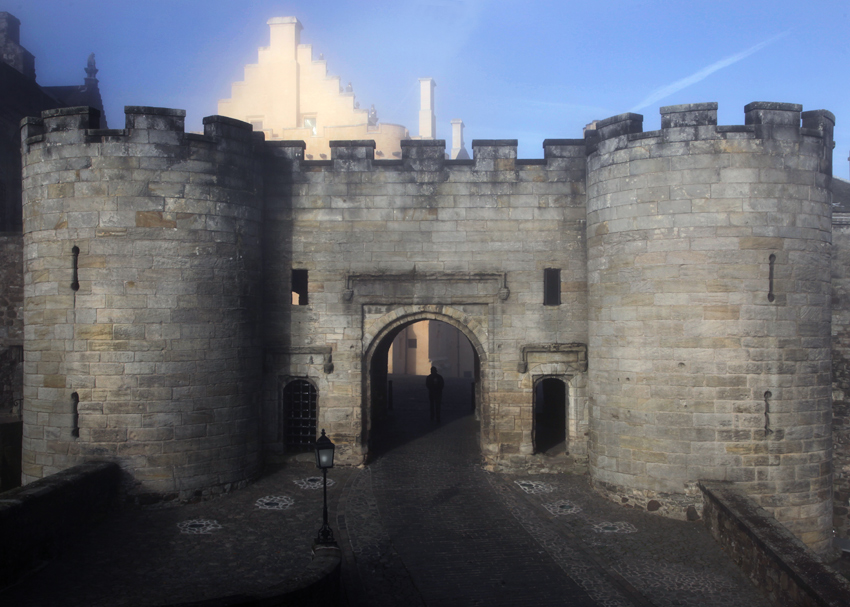 Sterling Castle gate.
Sterling Castle gate.
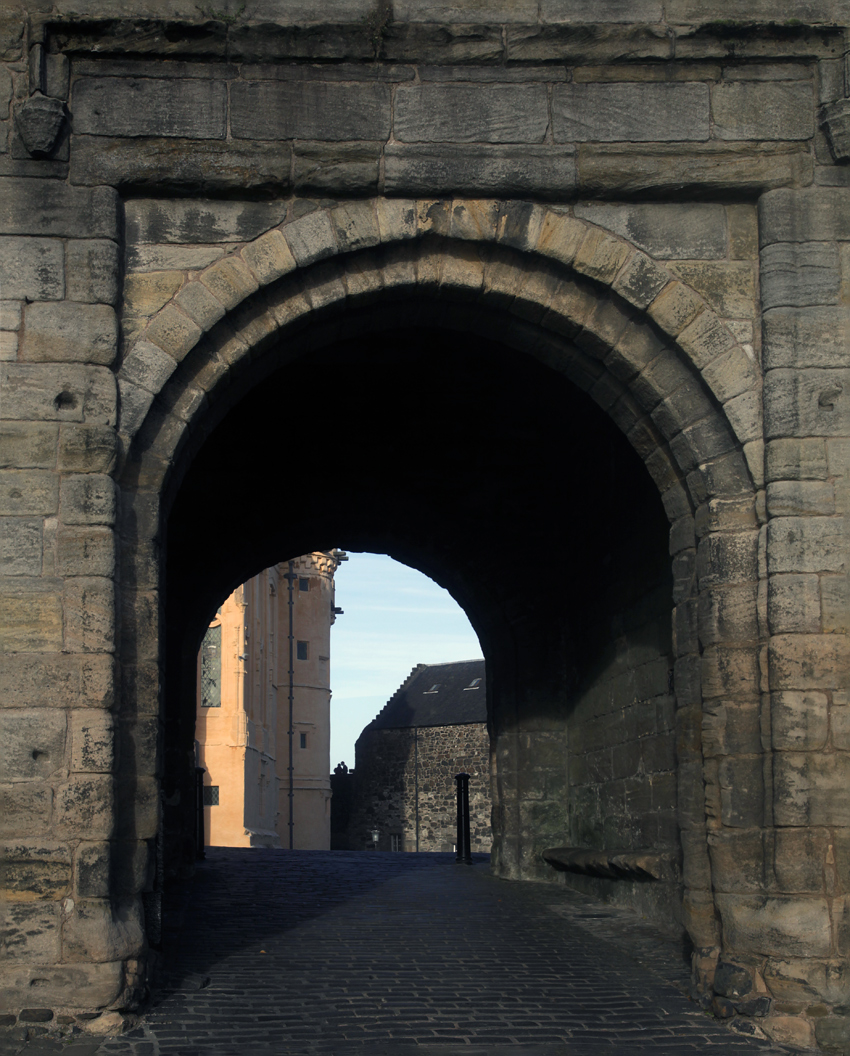 What would we find inside?
What would we find inside?
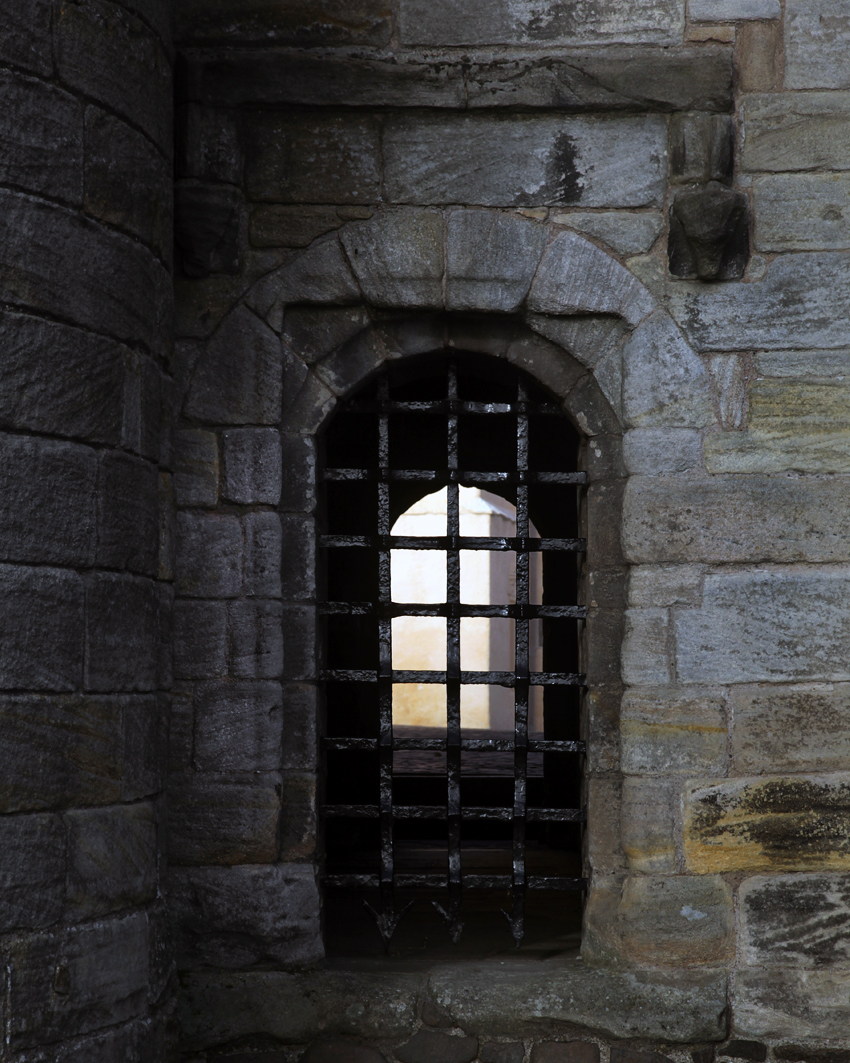 Sterling Castle is not a castle that was abandoned and then restored. It is a living castle with all of its original features still intact . . . a very rare find.
Sterling Castle is not a castle that was abandoned and then restored. It is a living castle with all of its original features still intact . . . a very rare find.
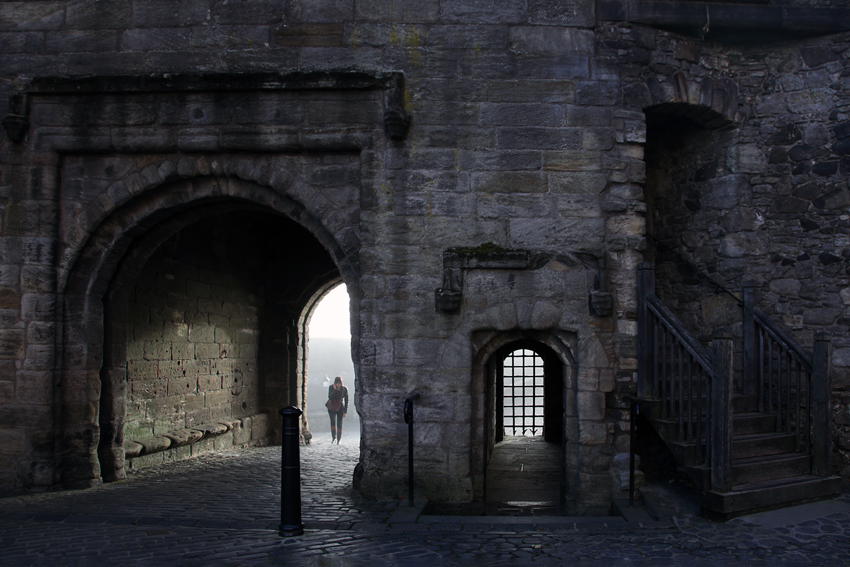 Looking back out of the gates. The optical illusion here is interesting . . . Just how large are these stairs on the right?
Looking back out of the gates. The optical illusion here is interesting . . . Just how large are these stairs on the right?
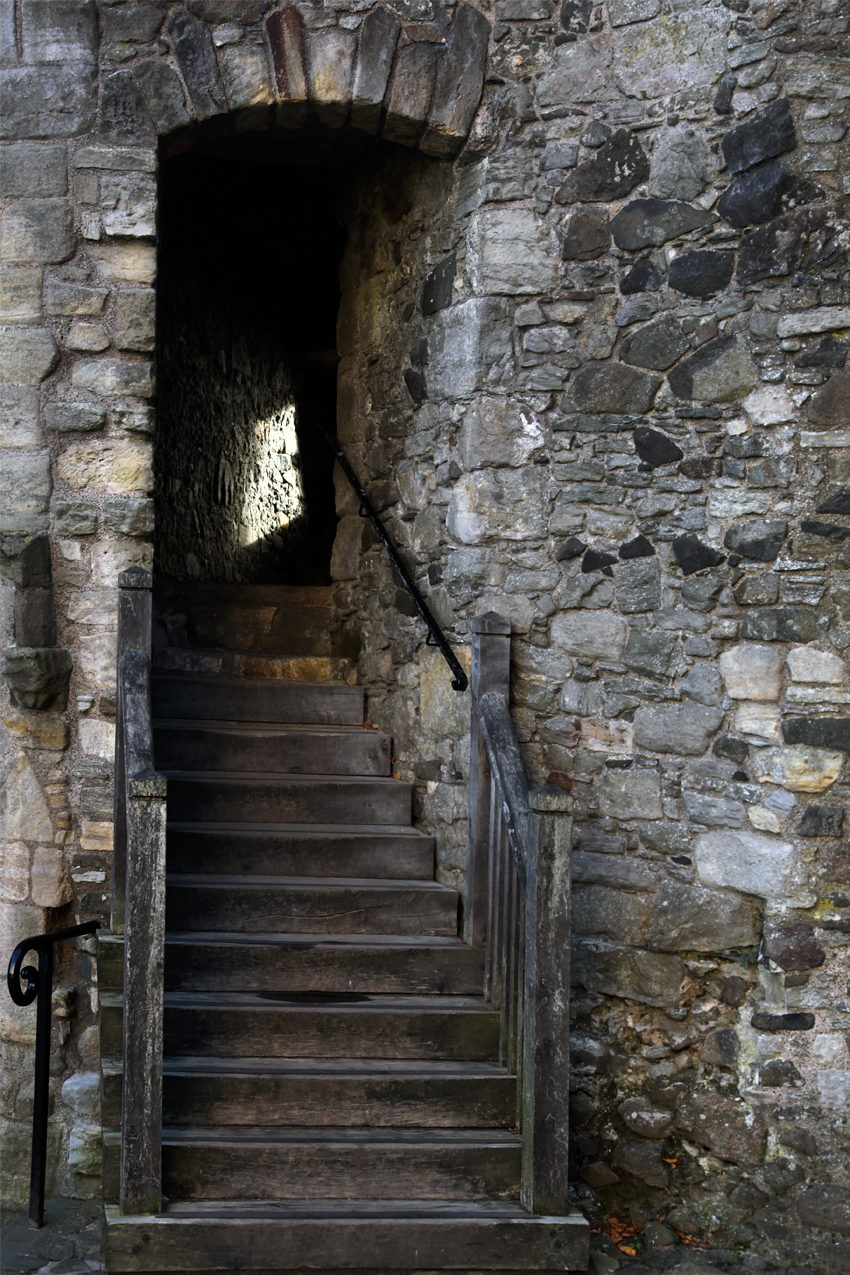 The oversized stairs led who-knows-where. I am so attracted to these castle doors and stairs: where do they lead? What mysteries are to be found beyond?
The oversized stairs led who-knows-where. I am so attracted to these castle doors and stairs: where do they lead? What mysteries are to be found beyond?
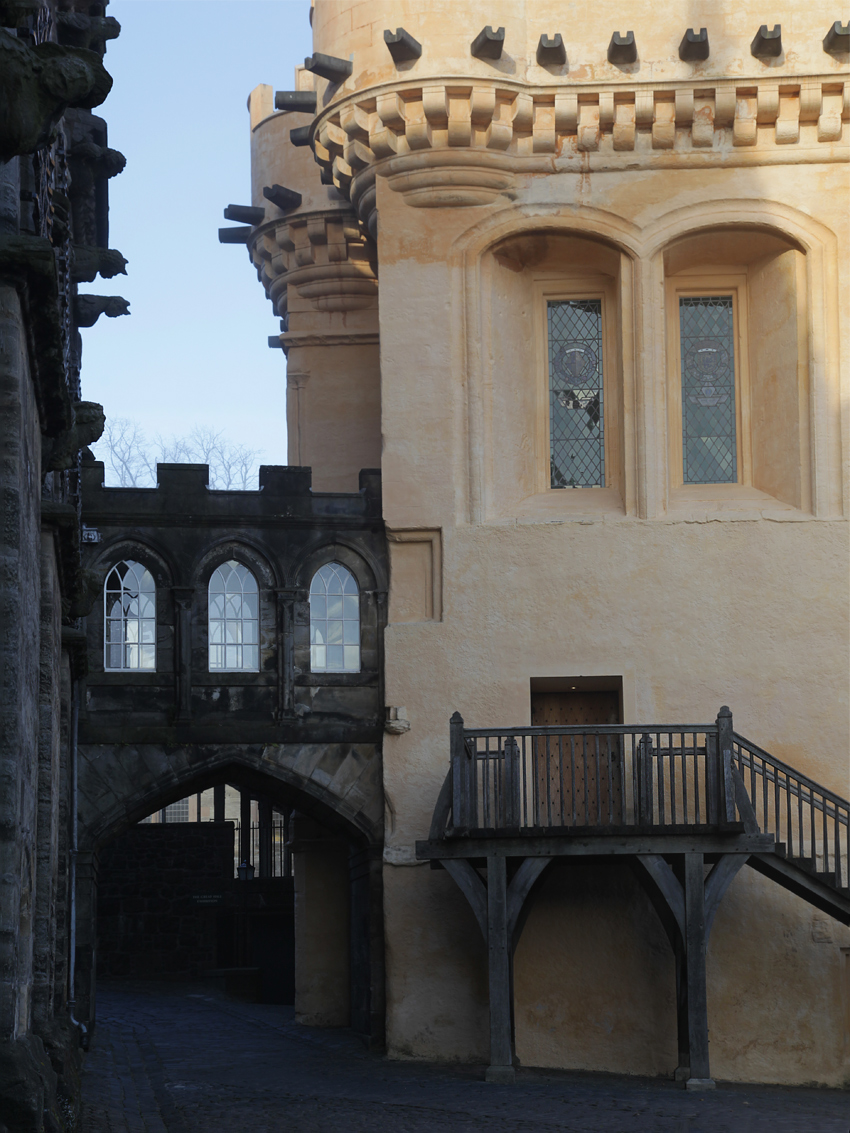 The morning ground fog came and went. The interior courtyards were breathtaking. This is not a movie set, or a Disney creation, this is a real castle.
The morning ground fog came and went. The interior courtyards were breathtaking. This is not a movie set, or a Disney creation, this is a real castle.
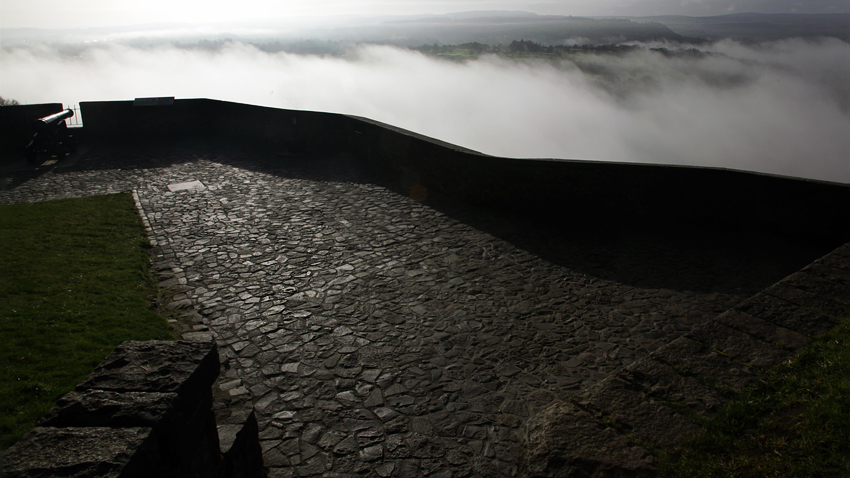 We walked though one of those doors and came out on the outer defensive ramparts of Sterling Castle. The castle-on-a-hill rose above the fog in the valley below. Wonderful.
We walked though one of those doors and came out on the outer defensive ramparts of Sterling Castle. The castle-on-a-hill rose above the fog in the valley below. Wonderful.
Medieval view from the castle.
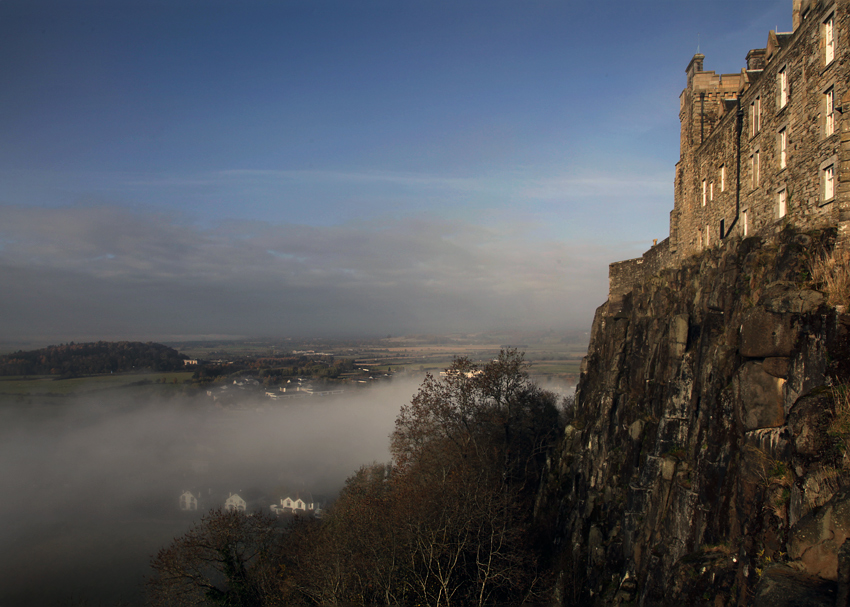 This would have been better as a movie clip: the fog strands and wisps were moving quickly below the castle.
This would have been better as a movie clip: the fog strands and wisps were moving quickly below the castle.
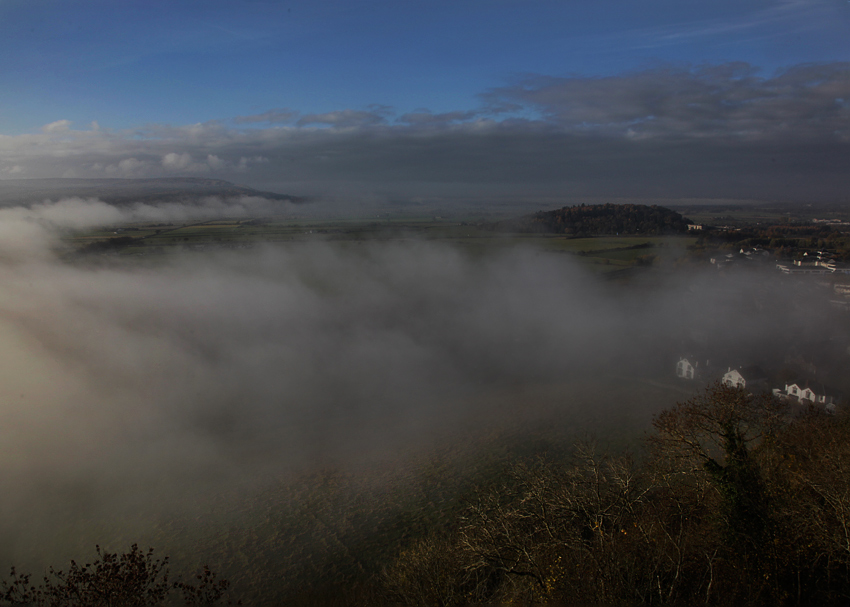 We were transfixed by the ever-changing fog below the castle.
We were transfixed by the ever-changing fog below the castle.
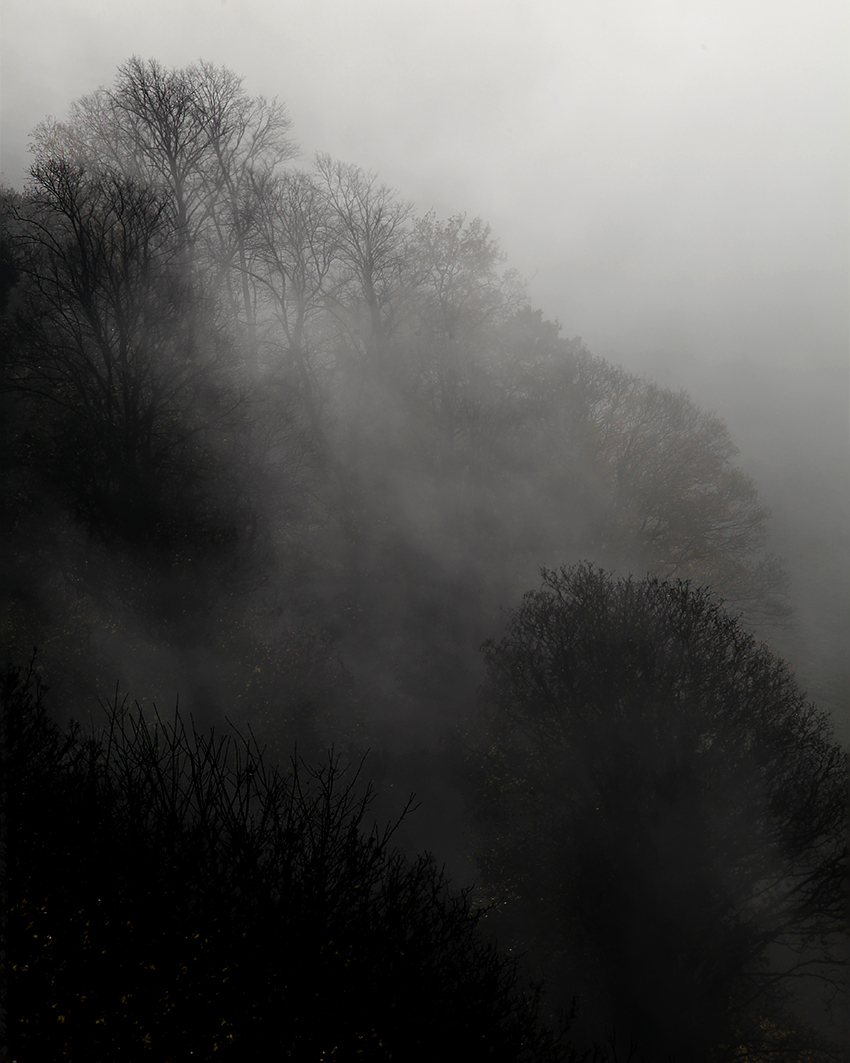 The fog sifted through the autumnal trees on the slopes of the castle mound.
The fog sifted through the autumnal trees on the slopes of the castle mound.
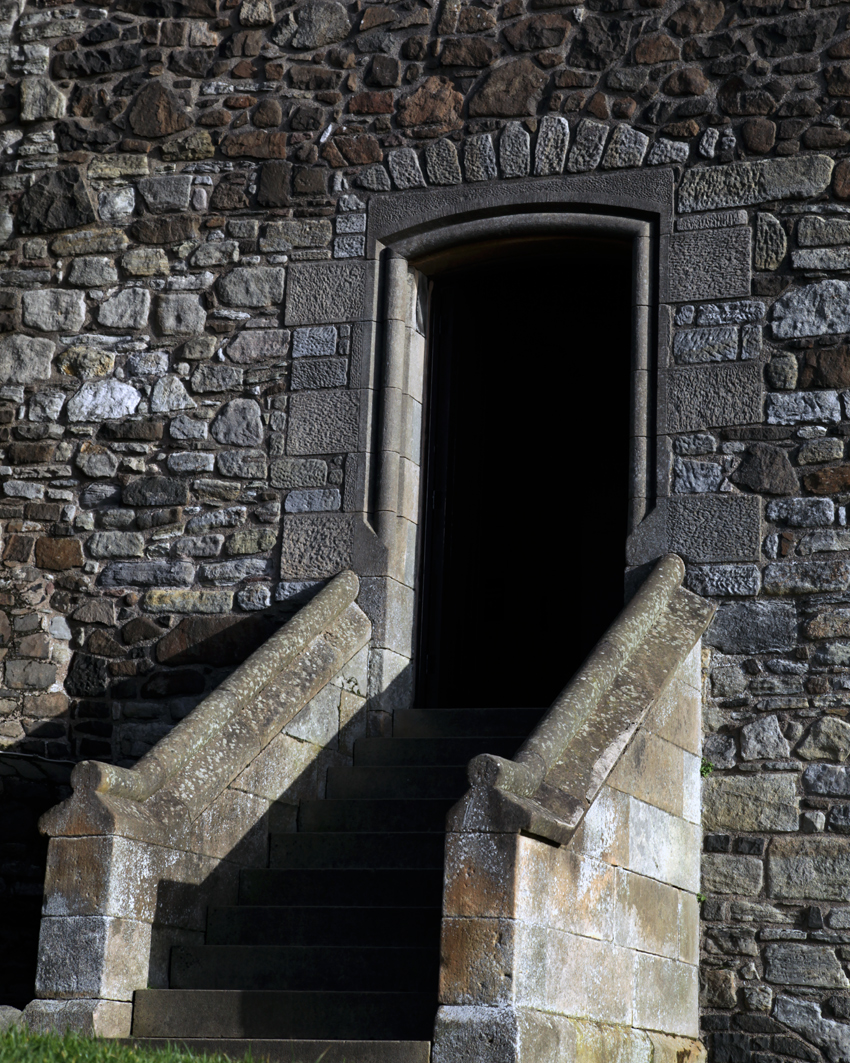 After a half hour of drop jawed revelry at the view, we entered Sterling Castle proper through this inconspicuous side door.
After a half hour of drop jawed revelry at the view, we entered Sterling Castle proper through this inconspicuous side door.
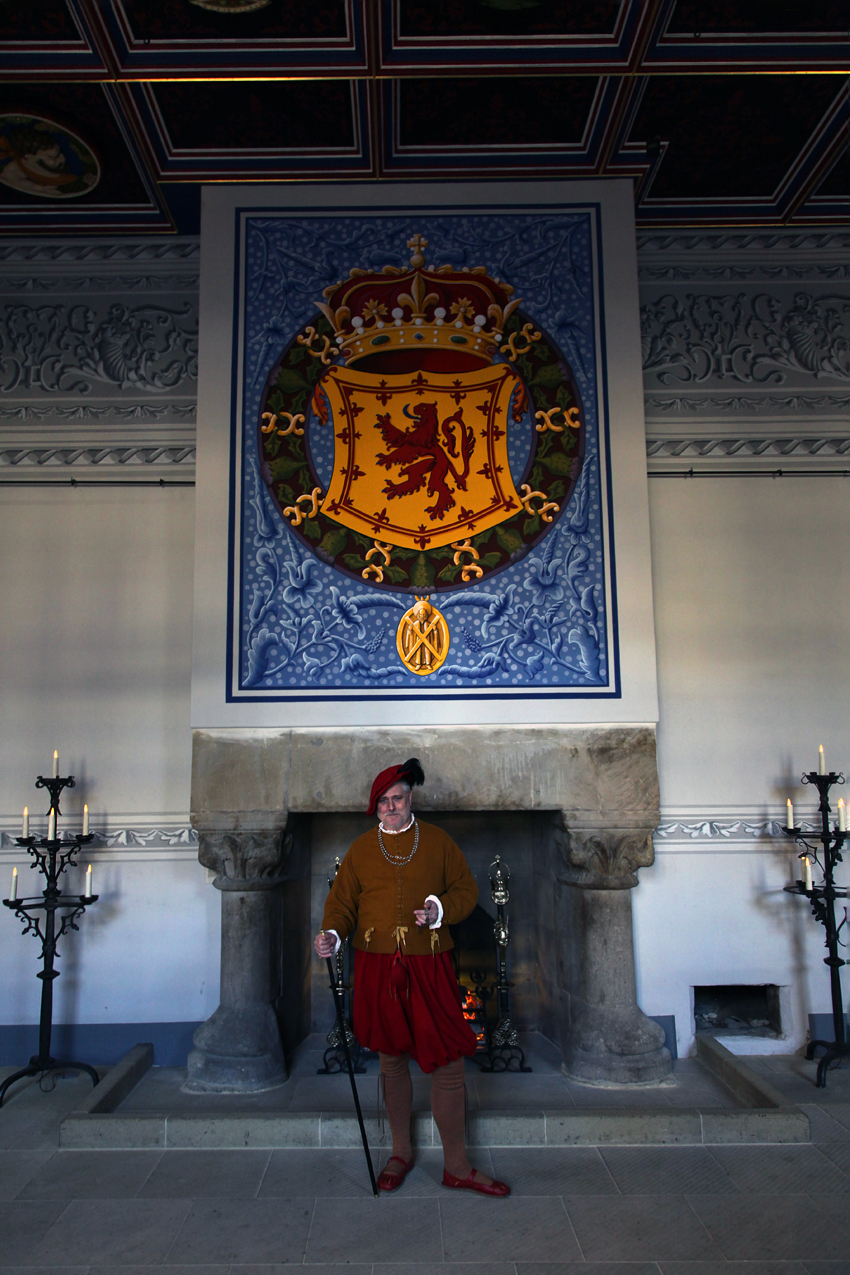 Our back door entrance led to a Great Room. The Scottish Historical Trust provided historians in period costumes . . . and period consciousness, like this guy who stayed in 16th century character no matter what I asked.
Our back door entrance led to a Great Room. The Scottish Historical Trust provided historians in period costumes . . . and period consciousness, like this guy who stayed in 16th century character no matter what I asked.
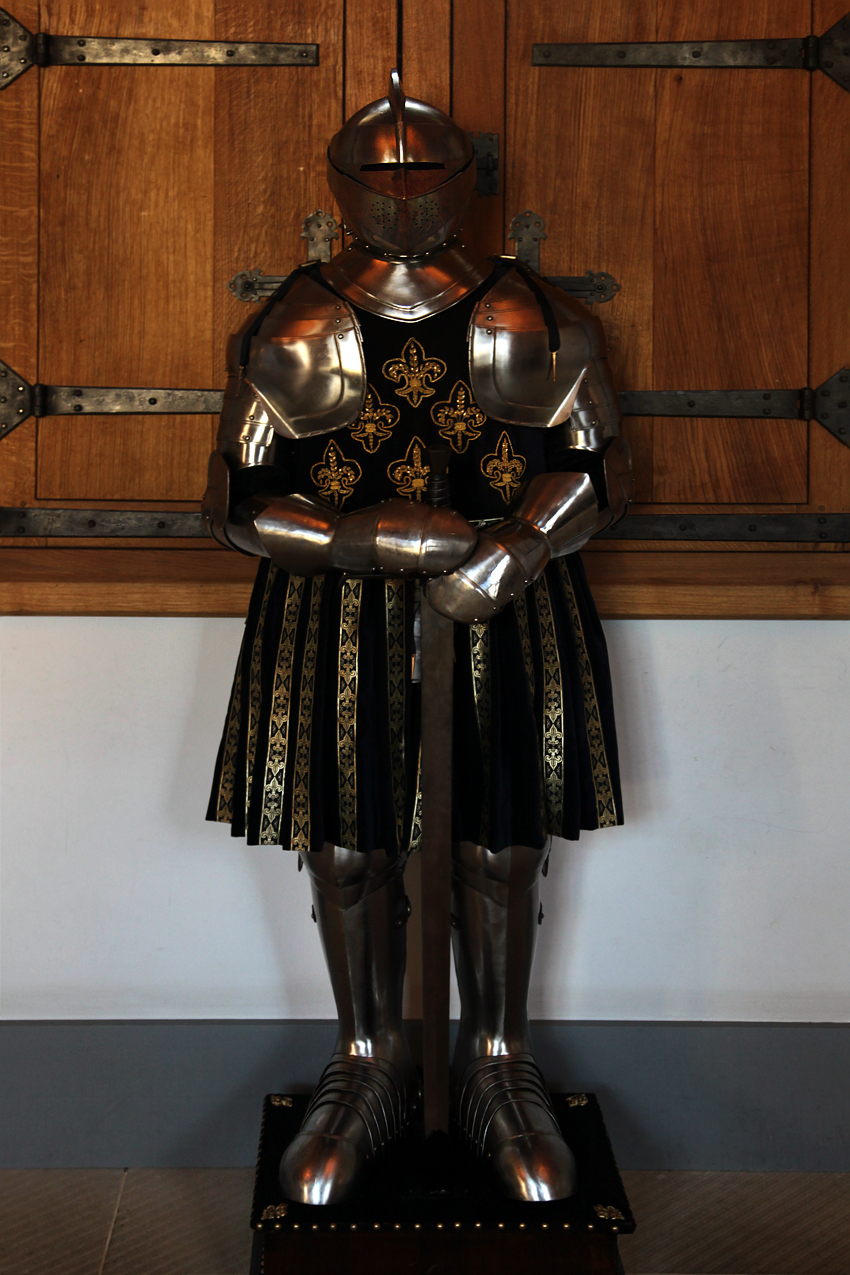 I have never really been this close to an authentic set of knight's armor.
I have never really been this close to an authentic set of knight's armor.
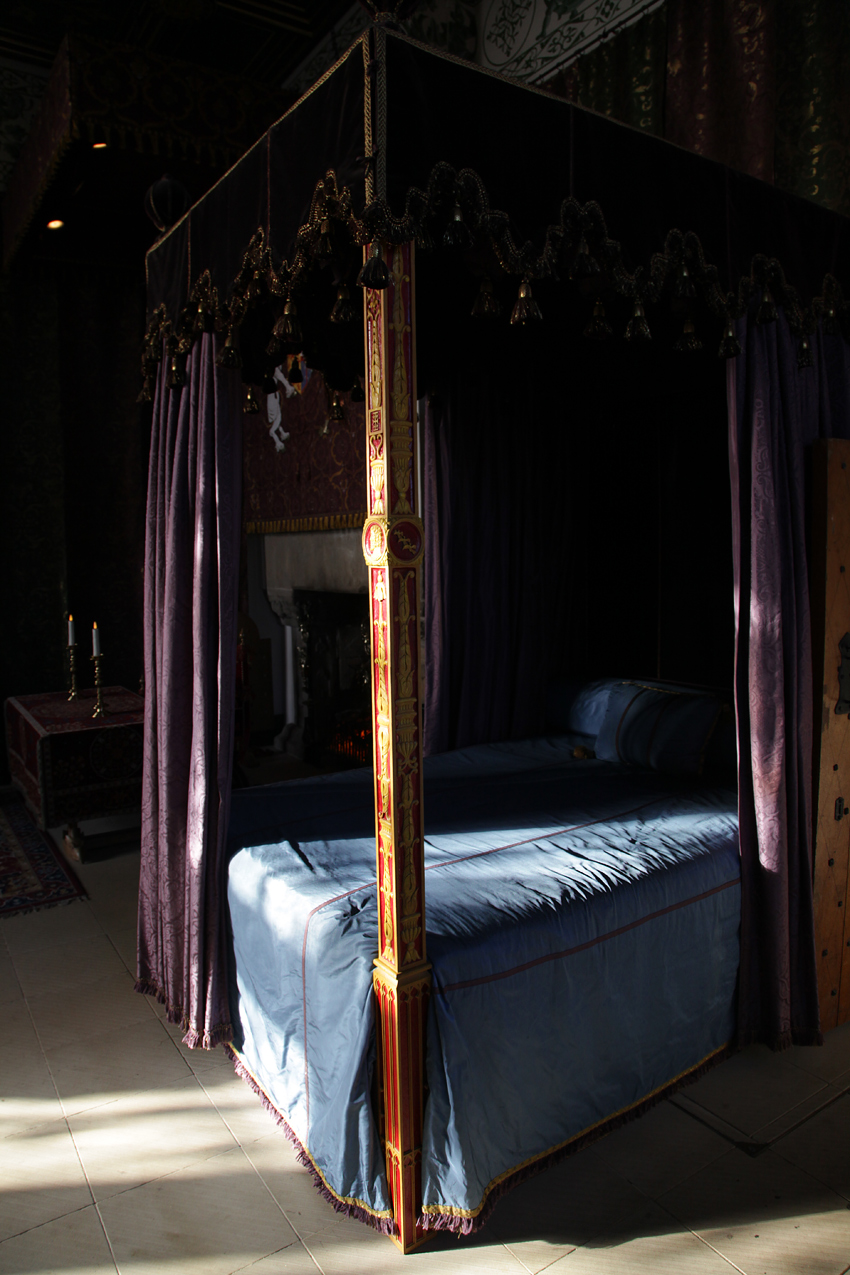 The Queen's bed in the . . . .
The Queen's bed in the . . . .
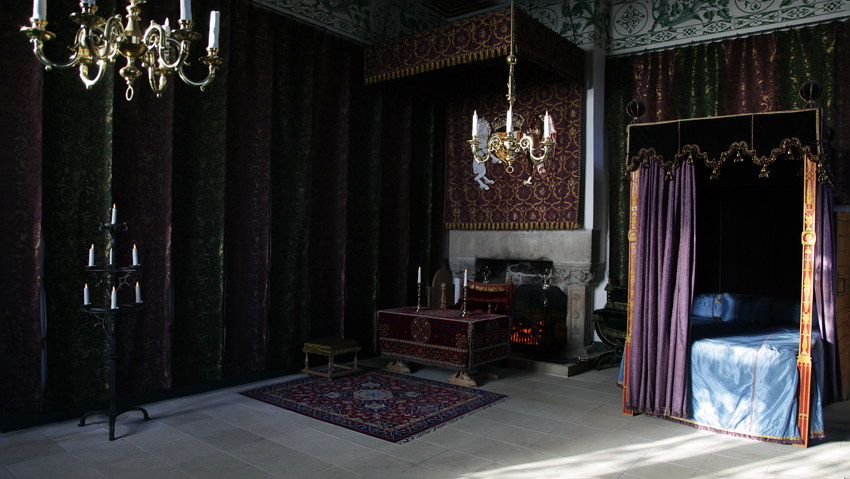 Queen's Chamber.
Queen's Chamber.
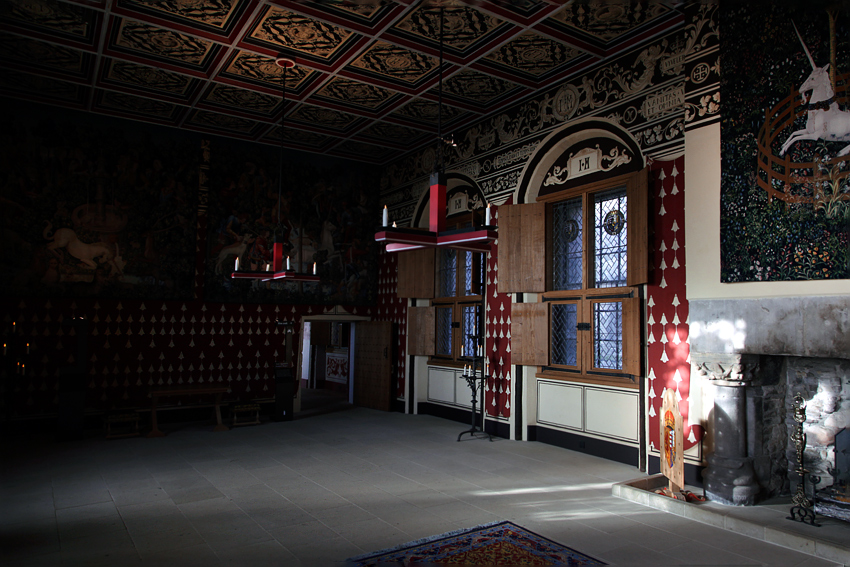 The Queen's Chamber was right off the Throne Hall.
The Queen's Chamber was right off the Throne Hall.
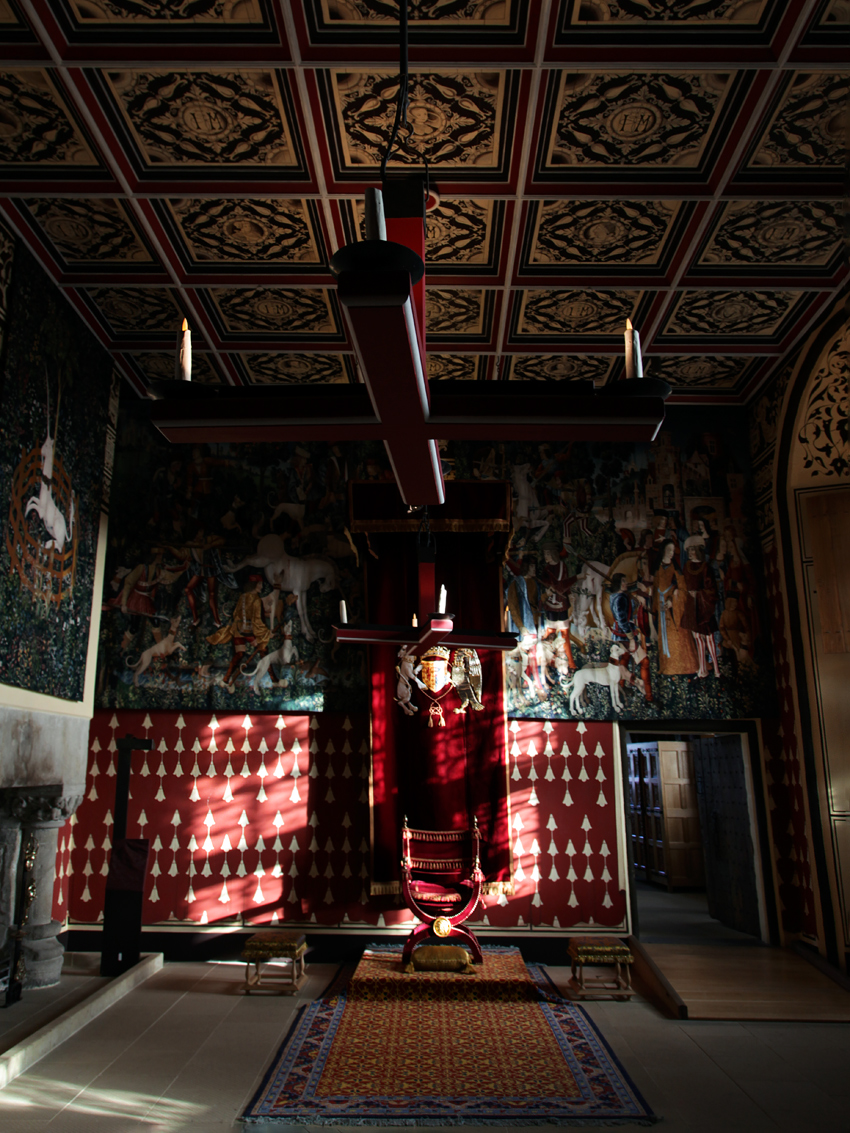 The Throne in the Throne Hall (where else?).
The Throne in the Throne Hall (where else?).
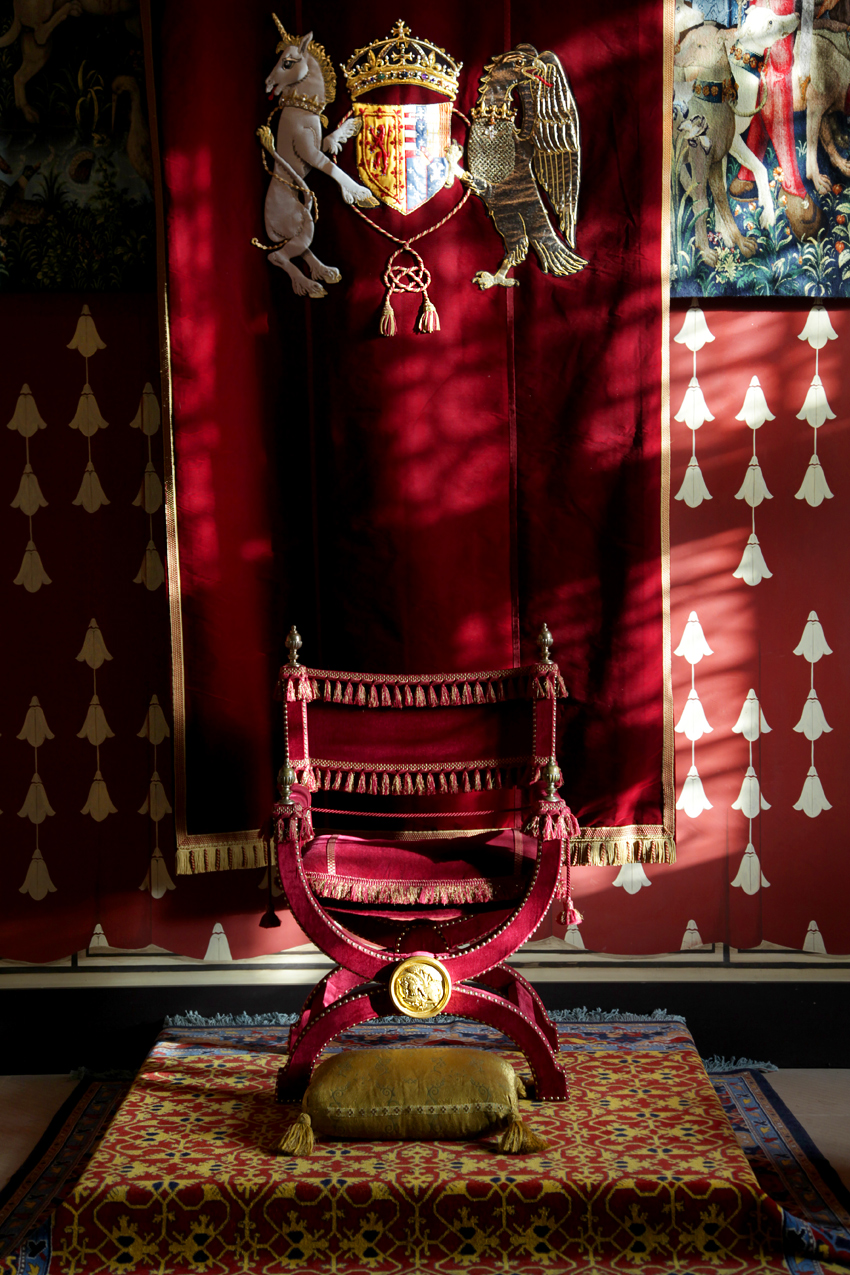 Sterling Castle Throne.
Sterling Castle Throne.
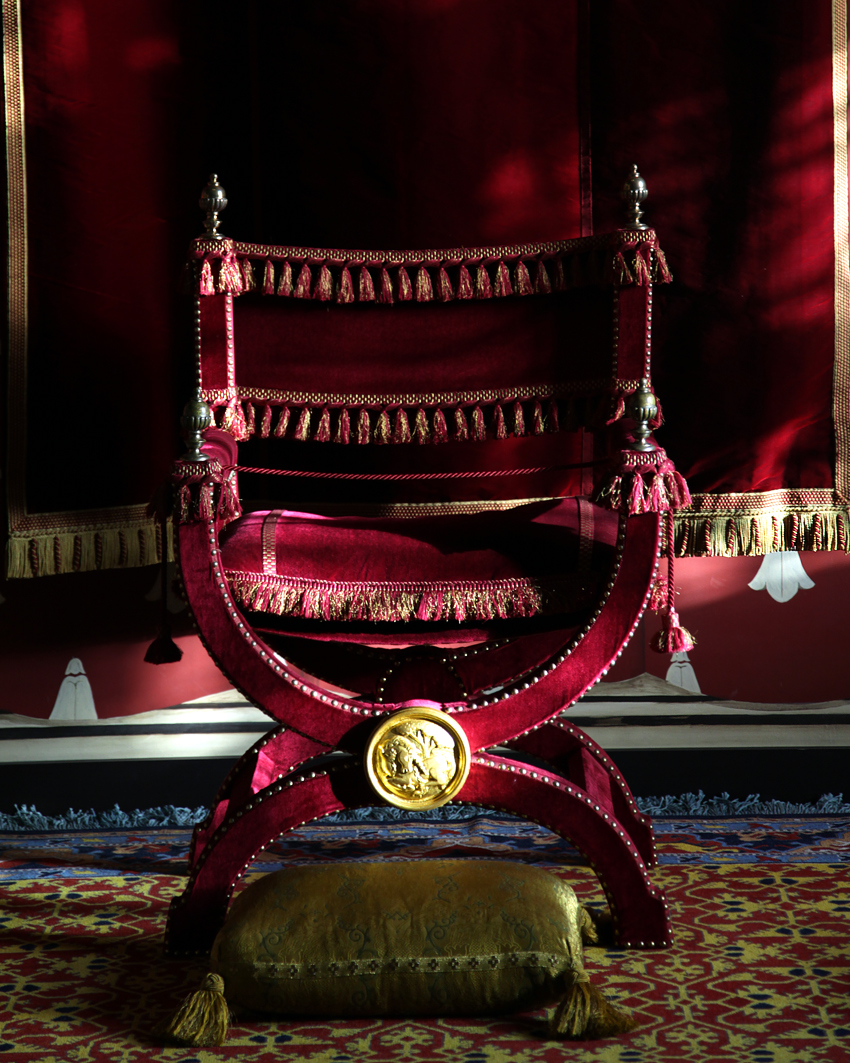 Sterling Castle Throne Chair (SCTC).
Sterling Castle Throne Chair (SCTC).
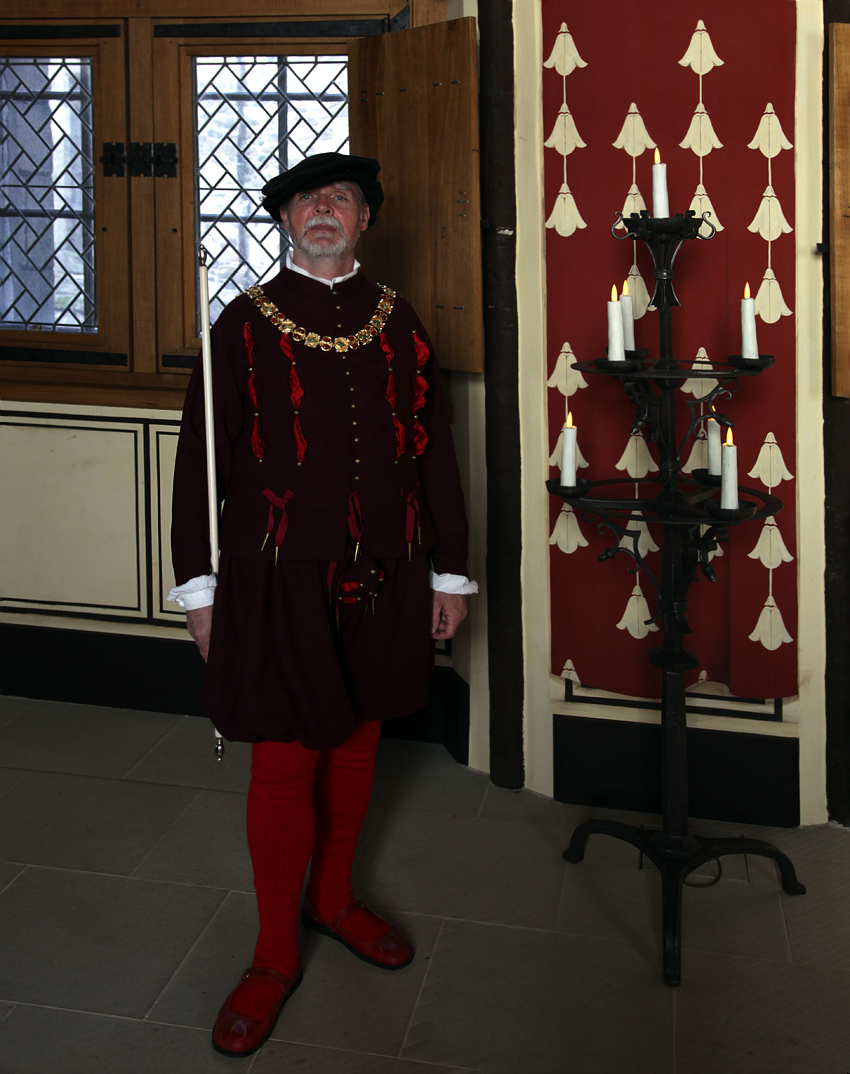 Another Sterling Castle Middle Ages sage actor.
Another Sterling Castle Middle Ages sage actor.
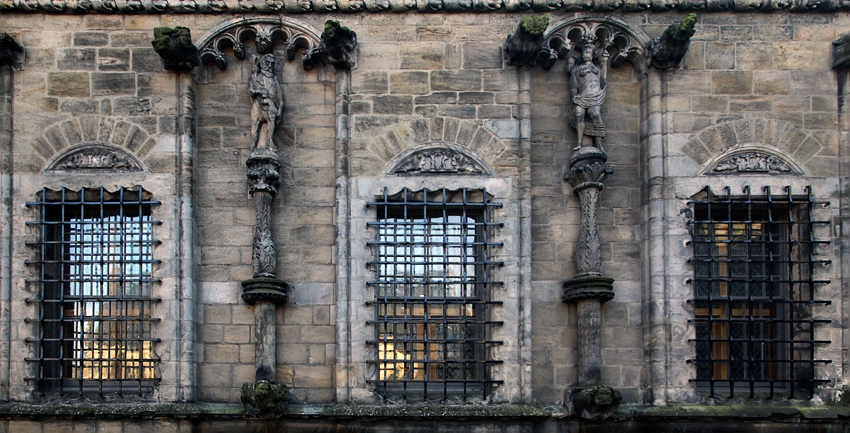 We left the main castle building for the courtyard . . . where we marveled at the architectural detail. Who designs this stuff?
We left the main castle building for the courtyard . . . where we marveled at the architectural detail. Who designs this stuff?
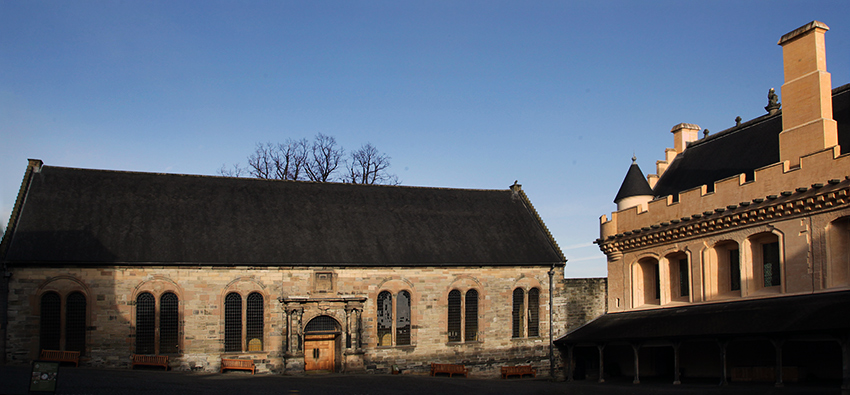 The castle chapel was across the courtyard.
The castle chapel was across the courtyard.
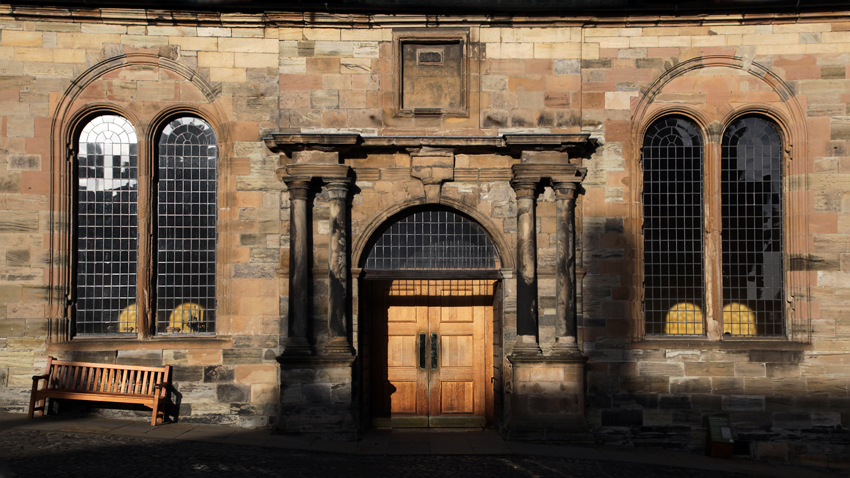 The chapel was a lovely structure.
The chapel was a lovely structure.
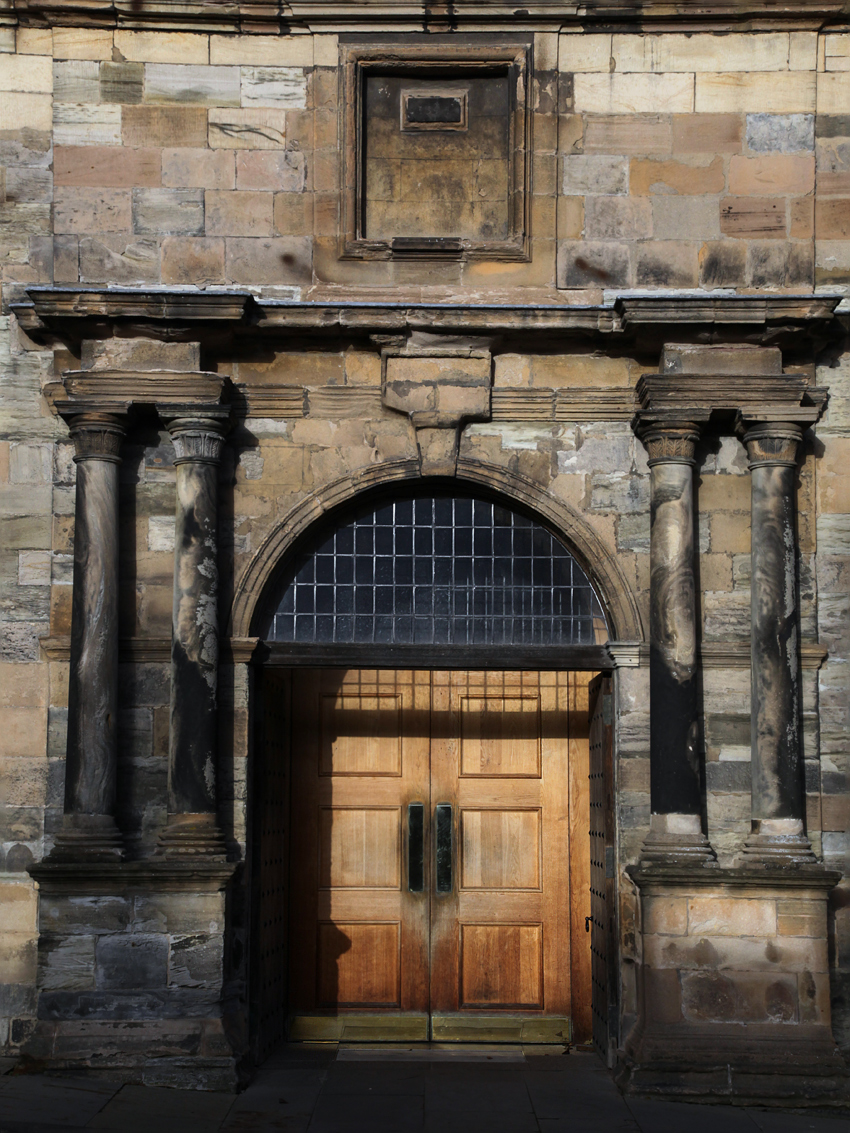 The castle chapel door was a thing of beauty. We opened this door and went inside.
The castle chapel door was a thing of beauty. We opened this door and went inside.
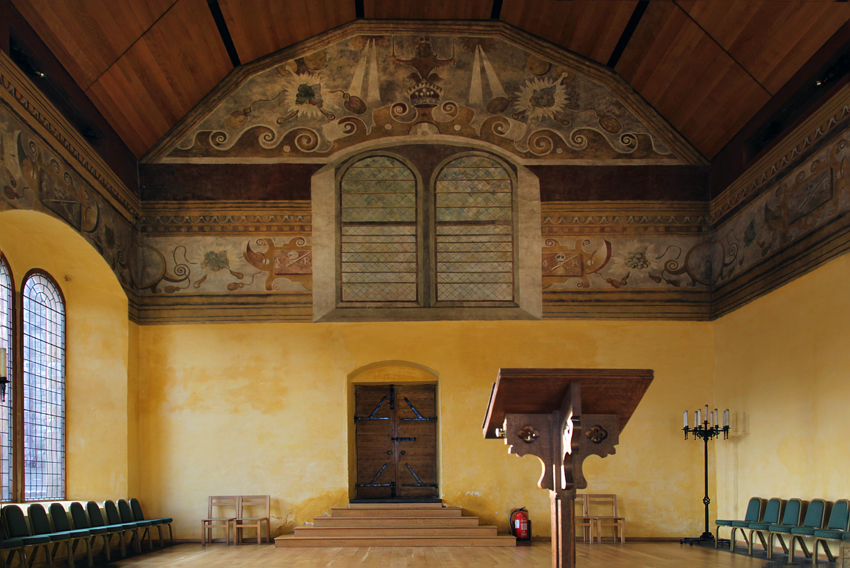 Tall windows on one side brightly lit the ox blood yellow walls.
Tall windows on one side brightly lit the ox blood yellow walls.
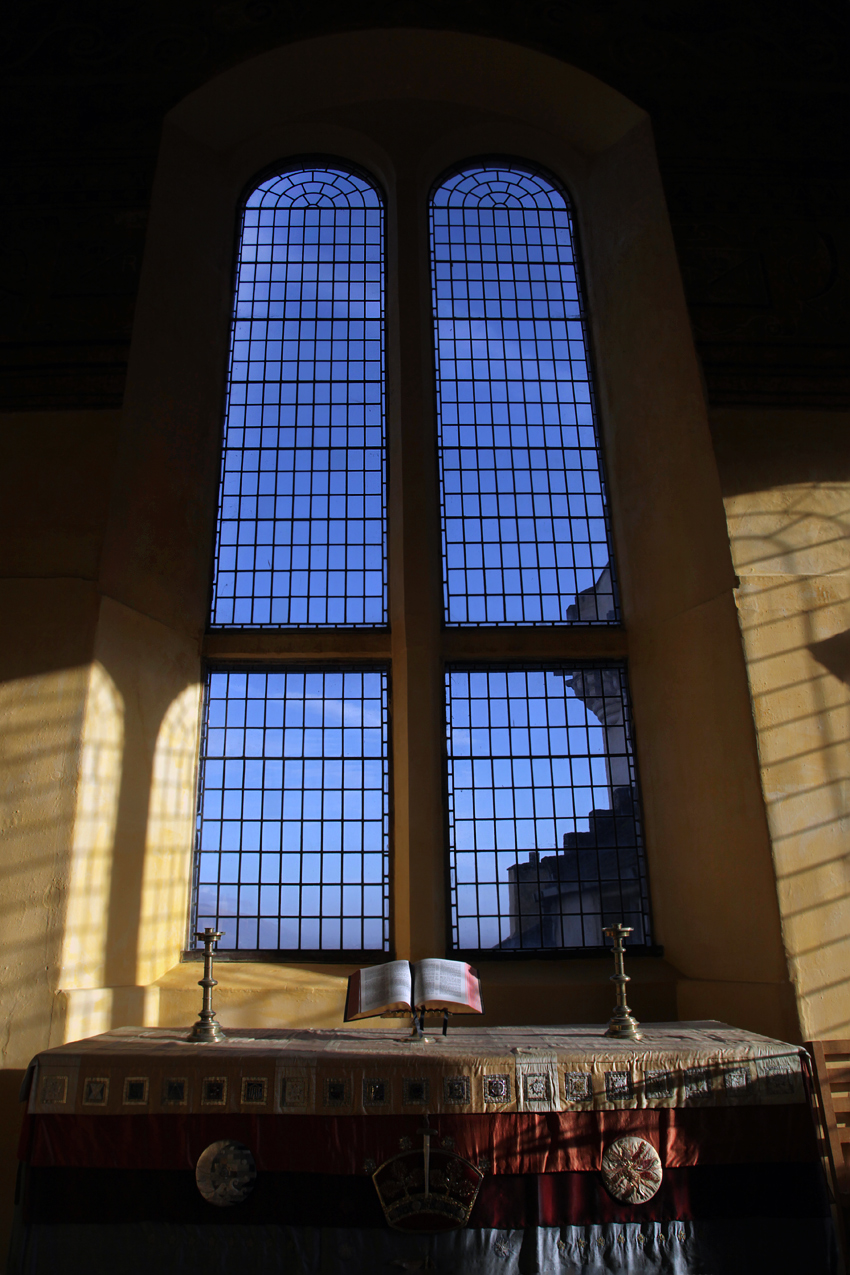 The chapel interior was austere.
The chapel interior was austere.
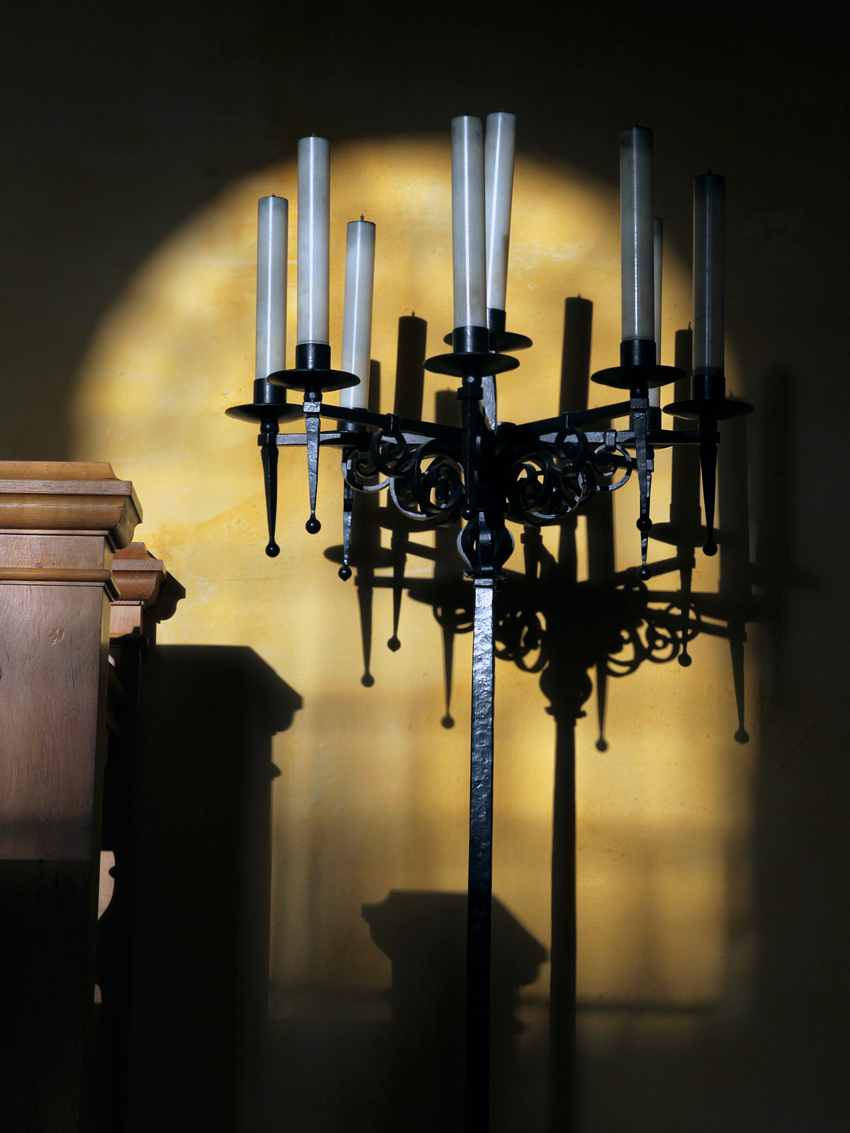 . . . beautiful color, light and shadow in the Sterling Castle Chapel interior.
. . . beautiful color, light and shadow in the Sterling Castle Chapel interior.
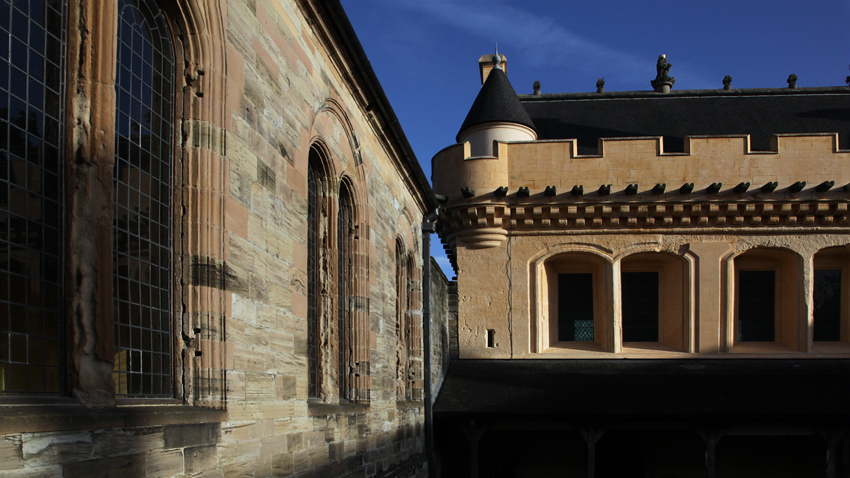 The chapel abuts another throne room. This particular plastered and painted structure was left as is to demonstrate how the entire castle was finished at one time. Later Kings and Queens favored the bare stone.
The chapel abuts another throne room. This particular plastered and painted structure was left as is to demonstrate how the entire castle was finished at one time. Later Kings and Queens favored the bare stone.
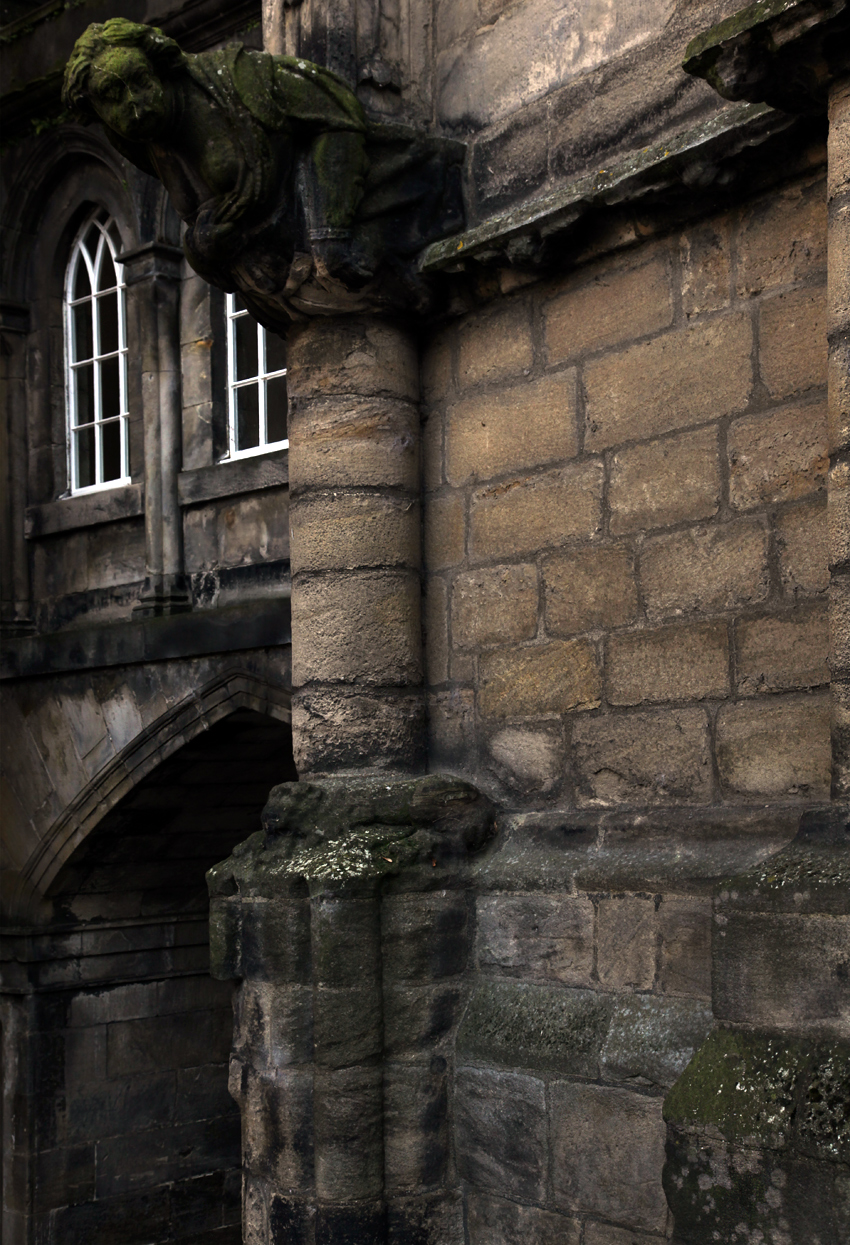 Gargoyles, angles, and saints festooned most of the roofing eves.
Gargoyles, angles, and saints festooned most of the roofing eves.
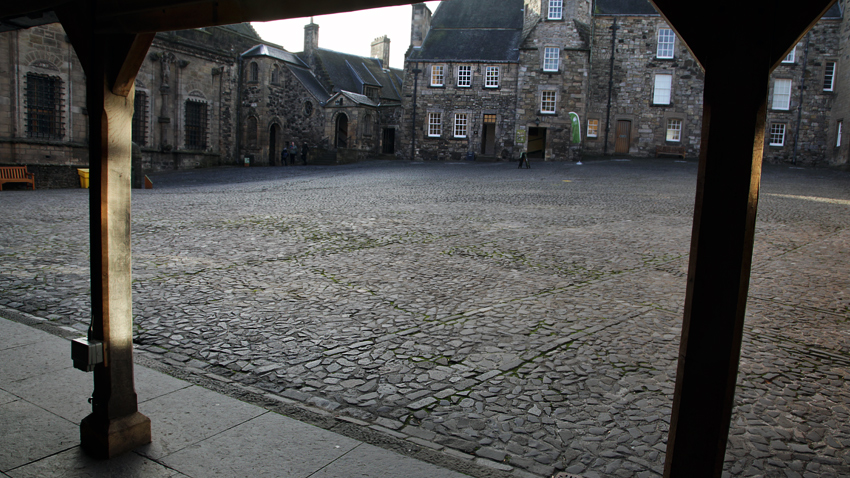 We spent a wonderful morning in Sterling Castle . . . and left through the cobbled central courtyard.
We spent a wonderful morning in Sterling Castle . . . and left through the cobbled central courtyard.
 Cannon emplacements still ring the castle (and were next to the gift shop!).
Cannon emplacements still ring the castle (and were next to the gift shop!).
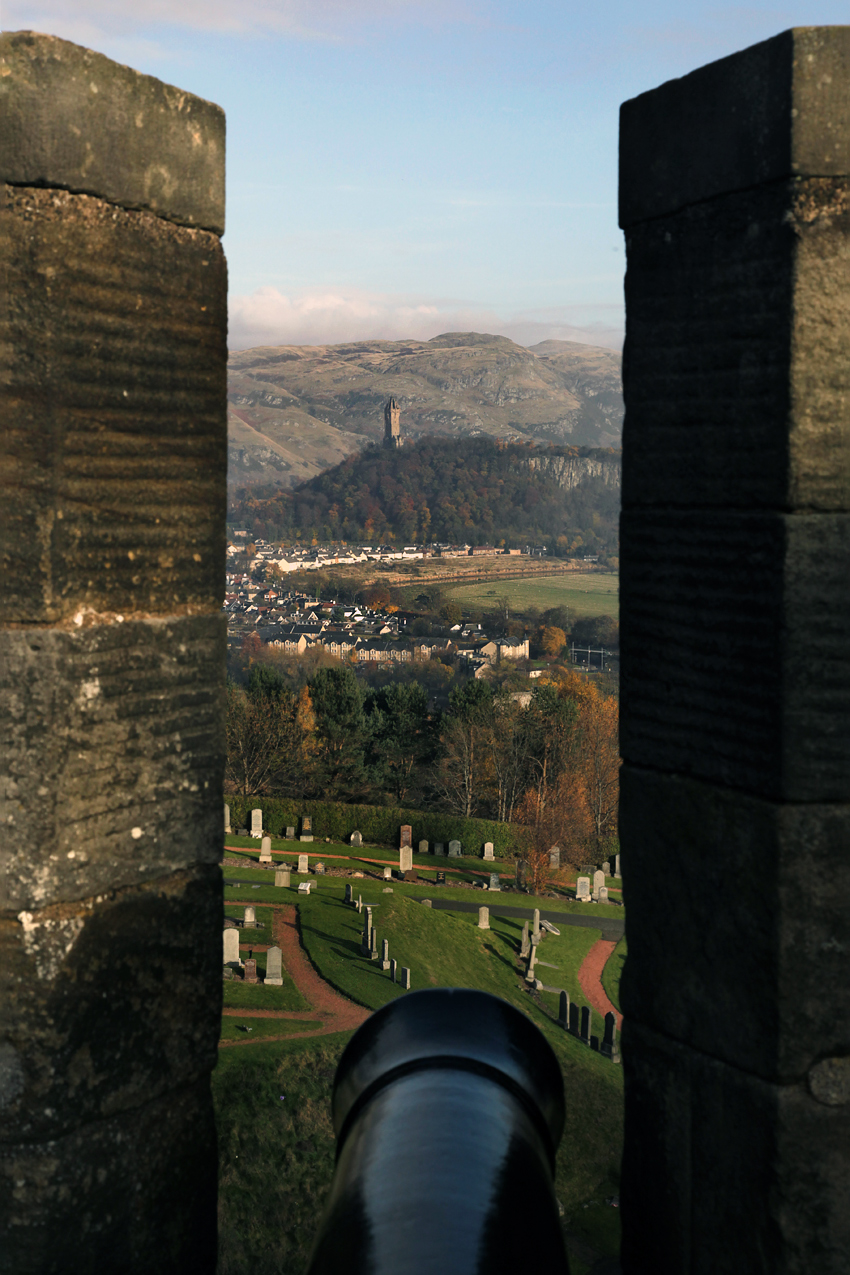 I would not want to be on the other end of one of these . . . .
I would not want to be on the other end of one of these . . . .
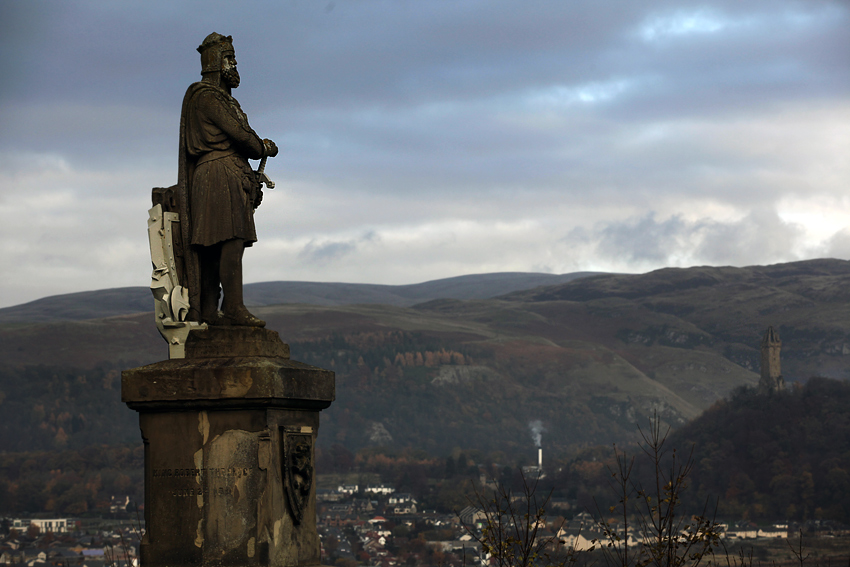 Robert The Bruce defeated the British in 1307 and is celebrated in Scotland.
Robert The Bruce defeated the British in 1307 and is celebrated in Scotland.
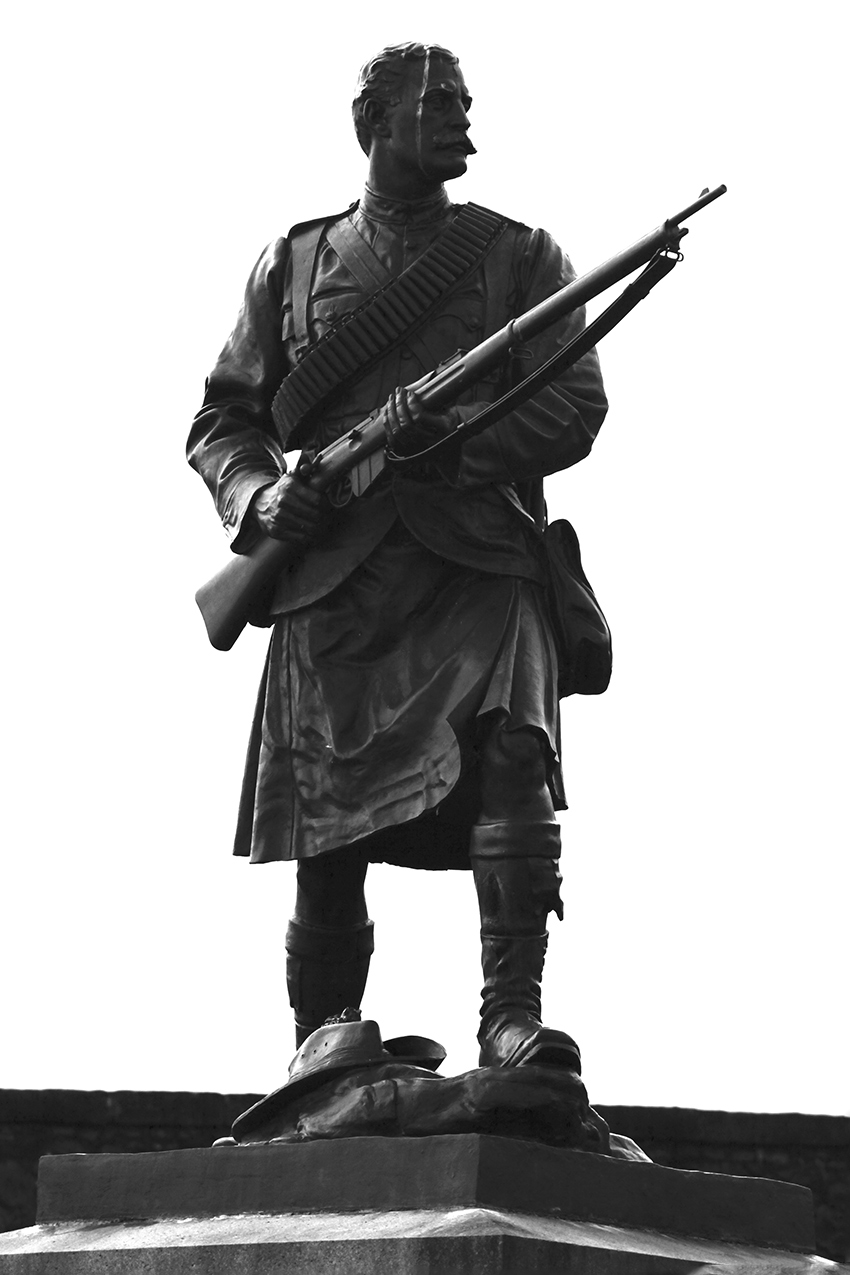 As is always the case in the UK, there are monuments to fallen soldiers of past wars.
As is always the case in the UK, there are monuments to fallen soldiers of past wars.
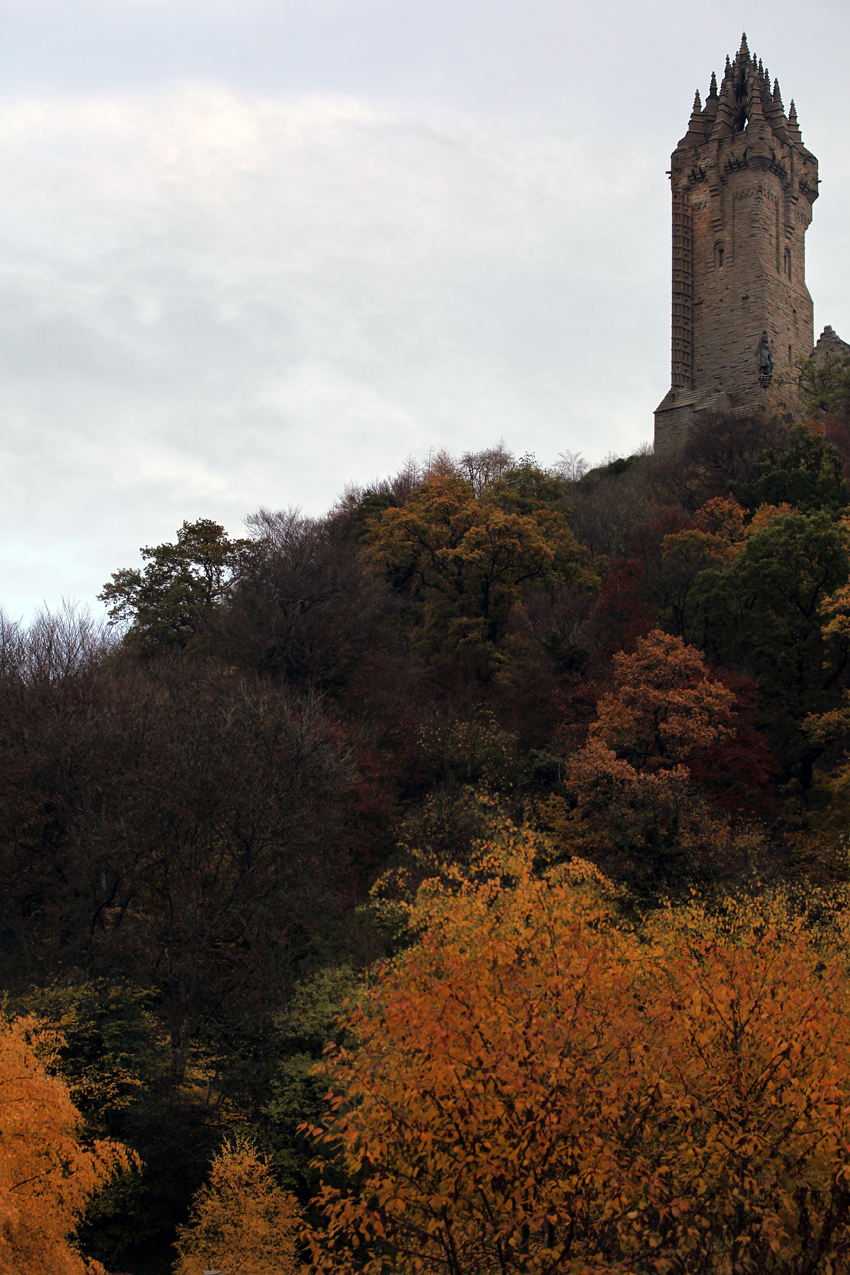 We passed by the Wallace Monument on our way out of Sterling . . . at Sterling Bridge.
We passed by the Wallace Monument on our way out of Sterling . . . at Sterling Bridge.
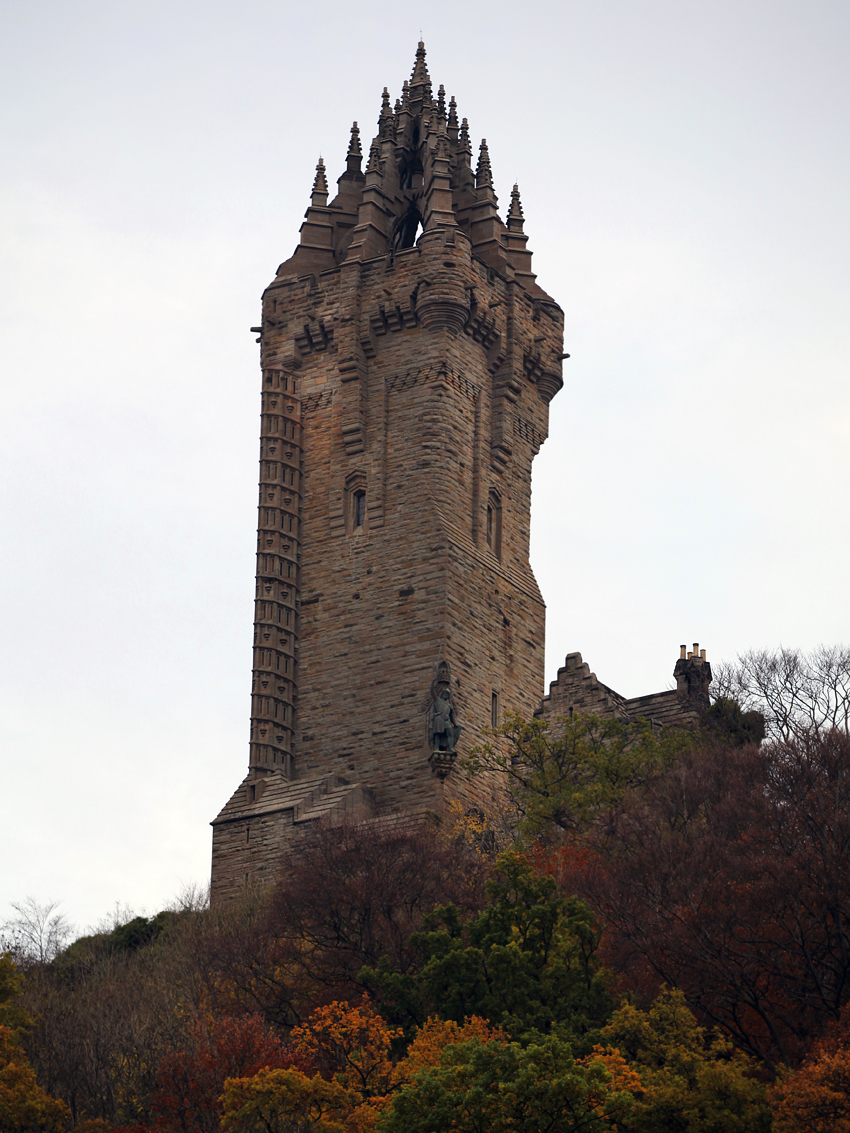 We did not climb up to the Wallace Monument (folly).
We did not climb up to the Wallace Monument (folly).
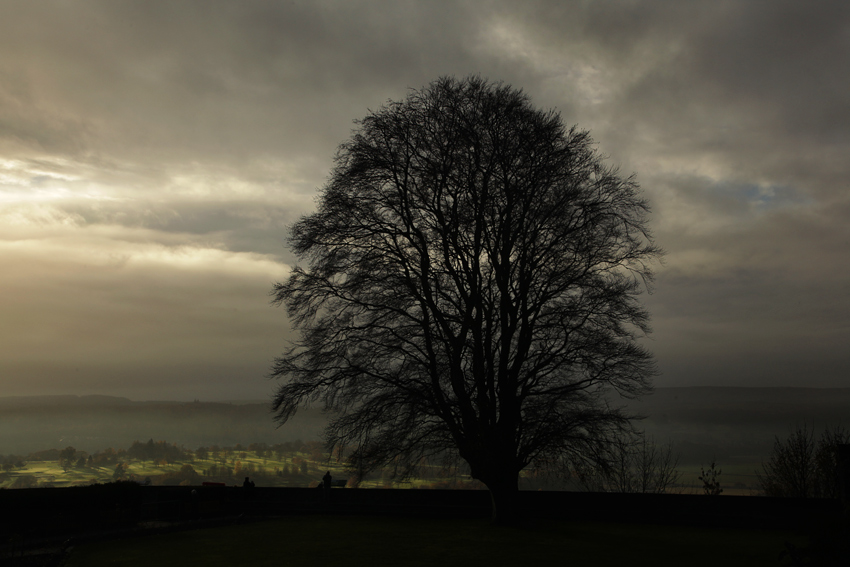 We were sorry to have to leave Sterling. The weather had been very cold (2c), but the sky was brilliant, and the clouds were constantly giving us a beautiful vision. Our drive back to Aberdeen took us on the small country lanes and was rather uneventful . . . until we realized we were almost out of fuel! We found a Shell station with only vapors in the tank!
We were sorry to have to leave Sterling. The weather had been very cold (2c), but the sky was brilliant, and the clouds were constantly giving us a beautiful vision. Our drive back to Aberdeen took us on the small country lanes and was rather uneventful . . . until we realized we were almost out of fuel! We found a Shell station with only vapors in the tank!
The Tattie Hols* Road Trip: Inverness, Loch Ness, and The Highlands
 Friday, October 18, 2013 at 12:32AM
Friday, October 18, 2013 at 12:32AM
 The Tattie Hols were upon us so we decided to take an extensive road trip North and East. The Tattie Hols date from a time when the schools would close so the children could help bring in the potato (tatties) crop. The Scots still take this holiday (hols) and so does my school. We drove north out of Aberdeen and stopped at the Baxters roadside attraction. It is a factory store of a company that makes shortbread and baked goods. They had an "authentic" old village there for tourists.
The Tattie Hols were upon us so we decided to take an extensive road trip North and East. The Tattie Hols date from a time when the schools would close so the children could help bring in the potato (tatties) crop. The Scots still take this holiday (hols) and so does my school. We drove north out of Aberdeen and stopped at the Baxters roadside attraction. It is a factory store of a company that makes shortbread and baked goods. They had an "authentic" old village there for tourists.
 Yes, there was a "Christmas all year" kind of shop there too . . . .
Yes, there was a "Christmas all year" kind of shop there too . . . .
ELGIN:
 This is more like it: the fabulous ruins of the Elgin Cathedral (c.1224). . . and perfect light.
This is more like it: the fabulous ruins of the Elgin Cathedral (c.1224). . . and perfect light.
 We had a tee time in Inverness, so I did not go in to explore . . . it's only an hour from Aberdeen. I'll be back.
We had a tee time in Inverness, so I did not go in to explore . . . it's only an hour from Aberdeen. I'll be back.
 Fantastic.
Fantastic.
INVERNESS:
 We finished our golf game and made it to our hotel just as a magnificent sunset burst across Inverness.
We finished our golf game and made it to our hotel just as a magnificent sunset burst across Inverness.
 We checked into the Winston Guest House in Inverness.
We checked into the Winston Guest House in Inverness.
 The Winston Guest House was a wonderful old building.
The Winston Guest House was a wonderful old building.
 After a world class pizza (who knew you could get such a great pizza in Inverness, Scotland at Zizzi's) we walked back to the guest room to see the Inverness Castle (Caisteal Inbhir Nis) fully lit. A castle has stood on this site since 1057, but the current red sandstone structure dates from 1836.
After a world class pizza (who knew you could get such a great pizza in Inverness, Scotland at Zizzi's) we walked back to the guest room to see the Inverness Castle (Caisteal Inbhir Nis) fully lit. A castle has stood on this site since 1057, but the current red sandstone structure dates from 1836.
 Last night's sunset was good, but this morning's sunrise over the Inverness Castle was GREAT!
Last night's sunset was good, but this morning's sunrise over the Inverness Castle was GREAT!
 Inverness Castle is beautiful at any time of the day.
Inverness Castle is beautiful at any time of the day.
 Inverness is a good town to just stroll around in . . . this church was just around the corner from our Guest House.
Inverness is a good town to just stroll around in . . . this church was just around the corner from our Guest House.
 Wonderful detail . . .
Wonderful detail . . .
 Old Inverness was just across the Ness Canal.
Old Inverness was just across the Ness Canal.
 A path ran along the canal at Inverness . . .
A path ran along the canal at Inverness . . .
 . . . where beautiful castle-like homes sprouted among the vegetation for miles.
. . . where beautiful castle-like homes sprouted among the vegetation for miles.
LOCH NESS:
 Our first view of Loch Ness was impressive.
Our first view of Loch Ness was impressive.
 Even if there were no "mystery" surrounding Loch Ness, it is a wonderful place to visit.
Even if there were no "mystery" surrounding Loch Ness, it is a wonderful place to visit.
 I watched the waves for awhile and saw the occasional "compounded wave" . . . larger than the others . . . and took this photo of it.
I watched the waves for awhile and saw the occasional "compounded wave" . . . larger than the others . . . and took this photo of it.
 I enlarged (cropped) the above wave image and, lo and behold, there's Nessie! I did not enhance this photo in any way other than cropping. Isn't that a large fin-like protrusion along side? Could those really be demon eyes on The Loch Ness Monster? No, not really.
I enlarged (cropped) the above wave image and, lo and behold, there's Nessie! I did not enhance this photo in any way other than cropping. Isn't that a large fin-like protrusion along side? Could those really be demon eyes on The Loch Ness Monster? No, not really.
 We were not the first people to visit Loch Ness.
We were not the first people to visit Loch Ness.
 If there ever could have been such a thing as the Loch Ness monster, this is what it could have looked like, if there could have ever been one, which there couldn't have been. Great photo op though.
If there ever could have been such a thing as the Loch Ness monster, this is what it could have looked like, if there could have ever been one, which there couldn't have been. Great photo op though.
 The ruins of Urquhart Castle stand on the shores of Loch Ness. There is archeological evidence that the first castle or fort was built on this spot in the 560s. The current castle ruins date from the 11th through the 13th centuries.
The ruins of Urquhart Castle stand on the shores of Loch Ness. There is archeological evidence that the first castle or fort was built on this spot in the 560s. The current castle ruins date from the 11th through the 13th centuries.
 Urquhart Castle is THE archetypical castle ruin.
Urquhart Castle is THE archetypical castle ruin.
 A trebuchet stands in front of Urquhart Castle, a reminder of the many sieges that took place here, and the cause of the present state of destruction.
A trebuchet stands in front of Urquhart Castle, a reminder of the many sieges that took place here, and the cause of the present state of destruction.
 Beautiful artistic workmanship on this medieval weapon of mass destruction.
Beautiful artistic workmanship on this medieval weapon of mass destruction.
 Urquhart Castle ramparts and the remains of the castle tower on the shore of Loch Ness.
Urquhart Castle ramparts and the remains of the castle tower on the shore of Loch Ness.
 Dr. Jeff Harper
Dr. Jeff Harper
 Well, I seem to be able to add a follow-up, but not to be able to add any more photos, or comments, to the posting above. What's wrong with SquareSpace, my web site host? I am not happy!
Well, I seem to be able to add a follow-up, but not to be able to add any more photos, or comments, to the posting above. What's wrong with SquareSpace, my web site host? I am not happy!
 The interior of the gate at Urquhart Castle.
The interior of the gate at Urquhart Castle.
 For all you Dungeons and Dragons fans . . . this is the real deal.
For all you Dungeons and Dragons fans . . . this is the real deal.
 An autumn view of Loch Ness from Urquhart Castle.
An autumn view of Loch Ness from Urquhart Castle.
 The National Trust Of Scotland often provides "residents" of castles dressed in period costumes . . like this old Highlander . . . although I think he may have been an original resident!
The National Trust Of Scotland often provides "residents" of castles dressed in period costumes . . like this old Highlander . . . although I think he may have been an original resident!
 Portrait of an old Scottish Highlander.
Portrait of an old Scottish Highlander.
 Even though it was a dark and dull day, there were good views from within the castle.
Even though it was a dark and dull day, there were good views from within the castle.
 We took the narrow passageway up the main tower for a look.
We took the narrow passageway up the main tower for a look.
 Not for the claustrophobic!
Not for the claustrophobic!
 The view from the stairwell across Loch Ness was a marvel of mystery.
The view from the stairwell across Loch Ness was a marvel of mystery.
 The view from the castle tower confirms why it was built where it was . . . literally, commanding views.
The view from the castle tower confirms why it was built where it was . . . literally, commanding views.
 Splendid castle ruins.
Splendid castle ruins.
 We stayed in the lovely village of Drumnadrochit along Loch Ness.
We stayed in the lovely village of Drumnadrochit along Loch Ness.
 These cottages were built in the 1820 on the Drumnadrochit village green.
These cottages were built in the 1820 on the Drumnadrochit village green.
 We stayed in the lovely Bridgend B&B, built originally as the Drumnadrochit sheriff's office and jail!
We stayed in the lovely Bridgend B&B, built originally as the Drumnadrochit sheriff's office and jail!
 The Bridgend B&B was nestled in a forest along a stream. This is the proprietor's cottage.
The Bridgend B&B was nestled in a forest along a stream. This is the proprietor's cottage.
 Our room looked out onto the Drumnadrochit village green.
Our room looked out onto the Drumnadrochit village green.
 Staying in a B&B is always a treat . . . and I do not just mean the quaint period decor . . . the breakfast was vast and tasty!
Staying in a B&B is always a treat . . . and I do not just mean the quaint period decor . . . the breakfast was vast and tasty!
 A warm summer and early fall allowed flowers to continue to bloom into October in Scotland this year.
A warm summer and early fall allowed flowers to continue to bloom into October in Scotland this year.
 Like most towns in Scotland (and the rest of the UK and Europe, for that matter), like Drumnadrochit, have a World War I monument commemorating the dead of the village. Several of the Urquhart family members are listed here. This list must have included a large percentage of the men from Drumnadrochit.
Like most towns in Scotland (and the rest of the UK and Europe, for that matter), like Drumnadrochit, have a World War I monument commemorating the dead of the village. Several of the Urquhart family members are listed here. This list must have included a large percentage of the men from Drumnadrochit.
 Flowers for the war dead.
Flowers for the war dead.
 You could satisfy your stuffed Nessie purchasing desire in the quaintest of places.
You could satisfy your stuffed Nessie purchasing desire in the quaintest of places.
 The competition for Nessie curios sales must have been intense: Nessie emporiums battled it out with amazing displays, like this otherworldly display with the surrealistic ceiling and floor distorting mirror configuration. Innovative, yet kitschy.
The competition for Nessie curios sales must have been intense: Nessie emporiums battled it out with amazing displays, like this otherworldly display with the surrealistic ceiling and floor distorting mirror configuration. Innovative, yet kitschy.
 The otherworldly display with the surrealistic ceiling and floor distorting mirror configuration allowed me to indulge my own passion for oddball self-portraits (oddball in the sense of photographic composition only).
The otherworldly display with the surrealistic ceiling and floor distorting mirror configuration allowed me to indulge my own passion for oddball self-portraits (oddball in the sense of photographic composition only).
 We barely got out of Drumnadrochit when we saw a sign pointing up a small road to a "pottery." We turned in. It was a very small road that climbed up the ridge above Loch Ness. Along the way there was much to see. Like much of this road trip, the day was dark and overcast, but not raining. It is a new kind of photography for me after so many years in the tropics. I like these dark scenes.
We barely got out of Drumnadrochit when we saw a sign pointing up a small road to a "pottery." We turned in. It was a very small road that climbed up the ridge above Loch Ness. Along the way there was much to see. Like much of this road trip, the day was dark and overcast, but not raining. It is a new kind of photography for me after so many years in the tropics. I like these dark scenes.
 After several miles on a road not much wider than our car, we came to this idyllic potters cottage in the forest.
After several miles on a road not much wider than our car, we came to this idyllic potters cottage in the forest.
 We walked in . . . the sign said to do so.
We walked in . . . the sign said to do so.
 We needed a ceramic pot for our wooden spoons at home . . . .
We needed a ceramic pot for our wooden spoons at home . . . .
 . . . and it looked like this was going to be the place to find the perfect pot (and support some artists at the same time - always a good thing), er, ceramic pot.
. . . and it looked like this was going to be the place to find the perfect pot (and support some artists at the same time - always a good thing), er, ceramic pot.
 As it turned out, the pottery was also a cafe! What luck. We enjoyed some baked goods and cups of tea while admiring our new purchase (on table above)
As it turned out, the pottery was also a cafe! What luck. We enjoyed some baked goods and cups of tea while admiring our new purchase (on table above)
 An innovative idea: build your greenware shelves around your wood stove to quicken the initial drying.
An innovative idea: build your greenware shelves around your wood stove to quicken the initial drying.
 We could have lingered there all day chatting with the several potters who came in and introduced themselves. It was good to hang out with old hippies still living the hippie credo, but we saw a sign pointing to a nature walk, and wanted to get going. I loved this hanging sign:
We could have lingered there all day chatting with the several potters who came in and introduced themselves. It was good to hang out with old hippies still living the hippie credo, but we saw a sign pointing to a nature walk, and wanted to get going. I loved this hanging sign:
The anatomy of Death
Is When and How
The Lasting Kiss of Life
Is
Here and Now.
 Our walk in the damp hills above Loch Ness was magnificent.
Our walk in the damp hills above Loch Ness was magnificent.
 The trail we happened to take was very beautiful.
The trail we happened to take was very beautiful.
 The trail was very clearly marked.
The trail was very clearly marked.
 Once in awhile the trail would take us into a meadow with views of the Autumnal tree line.
Once in awhile the trail would take us into a meadow with views of the Autumnal tree line.
 At other times the trail took us into deep, magic places in the enchanted forest.
At other times the trail took us into deep, magic places in the enchanted forest.
 It all seemed like a setting for a fairy tale.
It all seemed like a setting for a fairy tale.
 After our forest walk we drove back over a ridge overlooking a valley leading from Drumnadrochit.
After our forest walk we drove back over a ridge overlooking a valley leading from Drumnadrochit.
 If you have read much of my blogs you know that I have a fascination with corrugation and dilapidation, especially in one place. Rounding a corner I hit the brakes when I was this decaying stone farm building.
If you have read much of my blogs you know that I have a fascination with corrugation and dilapidation, especially in one place. Rounding a corner I hit the brakes when I was this decaying stone farm building.
 The surfaces, patterns, colors, and textures were too interesting to pass by.
The surfaces, patterns, colors, and textures were too interesting to pass by.
 The crude artistry of the stone work was incredible.
The crude artistry of the stone work was incredible.
 The weather was constantly changing: throwing patches of bright sunlight on the colorful hillsides above Loch Ness
The weather was constantly changing: throwing patches of bright sunlight on the colorful hillsides above Loch Ness
 We drove towards the southern end of Loch Ness to the town of Fort Augustus.
We drove towards the southern end of Loch Ness to the town of Fort Augustus.
 The southern end of Loch Ness at Fort Augustus joins the Caledonian Canal which connects it to Loch Oich.
The southern end of Loch Ness at Fort Augustus joins the Caledonian Canal which connects it to Loch Oich.
 As rain clouds approached, we took one last look at Loch Ness.
As rain clouds approached, we took one last look at Loch Ness.
 Loch Ness is one of the world's most famous places. Many people come here to indulge their hopes and fantasies of seeing the very last dinosaur. These intrepid souls braved the rough waters of Loch ness in their inflatable Loch Ness Explorer. We called out to them, "Any sightings?" "No," came the sullen reply.
Loch Ness is one of the world's most famous places. Many people come here to indulge their hopes and fantasies of seeing the very last dinosaur. These intrepid souls braved the rough waters of Loch ness in their inflatable Loch Ness Explorer. We called out to them, "Any sightings?" "No," came the sullen reply.
 The old Fort Augustus Abbey, formerly a Benedictine monastery, faces the Caledonian Canal. It is in the process of being turned into a hotel.
The old Fort Augustus Abbey, formerly a Benedictine monastery, faces the Caledonian Canal. It is in the process of being turned into a hotel.
 Swans on a blustery Loch Ness at the Caledonian Canal.
Swans on a blustery Loch Ness at the Caledonian Canal.
 The Caledonian Canal locks at Fort Augusts were very picturesque.
The Caledonian Canal locks at Fort Augusts were very picturesque.
 Calidonian Locks leading to Loch Ness in the background. Very quaint, old world scene. Lovely.
Calidonian Locks leading to Loch Ness in the background. Very quaint, old world scene. Lovely.
 Before heading back up Loch Ness to our new B&B, we stopped for a bite and a brew in a traditional whiskey bar. Yummy.
Before heading back up Loch Ness to our new B&B, we stopped for a bite and a brew in a traditional whiskey bar. Yummy.
 Queen Victoria's Jubilee must have been a HUGE occasion throughout Great Britain because you still see these monuments all over the country commemorating the occasion. Talk about immortality!
Queen Victoria's Jubilee must have been a HUGE occasion throughout Great Britain because you still see these monuments all over the country commemorating the occasion. Talk about immortality!
 Fort Augustus had it's own WWI memorial to those who lost their lives. Talk about mortality!
Fort Augustus had it's own WWI memorial to those who lost their lives. Talk about mortality!
 I was going to take a photo of a cute old chapel until I realized it had been converted into a discount woolen shop. We went in and I purchased an attractive red felt vest. The little chapel/shop was soon crawling with mainland Chinese tourists! I love to see Chinese tourists . . . it's good for them to get out and 'join the world.'
I was going to take a photo of a cute old chapel until I realized it had been converted into a discount woolen shop. We went in and I purchased an attractive red felt vest. The little chapel/shop was soon crawling with mainland Chinese tourists! I love to see Chinese tourists . . . it's good for them to get out and 'join the world.'
 We drove back to Invermoriston, a little berg along side Loch Ness known for its waterfalls, and followed the signs . . . .and discovered this amazing stand of trees. No, I did not enhance the color of this photograph!
We drove back to Invermoriston, a little berg along side Loch Ness known for its waterfalls, and followed the signs . . . .and discovered this amazing stand of trees. No, I did not enhance the color of this photograph!
 Yoo and I were nearly in tears at the beauty of this place.
Yoo and I were nearly in tears at the beauty of this place.
 We arrived at last at the falls viewing point to discover an old stone resting gazebo.
We arrived at last at the falls viewing point to discover an old stone resting gazebo.
 The view up the chutes was spectacular.
The view up the chutes was spectacular.
 A photographer's dream shot!
A photographer's dream shot!
 The wonderful Craik Na Day B&B in Invermoriston.
The wonderful Craik Na Day B&B in Invermoriston.
 Craik Na Day B&B was very quaint and the welcome and service was excellent. Sisters Manda and Lindsey were warm and hospitable . . . and a lot of fun. Deconstructing a TV food cook-off show one evening was one of the highlights of the trip! The sisters recommended we spend the next day on a "beautiful drive" up the highway A887 from their front door all the way to the Isle of Skye. Sure, why not.
Craik Na Day B&B was very quaint and the welcome and service was excellent. Sisters Manda and Lindsey were warm and hospitable . . . and a lot of fun. Deconstructing a TV food cook-off show one evening was one of the highlights of the trip! The sisters recommended we spend the next day on a "beautiful drive" up the highway A887 from their front door all the way to the Isle of Skye. Sure, why not.
 We woke very early in the morning for our drive up the glen. There strands and wisps of mist licking the hills across the glen from our B&B. Fantastic!
We woke very early in the morning for our drive up the glen. There strands and wisps of mist licking the hills across the glen from our B&B. Fantastic!
 It was an extraordinary beautiful morning. The mist had just lifted on the glens and everything was covered with a thick covering of dew.
It was an extraordinary beautiful morning. The mist had just lifted on the glens and everything was covered with a thick covering of dew.
 A scene from an 18th century painting.
A scene from an 18th century painting.
 From the moving car these looked interesting . . . but when I pulled over . . . .
From the moving car these looked interesting . . . but when I pulled over . . . .
 . . . a photographer's dream . . .
. . . a photographer's dream . . .
 . . . back lit dew bejeweled spider webs. Astonishing!
. . . back lit dew bejeweled spider webs. Astonishing!
 This coldcrisp morning was turning out to be an epically beautiful road adventure.
This coldcrisp morning was turning out to be an epically beautiful road adventure.
 Autumn reflections!
Autumn reflections!
 The road eventually left the verdant Glen Moriston and headed into the high mountain passes toward Loch Cluanie.
The road eventually left the verdant Glen Moriston and headed into the high mountain passes toward Loch Cluanie.
 At Loch Cluanie we were at the highest point along the pass.
At Loch Cluanie we were at the highest point along the pass.
 At the far end of Loch Claunie we would begin the descent through Glen Shiel and down to the sea level Bridge of Skye.
At the far end of Loch Claunie we would begin the descent through Glen Shiel and down to the sea level Bridge of Skye.
 At the far end of Loch Claunie we began a decent through rugged Glen Shiel.
At the far end of Loch Claunie we began a decent through rugged Glen Shiel.
 It was a gorgeous morning and we stopped often to gaze upon the natural beauty in stunned delight.
It was a gorgeous morning and we stopped often to gaze upon the natural beauty in stunned delight.
 Extraordinary beauty.
Extraordinary beauty.
 Glen Shiel is a famous place in Scottish history; many famous battles took place here.
Glen Shiel is a famous place in Scottish history; many famous battles took place here.
 There was much to see along the glen, not least of which were the old walls webbing the steep slopes.
There was much to see along the glen, not least of which were the old walls webbing the steep slopes.
 The views constantly changed as we headed down towards Loch Duich at sea level.
The views constantly changed as we headed down towards Loch Duich at sea level.
 We eventually reached Loch Duich to be greeted by calm waters and amazing reflections.
We eventually reached Loch Duich to be greeted by calm waters and amazing reflections.
 Loch Duich is actually a sound connecting to the sea.
Loch Duich is actually a sound connecting to the sea.
 Rounding a bend in the road we caught our first glimpse of what we had come to see: Eilean Donan Castle!
Rounding a bend in the road we caught our first glimpse of what we had come to see: Eilean Donan Castle!
 WOW!
WOW!
 Eilean Donan Castle is one of the most famous castles in the world, and an icon for Scotland itself. Founded in the 6th ot 7th century, the castle was continuously rebuilt until it nearly vanished in 1912 when a major fund raising and rebuilding effort began. Because the castle played such a major role in Scottish history, it was not allowed to vanish.
Eilean Donan Castle is one of the most famous castles in the world, and an icon for Scotland itself. Founded in the 6th ot 7th century, the castle was continuously rebuilt until it nearly vanished in 1912 when a major fund raising and rebuilding effort began. Because the castle played such a major role in Scottish history, it was not allowed to vanish.
 If Castle Eilean Donan looks familiar it is because it has been seen in so many Hollywood movies (Bonnie Prince Charles, Master of Ballantrae, Black Angle, The Highlander, Entrapment, The World is Not Enough, and Elizabeth: The Golden Age).
If Castle Eilean Donan looks familiar it is because it has been seen in so many Hollywood movies (Bonnie Prince Charles, Master of Ballantrae, Black Angle, The Highlander, Entrapment, The World is Not Enough, and Elizabeth: The Golden Age).
 No, not a Hollowood set . . . a real Scottish castle.
No, not a Hollowood set . . . a real Scottish castle.
 This was the only building on Eilean Donan that had a roof in 1912.
This was the only building on Eilean Donan that had a roof in 1912.
 We bought our ticket and went for the tour.
We bought our ticket and went for the tour.
 There were so many great photos to be taken here, however, I wished I had been there at high tide to take a photo of the castle reflected in the sea. Maybe on our return trip from The Isle of Skye.
There were so many great photos to be taken here, however, I wished I had been there at high tide to take a photo of the castle reflected in the sea. Maybe on our return trip from The Isle of Skye.
 The views from the castle were almost as good as the views of the castle!
The views from the castle were almost as good as the views of the castle!
 The views in all directions were exceptional.
The views in all directions were exceptional.
 Although the castle seems greatly impregnable, in fact it was easily bombarded by ships in the sound.
Although the castle seems greatly impregnable, in fact it was easily bombarded by ships in the sound.
 There are courtyards inside the castle. The National Trust of Scotland supplies guides and security personnel dressed in period costume. A nice touch.
There are courtyards inside the castle. The National Trust of Scotland supplies guides and security personnel dressed in period costume. A nice touch.
 Imagine you only had a sword and a bow and arrow . . . .
Imagine you only had a sword and a bow and arrow . . . .
 Photography is strictly forbidden inside Eilean Donan Castle.
Photography is strictly forbidden inside Eilean Donan Castle.
 If I had been allowed to take photographs inside the castle, this is what I would have chosen to shoot.
If I had been allowed to take photographs inside the castle, this is what I would have chosen to shoot.
 Another photo worth taking would have been the castle kitchen. Wonderful view.
Another photo worth taking would have been the castle kitchen. Wonderful view.
 It was time to move on further down the road. There was still the Isle of Skye to see.
It was time to move on further down the road. There was still the Isle of Skye to see.
 The tide came in while were inside . . . . a special place . . . I know will be back.
The tide came in while were inside . . . . a special place . . . I know will be back.
 30 minutes later, and after a fine lunch, we arrived at the magnificent Sky Bridge, considered one of the most beautiful in the world.
30 minutes later, and after a fine lunch, we arrived at the magnificent Sky Bridge, considered one of the most beautiful in the world.
 We drove across the Skye Bridge and stopped at the small town of Kyleakin which had a fine little harbour and view of the Dunakin Castle (also known as Castle Maol) ruins.
We drove across the Skye Bridge and stopped at the small town of Kyleakin which had a fine little harbour and view of the Dunakin Castle (also known as Castle Maol) ruins.
 The Castle Maol dates from the 15th century.
The Castle Maol dates from the 15th century.
 Ah, Scotland! What a beautiful country.
Ah, Scotland! What a beautiful country.
 We turned around and drove back over the Sky Bridge for our B&B. We vowed to return to the Isle of Sky for a complete exploration one day soon.
We turned around and drove back over the Sky Bridge for our B&B. We vowed to return to the Isle of Sky for a complete exploration one day soon.
 We were equally amazed at the mountain glens on our return drive. The afternoon light was fantastic.
We were equally amazed at the mountain glens on our return drive. The afternoon light was fantastic.
 We had been very lucky with the weather. Only days later this pass was covered by the first snow storm of the year.
We had been very lucky with the weather. Only days later this pass was covered by the first snow storm of the year.
 Early the next morning at our B&B I noticed fingers of cloud creep up the glen through the forest.
Early the next morning at our B&B I noticed fingers of cloud creep up the glen through the forest.
 What a visual treat.
What a visual treat.
 A cold Autumn morning in the mountain glens.
A cold Autumn morning in the mountain glens.
 We headed on to our next destination, The Scottish Highlands, via Fort William. The city fathers of Fort William thought it would be a good idea to convert the old high street into a walking street. The plan did not seem to work: the by-pass seems to have left the town behind. About 1/3 of the shops were closed and for lease, and another 1/3 were selling tourist trinkets. To bad . . . it could have been a very quaint village.
We headed on to our next destination, The Scottish Highlands, via Fort William. The city fathers of Fort William thought it would be a good idea to convert the old high street into a walking street. The plan did not seem to work: the by-pass seems to have left the town behind. About 1/3 of the shops were closed and for lease, and another 1/3 were selling tourist trinkets. To bad . . . it could have been a very quaint village.
 A cemetery right down town, a couple of Fort William teens stopped for an ice cream. Make yourself right at home!
A cemetery right down town, a couple of Fort William teens stopped for an ice cream. Make yourself right at home!
 We took the A86 up through the highlands toward Aviemore.
We took the A86 up through the highlands toward Aviemore.
 This road is also known as the Distillery Road.
This road is also known as the Distillery Road.
 Although I am not a whiskey drinker, we stopped at several distilleries along the way.
Although I am not a whiskey drinker, we stopped at several distilleries along the way.
 At the Aberlour Distillery (1826) we bought some gifts.
At the Aberlour Distillery (1826) we bought some gifts.
 There were a number of roadside attractions, like this bakery administration building (!).
There were a number of roadside attractions, like this bakery administration building (!).
 The main attraction was the scrumptious countryside.
The main attraction was the scrumptious countryside.
 All along the way, in every tiny village, there were tea rooms (and Chinese take-away!). We would often stop for tea and scones. Yummie.
All along the way, in every tiny village, there were tea rooms (and Chinese take-away!). We would often stop for tea and scones. Yummie.
 At nearly every stone bridge we would stop and get out to look at the streams.
At nearly every stone bridge we would stop and get out to look at the streams.
 We stayed at the Ravenscraig Guest House in the outdoor sports Mecca of Aviemore. The place was full of rock climbers, mountain bikers, and canoeists.
We stayed at the Ravenscraig Guest House in the outdoor sports Mecca of Aviemore. The place was full of rock climbers, mountain bikers, and canoeists.
 Aviemore had a fine old train station.
Aviemore had a fine old train station.
 We had several fine meals at the old Cairngorm Hotel in Aviemore.
We had several fine meals at the old Cairngorm Hotel in Aviemore.
 We drove home the next day through the gorgeous Aberdeenshire hills and farms . . . we were only two hours from home. The weather had cooperated throughout the seven day road trip . . . . until our last day while driving home. It was a perfect week in a remarkably beautiful place.
We drove home the next day through the gorgeous Aberdeenshire hills and farms . . . we were only two hours from home. The weather had cooperated throughout the seven day road trip . . . . until our last day while driving home. It was a perfect week in a remarkably beautiful place.
Drum Castle and Gardens, Aberdeenshire
 Sunday, October 6, 2013 at 6:28PM
Sunday, October 6, 2013 at 6:28PM  While cleaning the house and putting away some of our shipment, I happened to look out he window and was amazed at what a beautiful day it was. There may not be too many of these left before winder arrives, so my darling wife and I dressed up for a trip to the countryside, and Drum Castle. First we stopped at the amazing Mains of Drum Garden Centre and had a cup of coffee and a brilliant scone.
While cleaning the house and putting away some of our shipment, I happened to look out he window and was amazed at what a beautiful day it was. There may not be too many of these left before winder arrives, so my darling wife and I dressed up for a trip to the countryside, and Drum Castle. First we stopped at the amazing Mains of Drum Garden Centre and had a cup of coffee and a brilliant scone.
 A 'Fairytale Sky'.
A 'Fairytale Sky'.
 Drum Castle, founded in 1325. I couldn't tell which was the front and which was the back of this castle. It didn't matter.
Drum Castle, founded in 1325. I couldn't tell which was the front and which was the back of this castle. It didn't matter.
 Drum Castle.
Drum Castle.
 Castle architecture is a lost art.
Castle architecture is a lost art.
 Architectural detail on the new section of Drum Castle.
Architectural detail on the new section of Drum Castle.
 These castle features are fascinating to me. Although the light was not great . . . it kept peeking out from behind a cloud, then disappearing again . . . until . . .
These castle features are fascinating to me. Although the light was not great . . . it kept peeking out from behind a cloud, then disappearing again . . . until . . .
 I was at last rewarded with some bright, clear light from behind those scrumptious billowy clouds.
I was at last rewarded with some bright, clear light from behind those scrumptious billowy clouds.
 A lovely day for a Scottish castle wedding . . . and the perfect setting.
A lovely day for a Scottish castle wedding . . . and the perfect setting.
 The woods around Drum Castle are not 'natural,'per se; they have been planted over the centuries with interesting and rare trees and shrubberies. I have no idea what these maroon-colored treed were . . . .
The woods around Drum Castle are not 'natural,'per se; they have been planted over the centuries with interesting and rare trees and shrubberies. I have no idea what these maroon-colored treed were . . . .
 There was a stand of these; each seemed to glow maroon from the inside.
There was a stand of these; each seemed to glow maroon from the inside.
 We did not go inside the castle . . . we had come for a walk in the woods. We followed the signs leading us through the forest to the gardens.
We did not go inside the castle . . . we had come for a walk in the woods. We followed the signs leading us through the forest to the gardens.
 The gardens were old and well maintained.
The gardens were old and well maintained.
 The gardens were an enchanted place.
The gardens were an enchanted place.
 One can imagine all sorts of forest creatures loitering around this pond when the humans are nowhere near.
One can imagine all sorts of forest creatures loitering around this pond when the humans are nowhere near.
 Parts of the castle walls enclosed other gardens.
Parts of the castle walls enclosed other gardens.
 A castle gate enticed us inside the formal gardens.
A castle gate enticed us inside the formal gardens.
 The inital impression was of a formality in design. But the wildness of Nature filled every circumscribed space.
The inital impression was of a formality in design. But the wildness of Nature filled every circumscribed space.
 The clinging vines covering the castle walls were beginning to turn the colors of Autumn.
The clinging vines covering the castle walls were beginning to turn the colors of Autumn.
 I think I am going to have to keep coming back here every week for the next month to see the entirety of the Autumnal transformation.
I think I am going to have to keep coming back here every week for the next month to see the entirety of the Autumnal transformation.
 I was in a continuous swoon! Having spent the last seventeen Autumns in the tropics, I realized, all at once, the immense beauty of Fall colors in the far northern latitudes.
I was in a continuous swoon! Having spent the last seventeen Autumns in the tropics, I realized, all at once, the immense beauty of Fall colors in the far northern latitudes.
 On the verge of Autumn.
On the verge of Autumn.
 All around the castle garden walls, a riot of color.
All around the castle garden walls, a riot of color.
 There was so much, nay, too much to see in this magnificent garden.
There was so much, nay, too much to see in this magnificent garden.
 There were amazing beddings of furry white ground cover.
There were amazing beddings of furry white ground cover.
 Nature uses her devices over and over again; fur.
Nature uses her devices over and over again; fur.
 Bright, optimistic white burst.
Bright, optimistic white burst.
 The gardener here had quite an eye for impactful arrangements, I'd say.
The gardener here had quite an eye for impactful arrangements, I'd say.
 End of summer fruiting.
End of summer fruiting.
 Abundant rose hips.
Abundant rose hips.
 A Drum Castle rose.
A Drum Castle rose.
 Beautiful flowers and bedding, all surrounded by high walls festooned in Autumn colors. A beautiful day.
Beautiful flowers and bedding, all surrounded by high walls festooned in Autumn colors. A beautiful day.
 Pure Beauty.
Pure Beauty.
 There are many garden spaced separated by high castle walls . . . and garden gates.
There are many garden spaced separated by high castle walls . . . and garden gates.
 Many of the flowers were beginning to decay in the remnants of the summer light.
Many of the flowers were beginning to decay in the remnants of the summer light.
 The last autumnal floral array . . .
The last autumnal floral array . . .
 A red splash on the castle garden wall.
A red splash on the castle garden wall.
 The light alternated between bright direct sunlight and the muted, flat light of a cloudy day. It was a real challenge.
The light alternated between bright direct sunlight and the muted, flat light of a cloudy day. It was a real challenge.
 You can't miss with white flowers on a dark background.
You can't miss with white flowers on a dark background.
 There is a beauty in roses, and their hips.
There is a beauty in roses, and their hips.
 These are 200 year old gardens . . . planted and replanted over and over again.
These are 200 year old gardens . . . planted and replanted over and over again.
 I love these thick planted beds: the colors and the complexity.
I love these thick planted beds: the colors and the complexity.
 We are only weeks from regular frost here in Abedeenshire . . the impermanence is palpable.
We are only weeks from regular frost here in Abedeenshire . . the impermanence is palpable.
 These dense planted extended the length of one wall . . and the sun shone one them all at once . . . I was breathless once again.
These dense planted extended the length of one wall . . and the sun shone one them all at once . . . I was breathless once again.
 Incredible.
Incredible.
 My compliments to the garden architect.
My compliments to the garden architect.
 We crossed paths with the wedding party and their photographer several times in the gardens.
We crossed paths with the wedding party and their photographer several times in the gardens.
 Every turn revealed new vistas.
Every turn revealed new vistas.
 There were waves of flowering plants . . . .
There were waves of flowering plants . . . .
 . . . . . hedges of flowing plants . . . .
. . . . . hedges of flowing plants . . . .
 . . . . all the last flowers of summer.
. . . . all the last flowers of summer.
 It was getting late . . . .
It was getting late . . . .
 . . . . the sun was getting below the tree line . . . .
. . . . the sun was getting below the tree line . . . .
 . . . . I had to reluctantly admit it was time to leave.
. . . . I had to reluctantly admit it was time to leave.
 We walked out the path we entered on . . . but . . .
We walked out the path we entered on . . . but . . .
 . . . but now the path seemed mysterious in the gathering gloom. We walked faster towards the castle.
. . . but now the path seemed mysterious in the gathering gloom. We walked faster towards the castle.
 The shadows in the forest grew longer, deeper. I would not want to be out here in the dark.
The shadows in the forest grew longer, deeper. I would not want to be out here in the dark.
 We were glad to see the castle again.
We were glad to see the castle again.
 Last light at Drum Castle.
Last light at Drum Castle.
 I watched the sky all day, appreciating the giant structures there.
I watched the sky all day, appreciating the giant structures there.
3-Day Week-end: Macduff and Banff, Scotland
 Monday, September 23, 2013 at 2:50PM
Monday, September 23, 2013 at 2:50PM  We had a 3-day week-end and new cars . . . what to do? ROAD TRIP! We headed up north for a week-end of trail walking, golf, and photography. At Macduff, we discovered the Duff House forest grounds. Very beautiful.
We had a 3-day week-end and new cars . . . what to do? ROAD TRIP! We headed up north for a week-end of trail walking, golf, and photography. At Macduff, we discovered the Duff House forest grounds. Very beautiful.
 It was a grey day with cool air . . . perfect for a walk in the woodlands.
It was a grey day with cool air . . . perfect for a walk in the woodlands.
 A week earlier there had been several nights of near-zero temperatures. A few leaves had started to turn . . .
A week earlier there had been several nights of near-zero temperatures. A few leaves had started to turn . . .
 These ferns reminded me so much of my walks last summer in Washington State.
These ferns reminded me so much of my walks last summer in Washington State.
 There is always so much of beauty to see on a forest walk.
There is always so much of beauty to see on a forest walk.
 After spending the last 17 years in tropical Thailand, the differences within this forest here held a strong fascination.
After spending the last 17 years in tropical Thailand, the differences within this forest here held a strong fascination.
 Wonderful old trees evoke old feelings.
Wonderful old trees evoke old feelings.
 The twist of this tree trunk tells the story of its taller neighbors come and gone.
The twist of this tree trunk tells the story of its taller neighbors come and gone.
 We walked for over an hour in the coolness of this forest.
We walked for over an hour in the coolness of this forest.
 Shades of a coming Autumn.
Shades of a coming Autumn.
 A long, and warm-for-Scotland, summer has left the forest brimming with life.
A long, and warm-for-Scotland, summer has left the forest brimming with life.
 These mushroom fungi seemed very brainy . . . too brainy! Perhaps there has been an exchange of genetic material going on in this ecosystem!
These mushroom fungi seemed very brainy . . . too brainy! Perhaps there has been an exchange of genetic material going on in this ecosystem!
 We left the forest walk through this aged gate.
We left the forest walk through this aged gate.
 We found Duff Estate.
We found Duff Estate.
 Mr. Duff made a lot of money when housing prices were lower than they are now. We wanted to go on the interior tour, but we got here too late.
Mr. Duff made a lot of money when housing prices were lower than they are now. We wanted to go on the interior tour, but we got here too late.
 The gift shop operator told us that Duff Estate "changed the way large estates were built in Great Britain after it's completion."
The gift shop operator told us that Duff Estate "changed the way large estates were built in Great Britain after it's completion."
 Although not of the estate-changing opulence of the Duff Estate, we were happy with The Knowes Hotel. The room was clean and comfortable . . . . with . . .
Although not of the estate-changing opulence of the Duff Estate, we were happy with The Knowes Hotel. The room was clean and comfortable . . . . with . . .
 . . . an excellent view of the North Sea and the Macduff harbour light. I decided to grab my camera gear and headed out into the fading light.
. . . an excellent view of the North Sea and the Macduff harbour light. I decided to grab my camera gear and headed out into the fading light.
 Macduff and Banff are port towns.
Macduff and Banff are port towns.
 Not much in Macduff has been modernized. There are still old hovel homes left from an older time.
Not much in Macduff has been modernized. There are still old hovel homes left from an older time.
 Although the stone houses seem cold, there are touches and flourishes of artistry set against the austere facades.
Although the stone houses seem cold, there are touches and flourishes of artistry set against the austere facades.
 I turned left on Institution Street, and then on down the steep hill to the harbour, all the while wondering how the street got its name.
I turned left on Institution Street, and then on down the steep hill to the harbour, all the while wondering how the street got its name.
 Macduff had a fine man-made harbour lined with Victorian era store fronts.
Macduff had a fine man-made harbour lined with Victorian era store fronts.
 A girl was trying to fish for her supper in the Macduff sink . . . without luck.
A girl was trying to fish for her supper in the Macduff sink . . . without luck.
 A fine harbour light on a fine last day of summer in Macduff, Scotland.
A fine harbour light on a fine last day of summer in Macduff, Scotland.
 I walked up the harbour road toward Banff, hoping I could get a photo of the old stone bridge.
I walked up the harbour road toward Banff, hoping I could get a photo of the old stone bridge.
 On the way out of town I saw this image . . . telling the history of the internal landscapes of those residing below.
On the way out of town I saw this image . . . telling the history of the internal landscapes of those residing below.
 In the fading light the contrasts between light and shadow grew.
In the fading light the contrasts between light and shadow grew.
 Perfect late light.
Perfect late light.
 I took many photos along the road and was infatuated with the church dome against the sky . . .
I took many photos along the road and was infatuated with the church dome against the sky . . .
 . . . when I realized I was missing this old derelict building . . my favorite subject: dilapidation!
. . . when I realized I was missing this old derelict building . . my favorite subject: dilapidation!
 Amazing dilapidation.
Amazing dilapidation.
 I kept walking along the road to Banff and took this photo of a friendly dancing bus mechanic. He came over and said . . . "I hope my boss never sees this photo!" So here is his photo . . . not the one of him dancing!
I kept walking along the road to Banff and took this photo of a friendly dancing bus mechanic. He came over and said . . . "I hope my boss never sees this photo!" So here is his photo . . . not the one of him dancing!
 I got to than embankment in time to take this photo of Banff . . . unfortunately the old stone bridge was too far away to walk in the fading light.
I got to than embankment in time to take this photo of Banff . . . unfortunately the old stone bridge was too far away to walk in the fading light.
 I sat for a while on the a bank of the River Deveron estuary and watched the sun set.
I sat for a while on the a bank of the River Deveron estuary and watched the sun set.
 It was a beautiful evening.
It was a beautiful evening.
 I climbed some steep steps and took a high road back to the hotel. Along the way I shot this view of Macduff, Scotland in the last of the light.
I climbed some steep steps and took a high road back to the hotel. Along the way I shot this view of Macduff, Scotland in the last of the light.
 I reentered the town center from a side street.
I reentered the town center from a side street.
 Although Macduff is made of dark stone masonry, it is a habitable town. People add color which, standing off the dark stone, make a beautiful effect.
Although Macduff is made of dark stone masonry, it is a habitable town. People add color which, standing off the dark stone, make a beautiful effect.
 Along "Main Street" Macduff.
Along "Main Street" Macduff.
 Macduff streets are steep as they rise up from the catchment.
Macduff streets are steep as they rise up from the catchment.
 I rounded the corner and went up Market Street to the hotel. There were many pleasant architectural arrangements to enjoy along the way in the last of the light.
I rounded the corner and went up Market Street to the hotel. There were many pleasant architectural arrangements to enjoy along the way in the last of the light.
 My last photo of the day was taken on the steps of the hotel.
My last photo of the day was taken on the steps of the hotel.
 The next morning broke clear and cold. This view of Banff was taken from my hotel window.
The next morning broke clear and cold. This view of Banff was taken from my hotel window.
 Macduff, Banff, Scottish coast.
Macduff, Banff, Scottish coast.
 It was time to leave Macduff.
It was time to leave Macduff.
 The Knowes Hotel sits on high ground, but just above the hotel stood a Castle turret monument in remembrance of local war dead.
The Knowes Hotel sits on high ground, but just above the hotel stood a Castle turret monument in remembrance of local war dead.
 We spent the rest of the morning playing the very, very difficult, but very, very beautiful Royal Tarlair Golf Course. The views were breathtaking!
We spent the rest of the morning playing the very, very difficult, but very, very beautiful Royal Tarlair Golf Course. The views were breathtaking!
We Have Arrived
 Sunday, September 15, 2013 at 1:09AM
Sunday, September 15, 2013 at 1:09AM  After ten days of searching all over Aberdeen for a place to live (that's another story!), we found this wonderful 1880s grey granite ground floor flat in a great part of town that had just been restored and modernized.
After ten days of searching all over Aberdeen for a place to live (that's another story!), we found this wonderful 1880s grey granite ground floor flat in a great part of town that had just been restored and modernized.

One grey day in early September our personal shipment from Bangkok arrived at our new home in Aberdeen.
 Our good and hard-working union porters quickly unloaded their truck . . . .
Our good and hard-working union porters quickly unloaded their truck . . . .
 . . . making many trips back and forth.
. . . making many trips back and forth.
 When they finished carrying in all our boxes, the house was full!
When they finished carrying in all our boxes, the house was full!
 The packers spent the next hour unpacking all the little things the Thai packers had so carefully wrapped in bubblewrap and paper. The good news was these guys took away all the waste and empty boxes for recycling.
The packers spent the next hour unpacking all the little things the Thai packers had so carefully wrapped in bubblewrap and paper. The good news was these guys took away all the waste and empty boxes for recycling.
 They were a happy crew who enjoyed commenting on our Thai art.
They were a happy crew who enjoyed commenting on our Thai art.
 We have been enjoying decorating pur new home with the wonderful things we shipped to remind us of Thailand. The spirits in these statues also had some adjusting to do.
We have been enjoying decorating pur new home with the wonderful things we shipped to remind us of Thailand. The spirits in these statues also had some adjusting to do.
 I think they like their new home.
I think they like their new home.
 Although our new home was rented furnished, we needed to make a few strategic purchases to make everything perfect.
Although our new home was rented furnished, we needed to make a few strategic purchases to make everything perfect.
 Our new home was just completely restored and refinished to it's original 1880s condition, but with a new kitchen and bathroom.
Our new home was just completely restored and refinished to it's original 1880s condition, but with a new kitchen and bathroom.
 The original corniced ceilings are like new.
The original corniced ceilings are like new.
 The house gets great light. Being this far North, it is important.
The house gets great light. Being this far North, it is important.
 New carpeting too. There is a sweet, old-fashioned, old European feel to our new home.
New carpeting too. There is a sweet, old-fashioned, old European feel to our new home.
 Before our shipment arrived, we drove our rental car around the beautiful Aberdeenshire summer countryside.
Before our shipment arrived, we drove our rental car around the beautiful Aberdeenshire summer countryside.
 Yoo, of course, travelled all summer with her golf clubs, so we wasted little time discovering the many great golf courses in this part of Scotland. This, and the following photos, are at Deeside Golf Club, just outside of Aberdeen.
Yoo, of course, travelled all summer with her golf clubs, so we wasted little time discovering the many great golf courses in this part of Scotland. This, and the following photos, are at Deeside Golf Club, just outside of Aberdeen.


 Deeside Golf Club.
Deeside Golf Club.
 When in Scotland . . . see the castles! On a rainy afternoon we went castle hunting with the advice of some local Scottish ladies. This is Crathes Castle . . . . a National Trust listed site. The interior was incredibly restored to the original 15th century accuracy. Nice . . . unfortunately I was not allowed to take photos inside.
When in Scotland . . . see the castles! On a rainy afternoon we went castle hunting with the advice of some local Scottish ladies. This is Crathes Castle . . . . a National Trust listed site. The interior was incredibly restored to the original 15th century accuracy. Nice . . . unfortunately I was not allowed to take photos inside.
 Crathes Castle has magnificent grounds . . . and the view from the tower was stunning on this rainy day.
Crathes Castle has magnificent grounds . . . and the view from the tower was stunning on this rainy day.
 A reflective moment high in the castle.
A reflective moment high in the castle.
